Controlled Electronic Management Systems INFOPROX Proximity Card Reader User Manual 14 The Transaction Reports Option
Controlled Electronic Management Systems Ltd Proximity Card Reader 14 The Transaction Reports Option
Users Manual

InfoProxTM Entry
Installation and Operation
Manual
tyco
Fire &
Security
Software
House

Copyright Acknowledgements
InfoProx™ is a trademark of Software House.
MicrosoftÒ and WindowsÒ are registered trademarks of Microsoft Corporation.
This product is manufactured under license from HID Corporation, Irvine, California and embodies
one or more of the inventions disclosed and claimed in U.S. Patents, Number 4,546,241,
4,730,188, 5,041,826 and/or 5,166,676.
ProxKey™ and ProxCard™are trademarks, and ISOProx® and ProxCard ll ® are registered
trademarks of HID Corporation
Document Part Number: #8000-1411-00
Revision: B0
Release Date: February 2002
This manual is proprietary information of Software House.
Unauthorized reproduction of any portion of this manual is prohibited. The material in this manual is
for informational purposes only. It is subject to change without notice.
Software House assumes no responsibility for incorrect information this manual may contain.
© 2002
Software House
70 Westview Street
Lexington, MA 02421-3108
All rights reserved.
TABLE OF CONTENTS
INFOPROXTM ENTRY ..........................................................................................................................1
INSTALLATION AND OPERATION MANUAL.............................................................................. 1
1. IMPORTANT SAFETY INFORMATION .................................................................................. 1
POWER SOURCES ....................................................................................................................................... 1
ANSI/UL LISTING (USA) AND CSA 22.2 LISTING (CANADA) .................................................................. 1
UL 294-COMPLIANT INSTALLATION .......................................................................................................... 1
FCC CLASS A DIGITAL DEVICE ................................................................................................................ 2
CANADIAN RADIO EMISSIONS REQUIREMENTS......................................................................................... 2
2. INTRODUCTION ........................................................................................................................... 2
DESCRIPTION ............................................................................................................................................. 3
OPTIONAL SOFTWARE ............................................................................................................................... 4
DOOR CONTROL UNIT ADMINISTRATION .................................................................................................. 4
3. GETTING STARTED..................................................................................................................... 6
READER TYPES .......................................................................................................................................... 7
PREPARING TO INSTALL INFOPROX ........................................................................................................... 7
4. INFOPROX HARDWARE INSTALLATION........................................................................... 14
POWER CONNECTIONS............................................................................................................................. 15
EXIT READER CONNECTIONS .................................................................................................................. 16
READER INPUTS AND OUTPUTS ............................................................................................................... 17
INFOPROX ENTRY WIRING: RJ45 CONNECTIONS .................................................................................. 20
INSTALLATION CHECKLIST ...................................................................................................................... 22
5. CONFIGURING THE DOOR CONTROL UNIT ..................................................................... 23
FIRST TIME ACCESS TO THE ADMINISTRATION MENU............................................................................ 23
Accessing the Administration menu .................................................................................................... 23
Accessing the Administration menu for the first time ......................................................................... 24
ACCESSING THE ADMINISTRATION MENU AFTER PASSWORD SETUP ..................................................... 25
Accessing the Administration menu after password setup.................................................................. 25
GETTING TO KNOW THE CONFIGURATION SETUP ..................................................................................... 26
CONFIGURING THE READER ..................................................................................................................... 28
Accessing the configuration setup....................................................................................................... 28
CONFIGURE CURRENT TIME .................................................................................................................... 29
Configuring the current time and date................................................................................................ 29
CONFIGURE TIME ZONE........................................................................................................................... 30
Configuring the time zone ................................................................................................................... 30
TIME ZONE TYPES .................................................................................................................................... 32
Configuring time zone types................................................................................................................ 32
Configuring Normal time zone mode .................................................................................................. 33
Configuring PIN time zone mode........................................................................................................ 33
Configuring Free time zone mode....................................................................................................... 34
Configuring Card-only time zone mode.............................................................................................. 34
CONFIGURE INPUTS ................................................................................................................................. 35
DOORSTRIKE TIME .................................................................................................................................. 35
Modifying the door strike time ............................................................................................................ 35
DOOR CLOSE AFTER TIME....................................................................................................................... 36
Modifying the door close after time option..........................................................................................36
GIN CONFIGURATION...............................................................................................................................37
Modifying the default GIN number ......................................................................................................37
SITE CODE ................................................................................................................................................38
Entering a site code .............................................................................................................................38
DOOR CONTROL UNIT DIAGNOSTIC SCREEN SET UP...............................................................................39
Accessing the diagnostic screen setup .................................................................................................39
CONTRAST ................................................................................................................................................40
To alter the contrast.............................................................................................................................40
DOOR MODE.............................................................................................................................................40
To configure the door mode.................................................................................................................40
KEYPAD ENABLE / DISABLE.....................................................................................................................41
To enable/disable keypad.....................................................................................................................41
EXIT CONFIGURATION..............................................................................................................................42
To setup the exit configuration ............................................................................................................42
RELAY IDLE STATE...................................................................................................................................43
To set the relays ...................................................................................................................................43
6. CARD MANAGEMENT .............................................................................................................. 44
ADDING CARDS (OPTION 1 - ADD)...........................................................................................................44
How to add a card by swiping (Option 0)............................................................................................44
Add a card by swiping..........................................................................................................................45
Add a card from the keypad .................................................................................................................47
DELETE A CARD (OPTION 0 – DEL) .........................................................................................................49
To delete a card....................................................................................................................................49
CARD SEARCH (OPTION 2 - FIND) ............................................................................................................50
To find a card by hotstamp number (option 0) ....................................................................................50
To find a card by swipe (option 1) .......................................................................................................51
To search for all card records from the lowest number ......................................................................52
To search for all card records from the highest number.....................................................................53
DIAGNOSTIC TESTS ..................................................................................................................................53
To run a diagnostic test........................................................................................................................53
CHANGE PASSWORD.................................................................................................................................54
To change the password.......................................................................................................................54
PC BACKUP ..............................................................................................................................................55
To access the software utility backup ..................................................................................................55
7. DIAGNOSTIC ROUTINE ........................................................................................................... 56
INITIATING THE DIAGNOSTIC ROUTINE....................................................................................................56
To run the diagnostic routine...............................................................................................................56
DISPLAYING DIAGNOSTIC SCREENS .........................................................................................................57
To display diagnostic screens ..............................................................................................................57
FINAL DIAGNOSTIC CHECKLIST ...............................................................................................................59
8. INFOPROX TECHNICAL DESCRIPTION ............................................................................. 60
EXIT READERS..........................................................................................................................................61
INPUTS AND OUTPUTS ..............................................................................................................................61
THE READ-HEAD ......................................................................................................................................61
CARD TECHNOLOGY.................................................................................................................................62
THE KEYPAD ............................................................................................................................................62
THE LEDS ................................................................................................................................................62
THE LCD PANEL ......................................................................................................................................63
LCD CONTRAST CONTROL...................................................................................................................... 63
BATTERIES ............................................................................................................................................... 63
INFOPROX ENTRY PCB ........................................................................................................................... 64
EXIT READER CONNECTIONS .................................................................................................................. 65
READER TYPES ........................................................................................................................................ 66
TECHNICAL SUPPORT .............................................................................................................................. 67
9. GLOSSARY ................................................................................................................................... 69

InfoProx Entry Introduction
1. Important Safety Information
The safety guidelines for InfoProx Entry include:
· Power sources
· ANSI/UL listing (USA) and CSA 22.2 listing (Canada)
· UL 294-compliant installations
· FCC Class A digital device
· Canadian Radio Emissions Requirements
Power Sources
To power the door latch, you should use a power limited UL 294 or UL 603 door
strike power supply. You can obtain the door strike power supply from AlarmSAF,
Altronix, Securitron, and Software House. You can also use the door strike power
supply to provide power to the reader units. The typical load on the power supply is
250 milliamps per reader. You can also power the readers by using the DIU
supplied by Software House, or a Desktop Power Supply rated 12 VDC, 1.2 Amp
minimum, with Class 2 and UL Markings. If you do not have a battery backup for
the power supply, you cannot connect the power supply to a receptacle that is
controlled by a switch.
ANSI/UL listing (USA) and CSA 22.2 listing (Canada)
A National Recognized Test Laboratory (NRTL) has examined and tested InfoProx
Entry, EtherProx Entry, and InfoProx Exit readers according to the requirements of
ANSI/UL 294 - Access Control System Units and CSA 22.2 No. 205-M1983. The
readers are low-voltage 12-volt assemblies that operate from power limited
sources. When you install a reader according to the instructions in this manual and
wire it according to the National Electrical Code (NEC), you can expect the reader
to meet all safety requirements.
UL 294-compliant Installation
To ensure a secure installation that is in full compliance with UL 294 requirements
for security and performance, follow these guidelines:
· You must install the wiring for the door controls on the secured side of
the premises.
· If you provide backup power with the installation, the batteries in the 12-
volt UL 294 or UL 603 power supply should provide power for the door
strike and the readers for a minimum of four hours. If you do not
provide backup power with the installation, make a permanent marking
on the power supply label of the expected duration of the fully charged
battery. The Software House DIU also provides battery power.
Software House 1

Introduction InfoProx Entry
· According to UL 294 requirements, if you attempt to force open a door
at an entrance that is controlled by an InfoProx reader, or tamper with
the reader, an audible alarm will activate. A sound alarm device must
have a sound level of at least 85 decibels. An alarm must activate for
15 minutes. You can purchase a Battery Back Up Supervisory Siren
sounder, Model 0821 from Street Smart Security. There are three ways
to meet the UL 294 alarm requirements:
o Use a Software House DIU. The DIU closes a set of
relay contacts when an intrusion or tamper is detected
by the InfoProx Reader. The relay contacts activate the
alarm.
o Reverse the Entry and Exit readers so that the door
controls are on the secure side of the door. Use the relay
output of the Exit reader to activate a supervised sound
device.
o Use a standard UL burglar alarm system to monitor the
door and the tamper activity at the InfoProx reader.
FCC Class A Digital Device
InfoProx readers have been tested and found to comply with the limits for a Class
A digital device, pursuant to Part 15 of the FCC Rules. These limits are designed
to provide reasonable protection against harmful interference when the device is
operated in a commercial environment. This equipment generates, uses, and can
radiate radio frequency energy and, if not installed and used in accordance with
the instruction manual, may cause harmful interference to radio communications.
Operation of this equipment in a residential area is likely to cause harmful
interference in which case the user will be required to correct the interference at
his own expense. The FCC ID is ACD/SPASSSERIES.
Canadian Radio Emissions Requirements
This digital apparatus does not exceed the Class A limits for radio noise emissions
from digital apparatus set out in the Radio Interference Regulations of the
Canadian Department of Communications.
Le present appareil numerique n’emet pas de bruits radioelectriques depassant les
limites applicables aux appareils numeriques de la class A prescrites dans le
Reglement sur le brouillage radiolelectrique edicte par le ministere des
Communications du Canada.
2. Introduction
The Software House InfoProx Entry Reader is a compact door control unit that provides a
sophisticated, cost effective solution for single-door access monitoring and control.
InfoProx Entry combines a proximity card reader and keypad with status indicators in a
self-contained door control unit that is compact and discreet. The unit is housed in a
weatherproof polycarbonate enclosure with a two-line LCD display screen and three LED
indicators. Access to a secured area can be controlled in several ways: card swipe only,
2 Software House

InfoProx Entry Introduction
card swipe plus personal identification number (PIN), or PIN only. Also, control may be
implemented for entry-only or entry and exit access.
InfoProx Entry is ideal for controlling a single door, usually in a remote area. It can be
used for businesses, leisure facilities, members-only clubs and secure areas in public
buildings.
InfoProx Entry maintains a database of valid cards. Cards are added by accessing the
Administration menu at the keypad. The Administration menu allows you to configure an
InfoProx Entry. You can configure door open time, site-code, and other features.
InfoProx Entry Software Utility, an optional Microsoft Windows-based software application,
is available for use with the InfoProx Entry unit. The user database and configuration data
can be downloaded to a PC workstation used for backup purposes. This data can then be
uploaded to the unit’s database in the event of data loss on the InfoProx Entry unit.
Another feature of InfoProx Entry is the ability to interpret the configuration and database
files uploaded from the unit, and produce a report in the event the database and the
backup are both lost. This report can also be used to compile lists of cardholders stored in
the InfoProx Entry database.
The InfoProx Entry is one of Software House’s suite of integrated products and services.
Description
InfoProx Entry is housed in a fully encapsulated polycarbonate electronics
enclosure that is both weather and vandal resistant. InfoProx Entry is designed to
mount on a standard electrical containment box. The keypad is required for PIN
validation, access to the Administration menu, and data entry. InfoProx Entry
supports HID 26-bit, HID 32-bit, and HID (Software House) 37-bit Wiegand
proximity technology, which are licensed from HID Corporation. The following are
cards and read ranges that are supported:
· ISOProx® ll Card 9cm (3.6")
· ProxCard™ Plus Card 6cm (2.4")
· ProxCard® ll Card 10cm (4")
· ProxKey™ ll Fob 4cm (1.6")
An optional exit reader can be connected to the door control unit to create an
entry/exit reader configuration for IN/OUT control. Alternatively, a push button can
be connected as an input to the reader to provide egress from a controlled area
where no exit reader is provided.
The door control unit has four analog inputs and a set of dry relay contacts. The
analog inputs are intended for use with external sensors to monitor door position,
lock status, and a request-to-exit push button. The relay contacts are intended to
control a door strike or lock.
Initially, the administrator inputs the card ID numbers into the reader’s database.
When a card is read, access is granted if the card ID matches an ID in the
reader’s database. Card IDs not in the database are denied access.
Software House 3

Introduction InfoProx Entry
Personal Identification Numbers (PINs) can be assigned to some or all cards to
increase security. Before access can be granted, a valid PIN must be entered after
a valid card is read.
The door control unit can be configured to allow access on entering a specific
Global Identification Number (GIN) during certain times of the day, without the
need for a card to be presented.
Card, configuration, transaction and alarm information is held in the InfoProx Entry
memory. Recording of alarms and card transactions are also stored for future
upload to a workstation.
Optional Software
The optional InfoProx Entry software utility can be installed on an IBM compatible
PC, running Microsoft Windows 95, 98, 2000, Me or NT 4.0 operating systems.
This application is used to add or remove card records, configure communications,
upload and backup data, and produce reports.
Communication between the door control unit and the software application is
established through an RS232/485 converter plugged into a serial port on the back
of a PC. A normal Cat 5 patch cable connects the converter to a female RJ45
connector, providing cable connection to the InfoProx Entry, as shown in the
following diagram:
Laptop/
Desktop
PC
RS232/485
Converter
RJ45
Female
Exit
J5 J3
Entry
J5
J3
Wall By
Door Jamb
Wall OutsideInside
Figure 1: PC and Exit Reader Connections
When the PC software is running, a backup copy of the reader database can be
uploaded from the computer to the reader unit. This data can be used to provide a
backup copy should the reader database need to be regenerated; used to
generate reports of card details or to configure other InfoProx Entry units by
uploading a data file.
Door Control Unit Administration
The menu on the InfoProx Entry (the door control unit) is used to configure its
operational settings and to maintain the card database. To preserve security,
access to the menu is password protected. An authorized administrator can use
the menu to carry out a variety of functions, which includes:
4 Software House

InfoProx Entry Introduction
· Adding cards to the InfoProx Entry on board database
· Removing cards from the database
· Searching for and displaying card information
· Configuring time zones and operational parameters, such as door strike
time
· Running diagnostic checks to test the unit
· Changing passwords
· Facilitating backup of the unit’s database
Software House 5

InfoProx Entry Getting Started
3. Getting Started
The following list displays the order of tasks you must complete for proper installation
and configuration of the Door Control Unit.
1. Before installing the hardware, make sure you have the proper tools and
materials, as listed:
· Electrical containment box
· Nominal 12 Volt power source
· Containment box adapter plate, used for US installations (provided)
· 2-pair (Belden 8723) cable for power and data with 4-pin socket
· 5-pair cable for inputs and output with 10-pin socket
· 2-pair (Belden 8723) cable with 4-pin socket for connection to exit reader
· If software used, 1 RS485 cable with an RJ45 connector and RS232/485
converter
· Pin-hex security screwdriver for secure mounting screws
· Slot screwdriver
2. Review terms in the Glossary that are not familiar.
3. Read section 3,”InfoProx Hardware Installation,” before you install the hardware.
4. Familiarize yourself with the unit and the terms as explained in section 4 before
configuring the unit.
5. Configure the unit, as described in section 4, “Configuring the Door Control Unit.”
You can accept the defaults for some of these features and can return to
configuration later to add time zones or to customize the unit.
However, you must configure the time and decide whether they will enter a site
code for the cards that they will add. The site code is an embedded three-digit
code issued by the manufacturer with a batch of cards.
6. Setup the unit based on your needs, as described in section 3, ”InfoProx
Hardware Installation.”
7. Complete a Diagnostic Routine to test the unit.
8. Add assigned cards or PINs to the unit so that personnel may gain access based
on your access control criteria.
9. Test access and all attached devices.
Software House 6
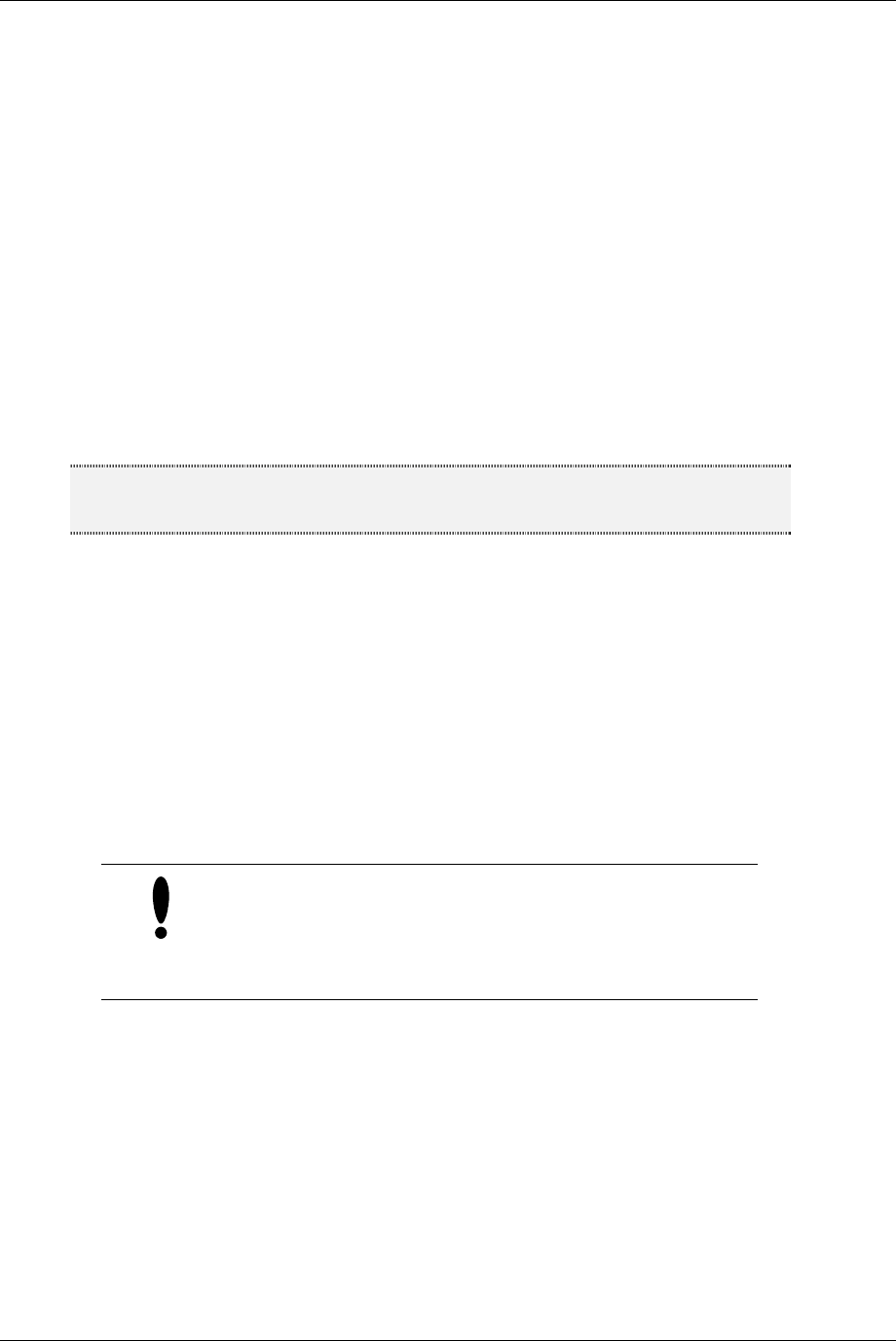
InfoProx Entry Getting Started
Reader Types
Software House manufactures three versions of readers: EtherProx Entry, InfoProx
Entry, and InfoProx Exit. The EtherProx Entry is a door control unit that is controlled
through web-based software. The InfoProx is a standalone door control unit that
contains memory and data; the InfoProx Exit works with the InfoProx Entry or the
EtherProx Entry.
Since all the readers look alike, it is important to understand the SPASS identification
codes that appear on the back of the units in order to identify the readers and to verify
that you have the correct type of reader for your installation. On the back of each unit,
the SPASS code appears, as follows:
· IPE: InfoProx Entry
· IPX: InfoProx Exit
· EPE: EtherProx Entry
Note The InfoProx Entry can be used only as an Entry Reader; an Entry Reader
cannot be used as an exit reader.
Preparing to Install InfoProx
There are several ways to install an InfoProx reader. You can use an optional Door Interface
Unit (DIU) or reverse the Entry and Exit readers in order to comply with UL 294. A DIU is an
option that provides power for the readers and additional inputs, outputs, and alarms. You
can wire the door controls to the DIU, making the installation UL 294-compliant.
If you install readers for only inside access control and not for outside access control, your
installation does not have to comply UL 294 requirements.
When you install the Entry reader on the secure side of the
door, the wiring is not accessible during an attempted
break-in. With this type of installation, the Transaction report
will show an entrance as Access granted - Exit and an exit
as Access granted – Entry.
Software House 7
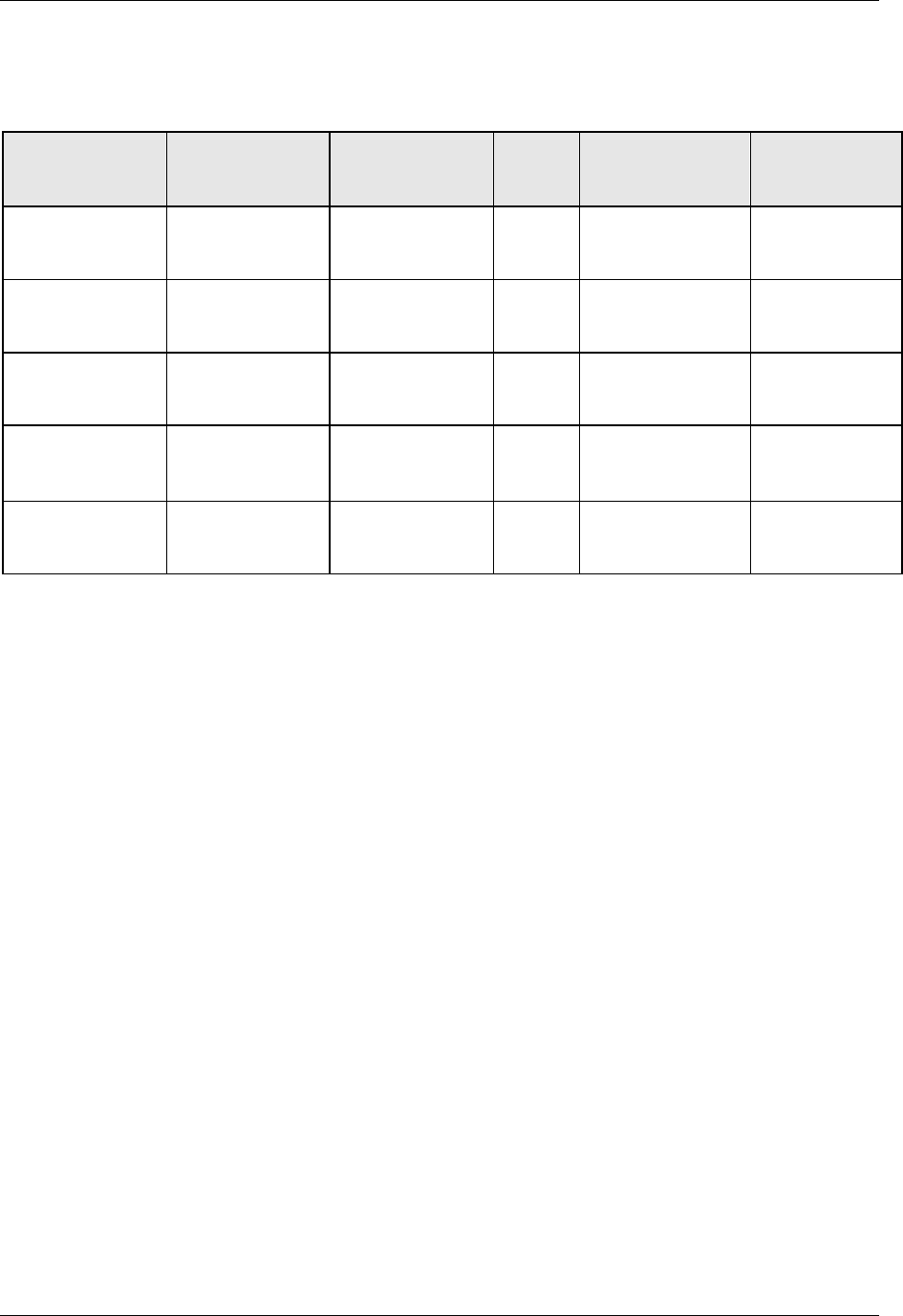
Introduction InfoProx Entry
The following table contains the secure and traffic control installation configurations for entry
hardware, exit hardware, DIU, door control wiring, and sounder wiring.
INSTALLATION ENTRY
HARDWARE
EXIT
HARDWARE
DIU DOOR CONTROL
WIRING
SOUNDER
WIRING
Traffic control
(see Figure 2)
Entry reader REX switch No Entry reader Not
applicable
Traffic control
(see Figure 3)
Entry reader Exit reader No Entry reader Not
applicable
Secure (see
Figure 4)
Exit reader Entry reader No Entry reader Exit reader
Secure (see
Figure 5)
Entry reader REX switch Yes DIU DIU
Secure (see
Figure 6)
Entry reader Exit reader Yes DIU DIU
The following diagrams contain the secure and traffic control installation configurations for
entry hardware, exit hardware, DIU, and door control wiring. The diagrams illustrate how to
configure the hardware. For details on connector pins and power wiring, see section 4,
“InfoProx Hardware Installation.” For details on the DIU, see the DIU Installation and
Operation Manual.
8 Software House
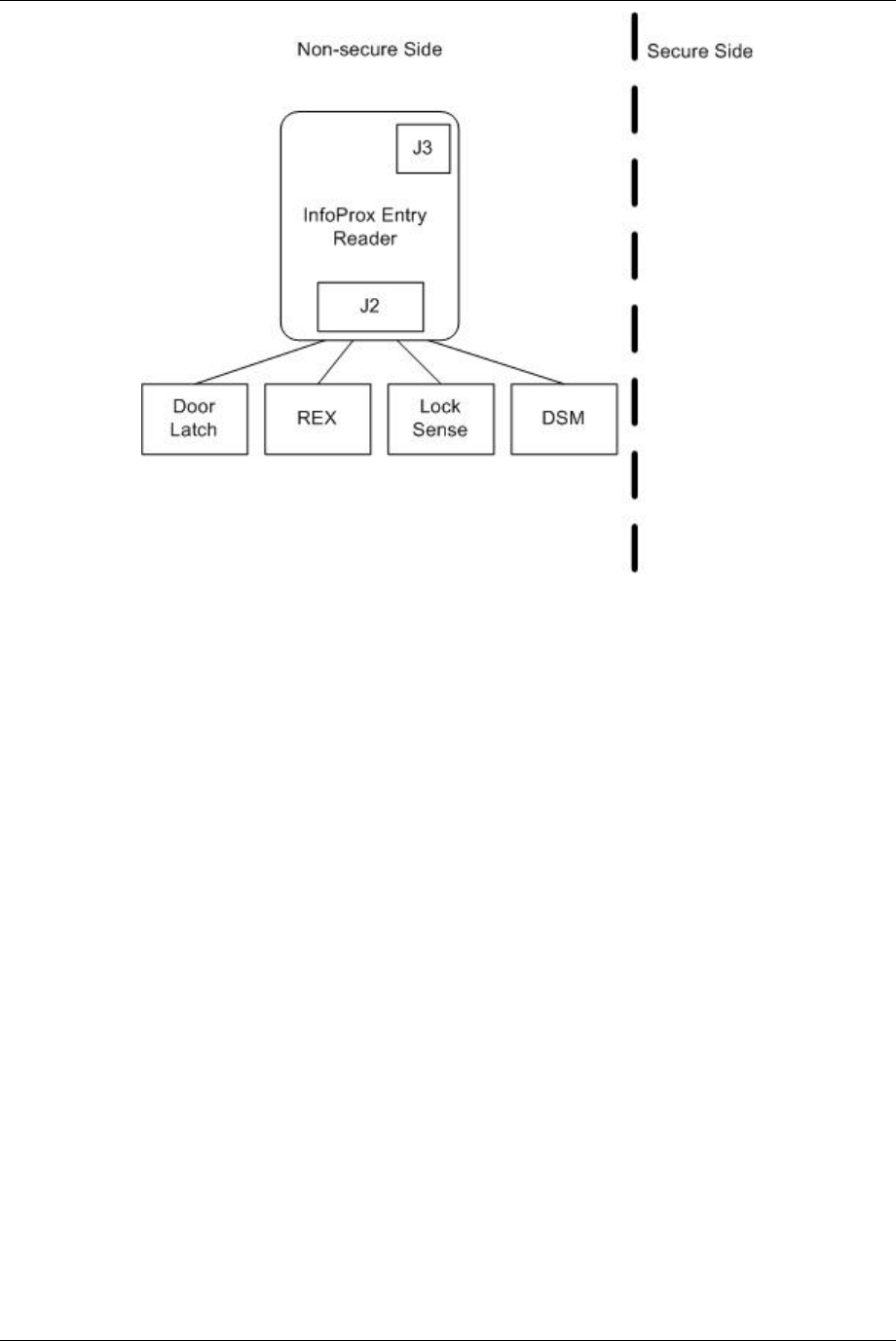
InfoProx Entry Getting Started
Figure 2: Traffic control with Entry reader and REX switch
Software House 9
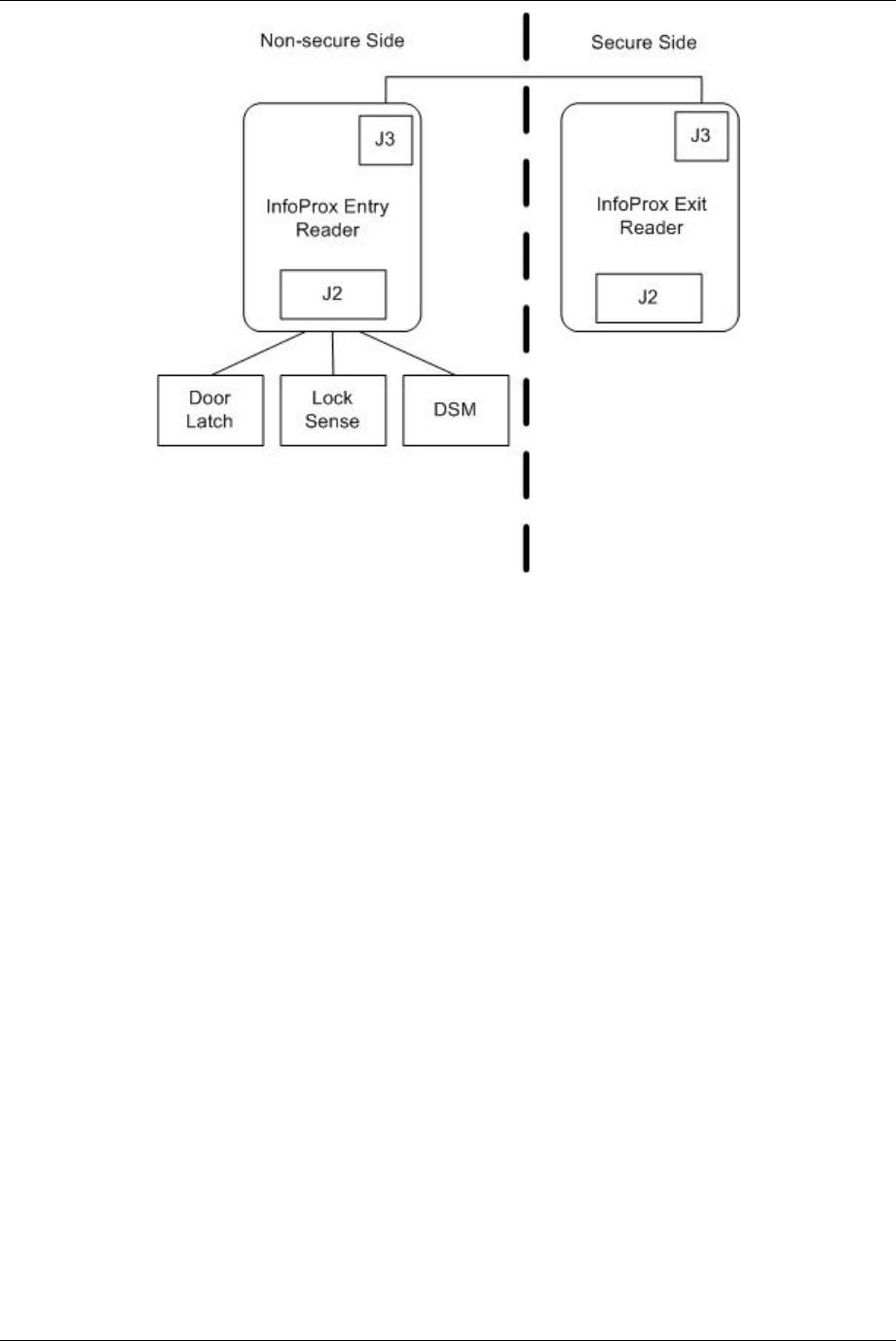
Introduction InfoProx Entry
Figure 3: Traffic control with Entry reader and Exit reader
10 Software House
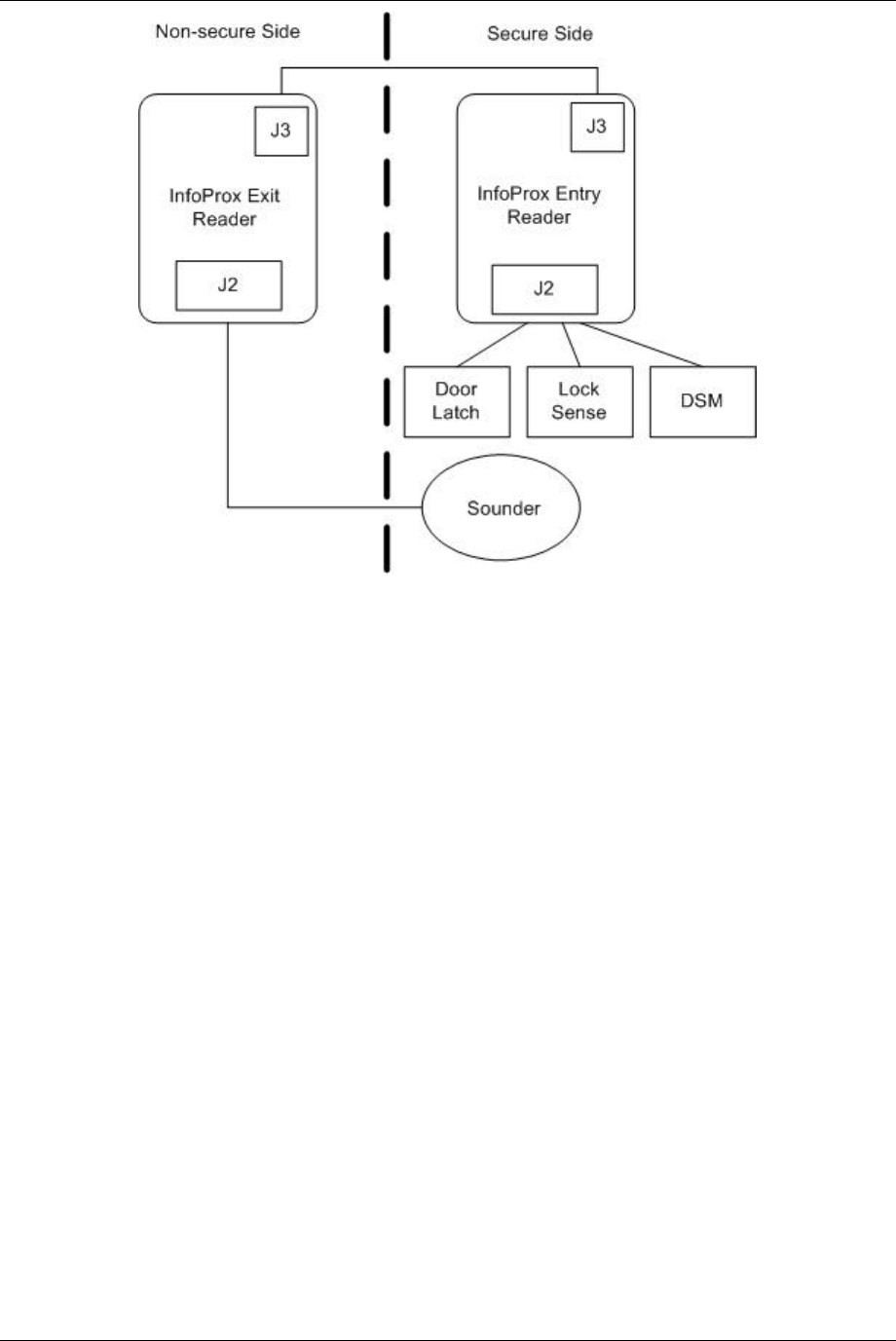
InfoProx Entry Getting Started
Figure 4: Secure with Exit reader and Entry reader
Software House 11
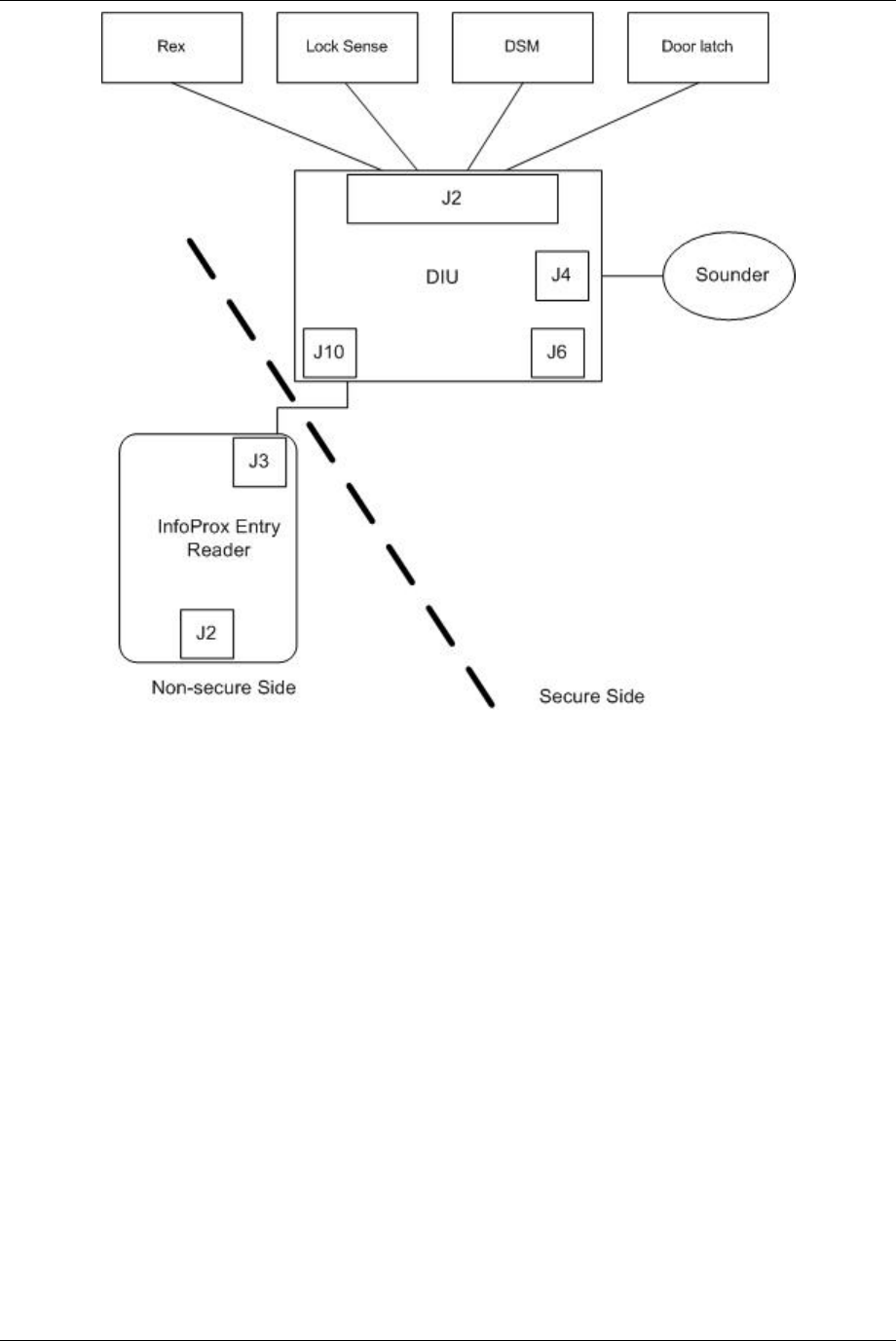
Introduction InfoProx Entry
Figure 5: Secure with Entry reader, DIU, and REX switch
12 Software House
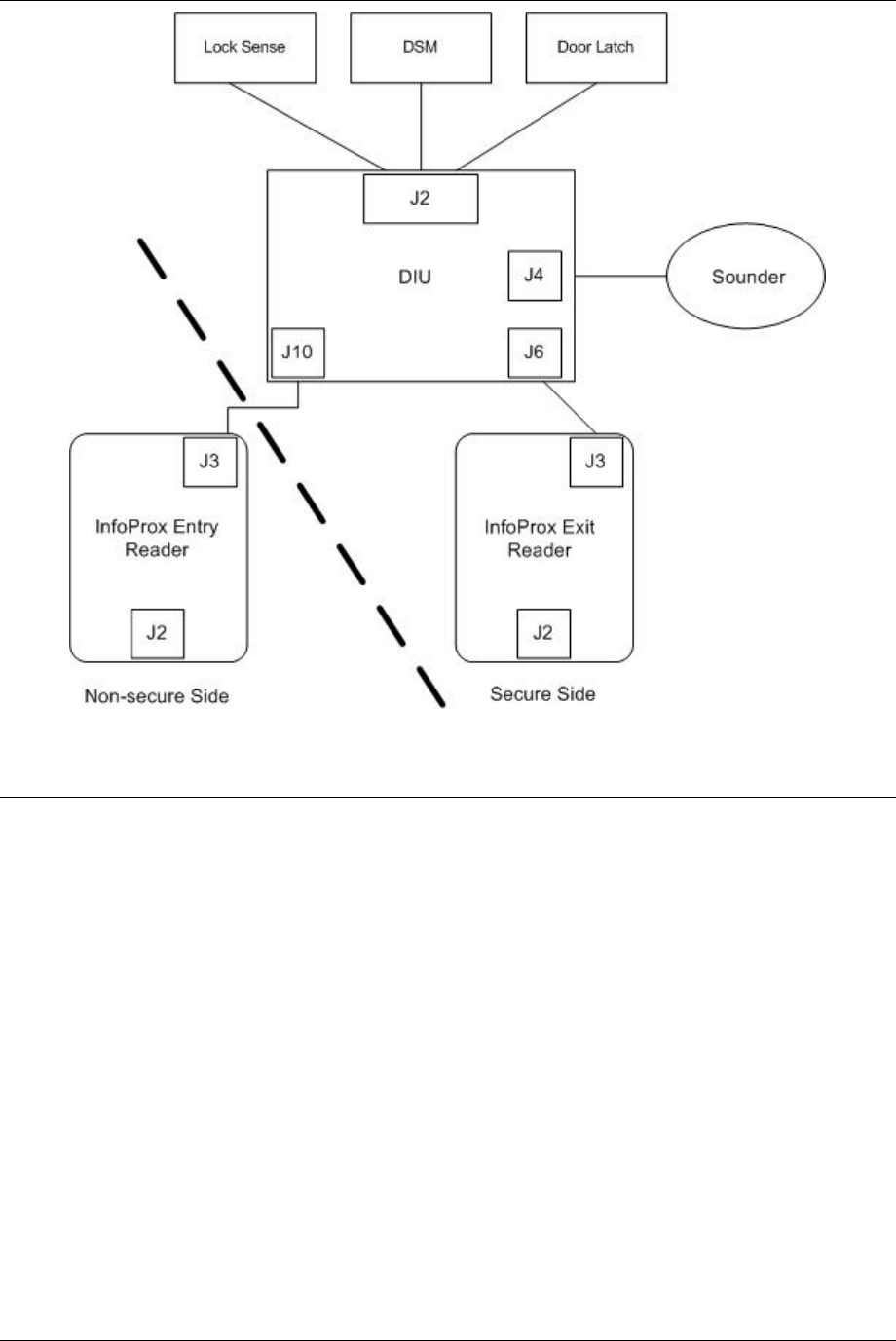
InfoProx Entry Getting Started
Figure 6: Secure with Entry reader, DIU, and Exit reader
Software House 13
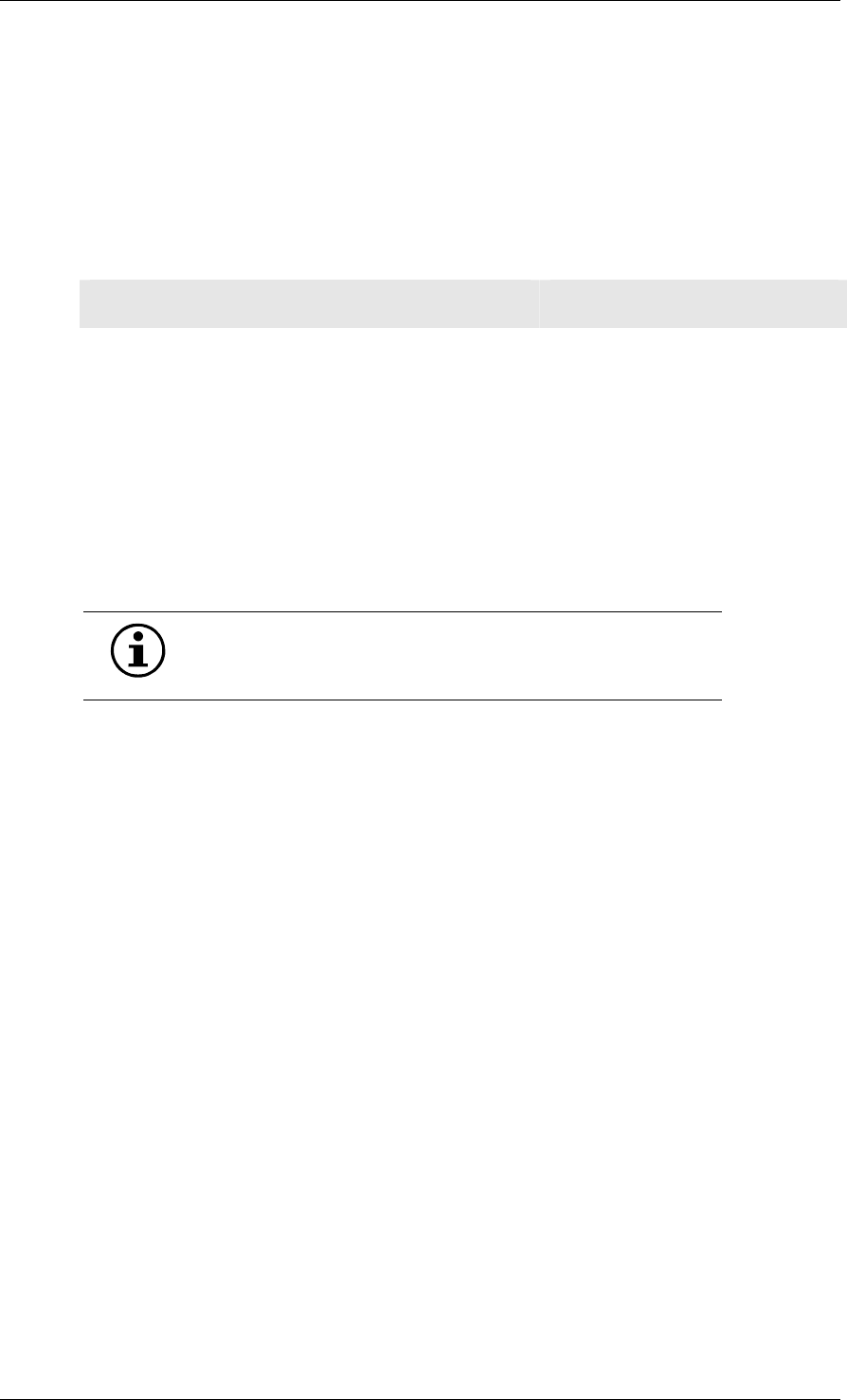
InfoProx Hardware Installation InfoProx Entry
4. InfoProx Hardware Installation
The enclosure is designed to mount directly onto a standard UK or European (French)
electrical containment box (USA installations require an adapter plate), and standard
conduit and fittings can be used. A clear polycarbonate screen covers the LCD for
protection.
Cables are pulled through the conduit and terminated in the containment box. The
following cables are required:
Cable Connector
2-pair (Belden 8723) cable for power and data 4-pin socket (J3)
5-pair (max) cable for inputs and output 10-pin socket (J2)
2-pair (Belden 8723) cable to exit reader
1 RS485 cable for female RJ45 connector
4-pin socket (J3)
4-pin socket (J5)
The various cables use Phoenix Contact connectors for the unit’s inputs and outputs.
The cables are secured into screw terminals. A flat blade screwdriver of 1/8” or less is
recommended.
The Phoenix Contact terminals used for the power and
communication connections can accommodate two leads
fitted into one terminal.
Two stainless steel tamper-resistant mounting screws are supplied and are concealed
behind specially molded covers when installation is complete.
14 Software House
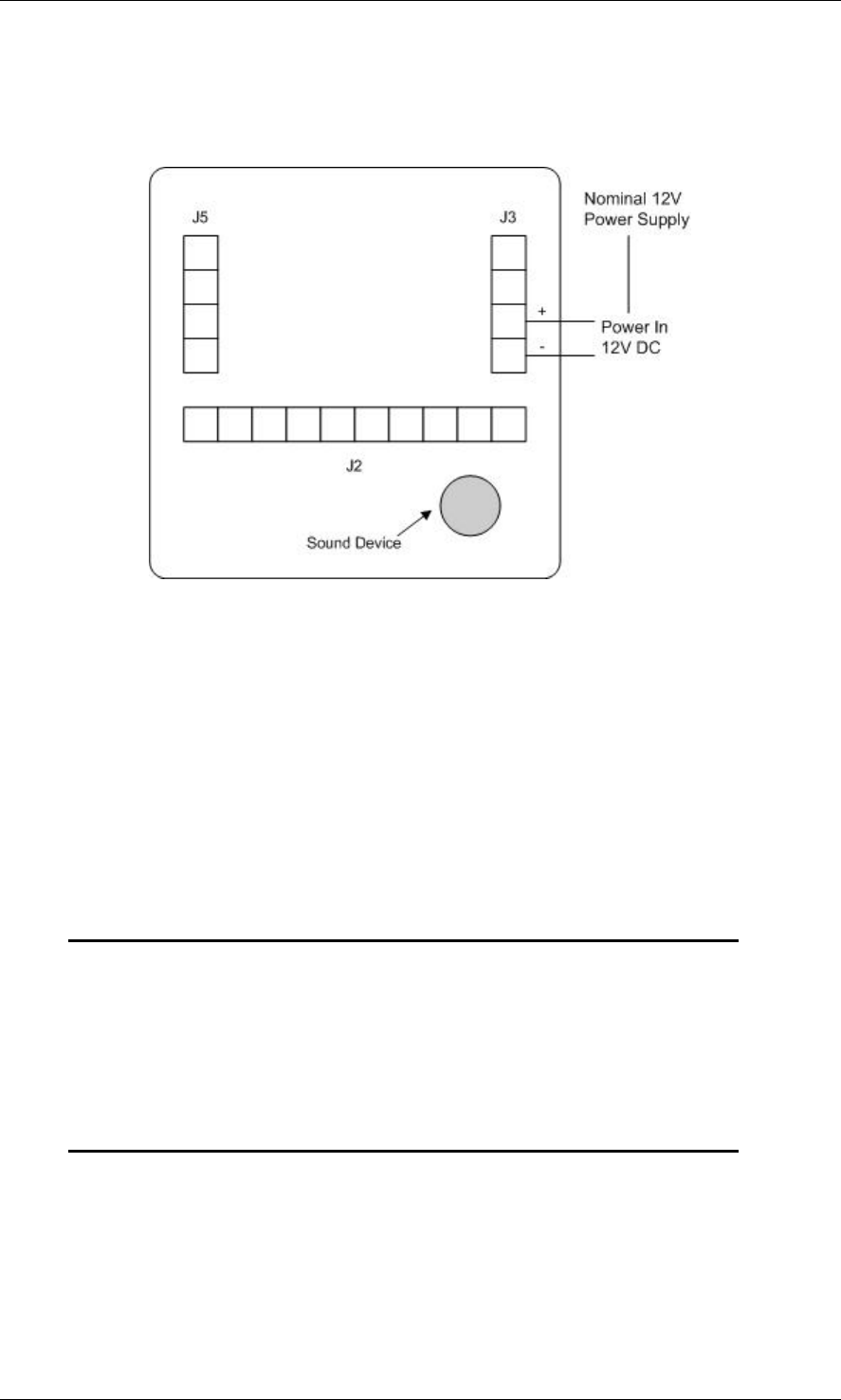
InfoProx Entry InfoProx Hardware Installation
Power Connections
Power is supplied to the board by a J3 connector. In Figure 2, the diagram
identifies the location of the terminal and power connections:
Figure 2:Terminal and Power Connections
The total cable length between the power supply and the reader depends upon the
cable used and whether or not an exit reader is connected. See the following
instructions regarding voltage:
1. For long cable runs, use Table 1, Voltage Table, to figure the voltage drop of
the cable between the power supply and the reader.
2. Subtract the result from the power supply’s output voltage.
3. If the result is greater than 7.0 volts, the wiring is adequate. If not, use heavier
(lower gauge) wire or a power supply with a higher voltage output.
Example: If you use a 22AWG wire with a 12-volt power supply 300 feet
away from the readers, the voltage drops to 7.2 volts at the
reader. Using Table 1, Voltage Table to calculate the voltage,
multiply 3 (300 ft) times the 1.6V drop = -4.8 drop for the 300
ft. span. Subtracting 4.8 from the 12V supply = 7.2. A voltage
of 7.2 at the readers is sufficient power to operate the readers
above the 7V minimum required. In this example, the total
distance from the power source and the exit cannot be more
than 300 ft.
Software House 15
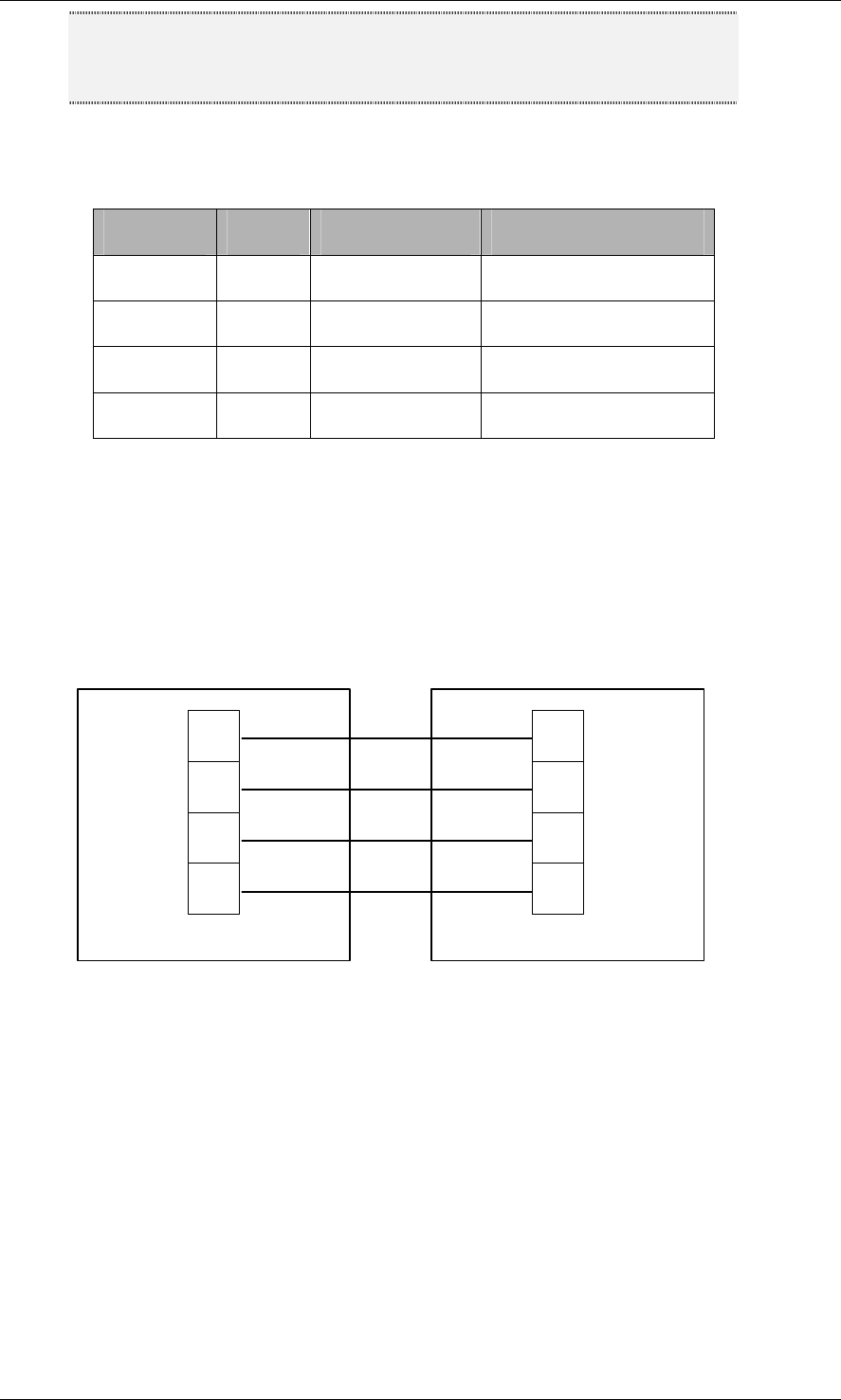
InfoProx Hardware Installation InfoProx Entry
Note The reader requires a supply of 5V regulated for 180mA from 7 – 15V DC in.
Power supply inputs are filtered, Transzorb and reverse voltage protected
(250mA max).
The following table displays the voltage drops per 100 feet and 100 meters.
Exit Reader Wire Size Voltage Drop/100 ft. Voltage Drop/100 M
Y 18 AWG 0.64V 1.95V
Y 22 AWG 1.6V 4.9V
N 18 AWG .38V 1.17V
N 22 AWG 0.96V 2.9V
Table 1: Voltage Table
Exit Reader Connections
The exit reader is connected to the entry reader through a two-pair cable,
providing power and communications. The connection is from connector J3 on the
entry reader (as shown in Figure 3) to connector J3 on the exit reader, and is
connected at both ends with a four-pin Phoenix Contact socket.
J3
InfoProx Exit InfoProx Entry
J3
A
B
+
-
A
B
+
-
Figure 3: Exit Reader Connections
The recommended interconnecting cable is Belden 8723 or equivalent. It is not
necessary to connect the drain wires in the cable. You can cut the drain wires off
flush with the jacket.
Following is a diagram showing the InfoProx connected to both an exit reader and
a PC.
16 Software House
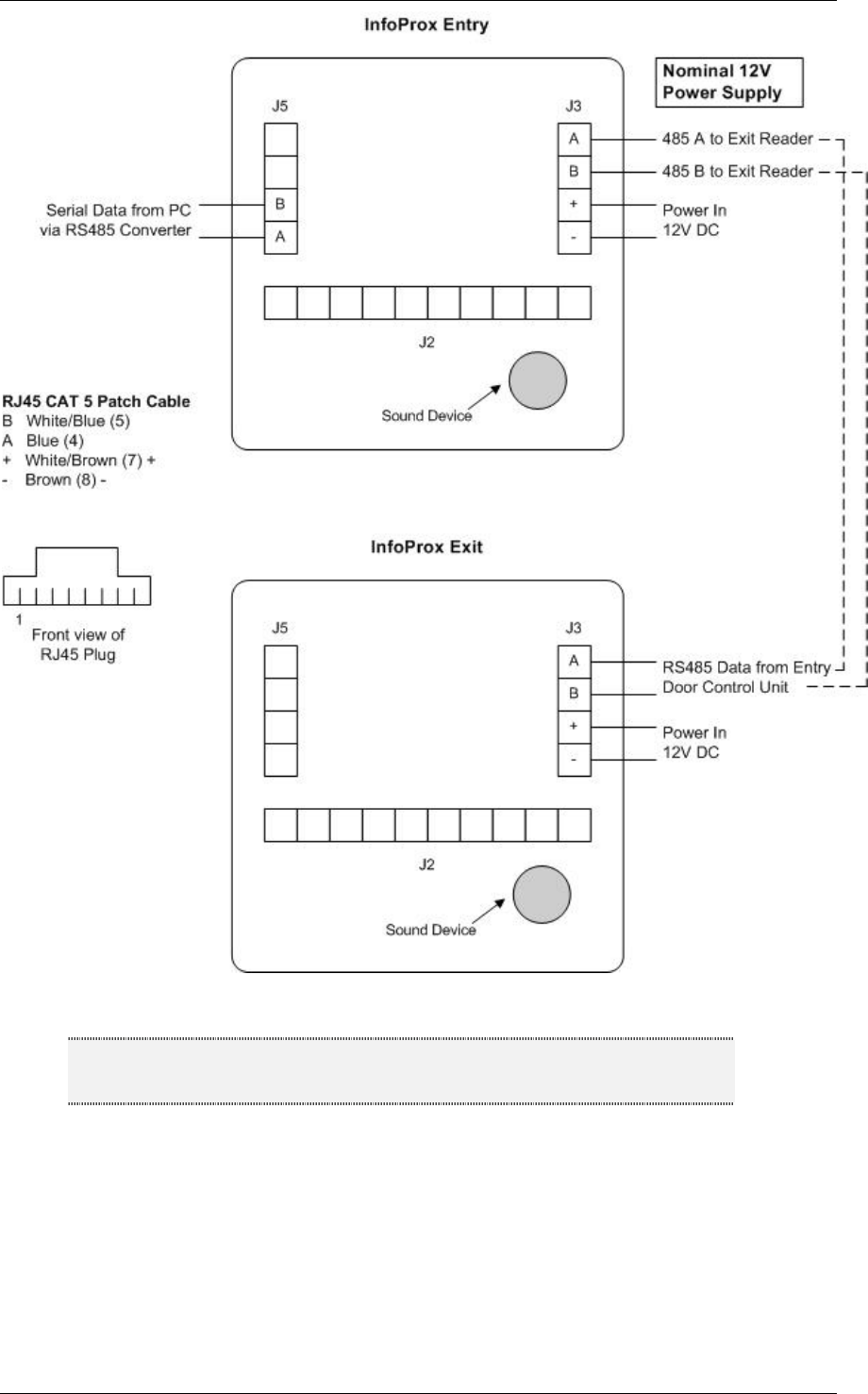
InfoProx Entry InfoProx Hardware Installation
Figure 4: InfoProx connected to exit reader and PC
Note In some cases, a blue wire will be blue/white and a brown wire will be
brown/white.
Reader Inputs and Outputs
The reader has four analog inputs. For standard door mode, the following applies:
· Input 0 monitors door position (NC)
· Input 1 monitors lock status (NC)
Software House 17

InfoProx Hardware Installation InfoProx Entry
· Input 2 is for request to exit (NO)
· Input 3 is spare. (NC)
The InfoProx Entry door control unit has a single-pole relay with a set of dry
contacts rated at 5 amps at 30 volts DC maximum. The common and normally
opened connections are available on pins 9/10 of J2. For normal door mode, this
relay is reserved for door strike control (the relay operates when a valid card is
presented). The four inputs and the relay output are located in a 10-pin Phoenix
contact connector J2, as shown below. The relay can be configured as “Powered
to Unlock” or “Powered to Secure”.
CNO J2
Relay
Contacts
1
Input 3
(spare)
Input 2 Input 1 Input 0
2345678910
Figure 5: Inputs and Outputs on J2
The power supply must have sufficient capacity to operate the door strike, as
indicated in Table 1. Three optional switches can be connected.
· The door state monitor is a normally closed switch (Input 0) whose
contacts are closed when the door is closed. The switch must be used
for the InfoProx Entry to generate the door held and door open alarms.
· The lock status switch (Input 1), if present, is usually part of the door
strike assembly, and must be connected if lock status monitoring is
enabled. This is a normally closed switch.
· The normally open exit pushbutton switch (Input 2) is used if the door
lock must be released to leave the secured area.
18 Software House
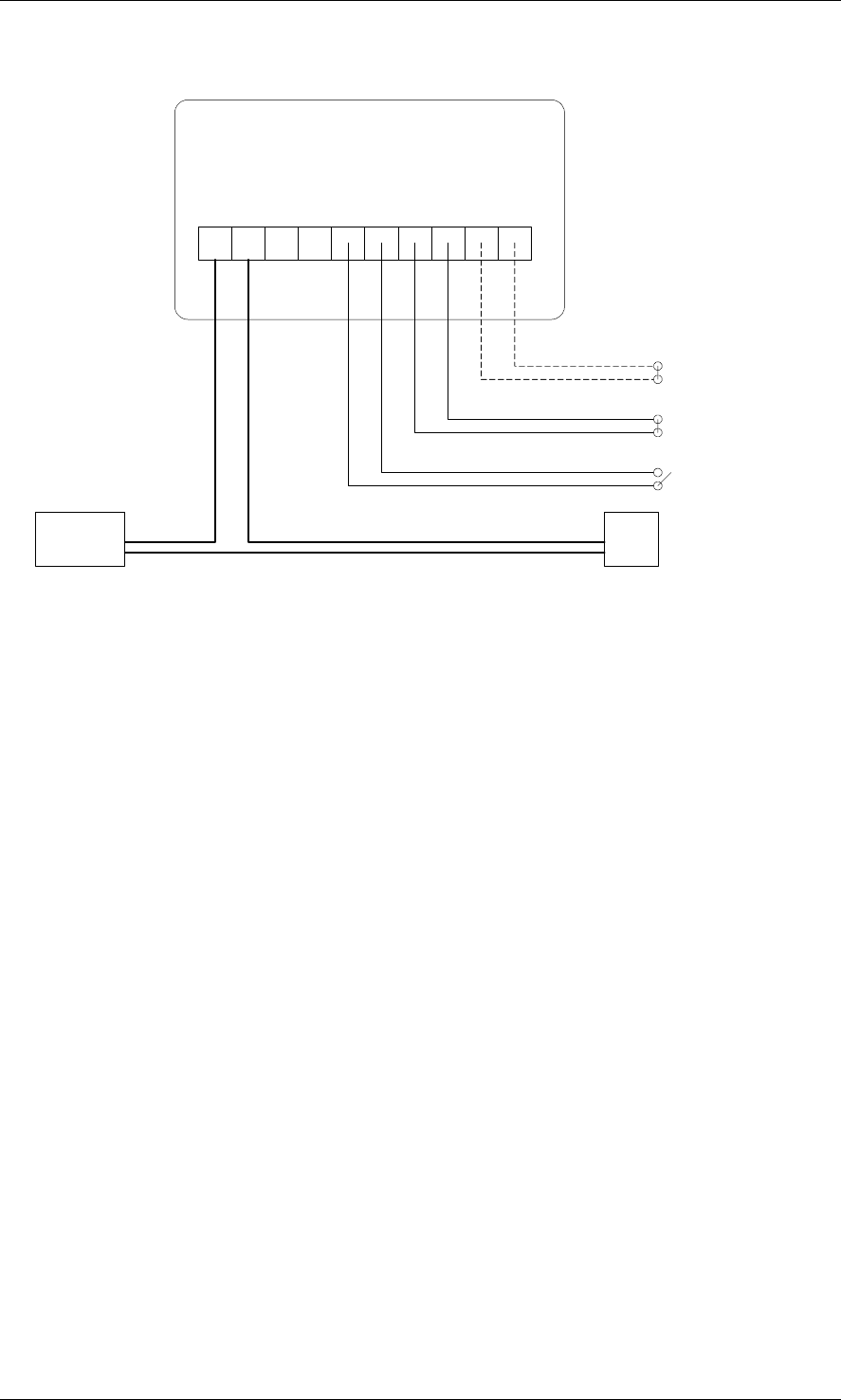
InfoProx Entry InfoProx Hardware Installation
Figure 5 illustrates the typical door connection modes.
CNO J2
12345678910
InfoProx Entry
Door State
Monitor (NC)
(Optional)
Lock Status
Switch (NC)
(Optional)
Exit Pushbutton (NO)
Optional
Door
Strike
Door Strike
Power Supply
Figure 6: Typical Connections to a Door
Software House 19
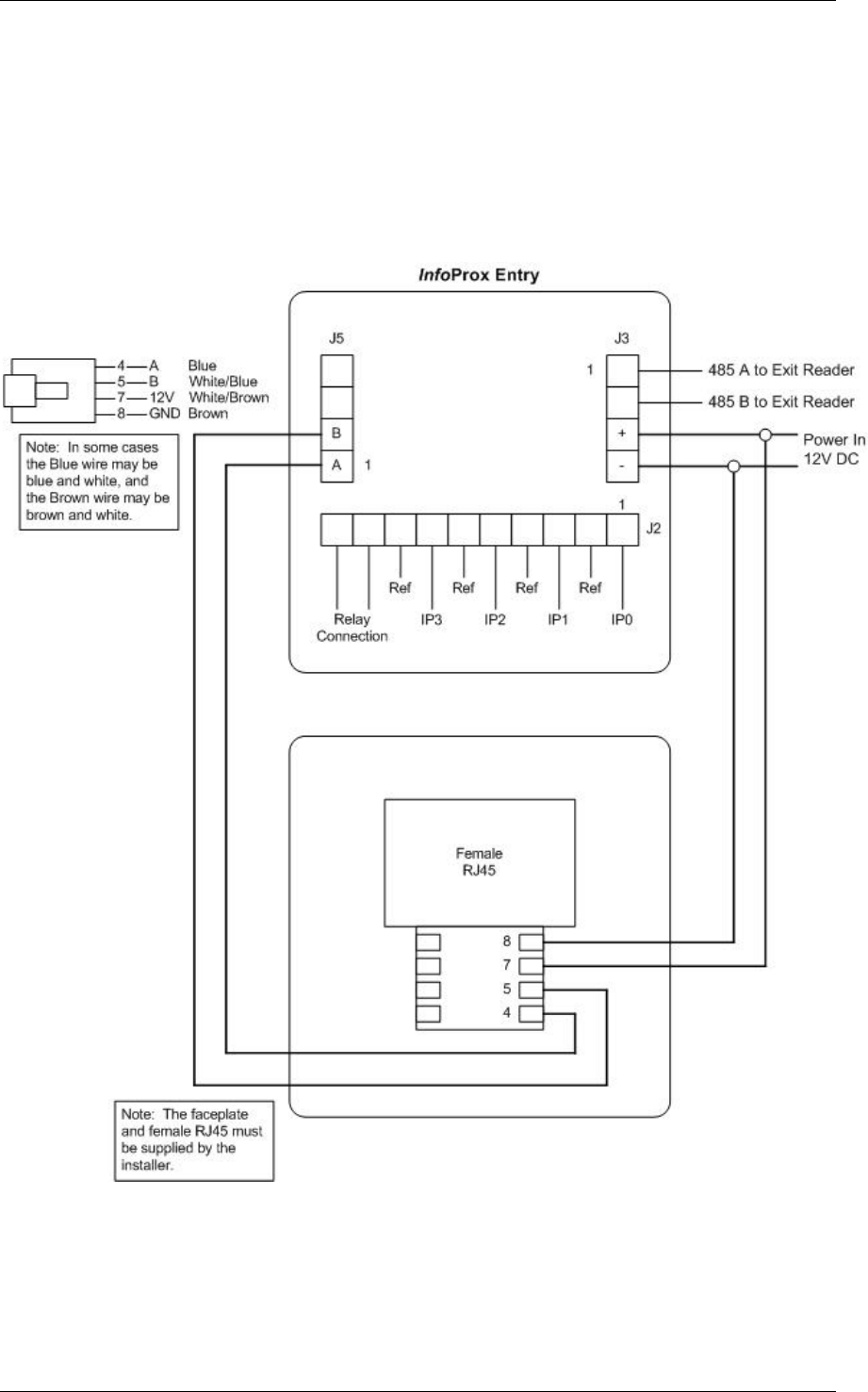
InfoProx Hardware Installation InfoProx Entry
InfoProx Entry Wiring: RJ45 Connections
If you use the InfoProx Entry in conjunction with the software utility, an RJ45
faceplate can be installed, preferably on the secure side of the door. The
installation of the faceplate facilitates the connection between the PC and the door
control unit by means of a patch cable through the RS485/232 converter. The
converter is connected to a serial port on the PC. Figure 6 illustrates the rear view
of a faceplate connection.
Figure 7: RJ45 Faceplate – Rear View
Power to the RS485/232 converter is supplied from the Phoenix Connector J3 to
pins 7 and 8 on the rear of the RJ45 female connector.
20 Software House

InfoProx Entry InfoProx Hardware Installation
Data communication between the reader and the PC is supplied from Phoenix
Connector J5 to pins 4 and 5 on the rear of the RJ45 female connector.
Software House 21
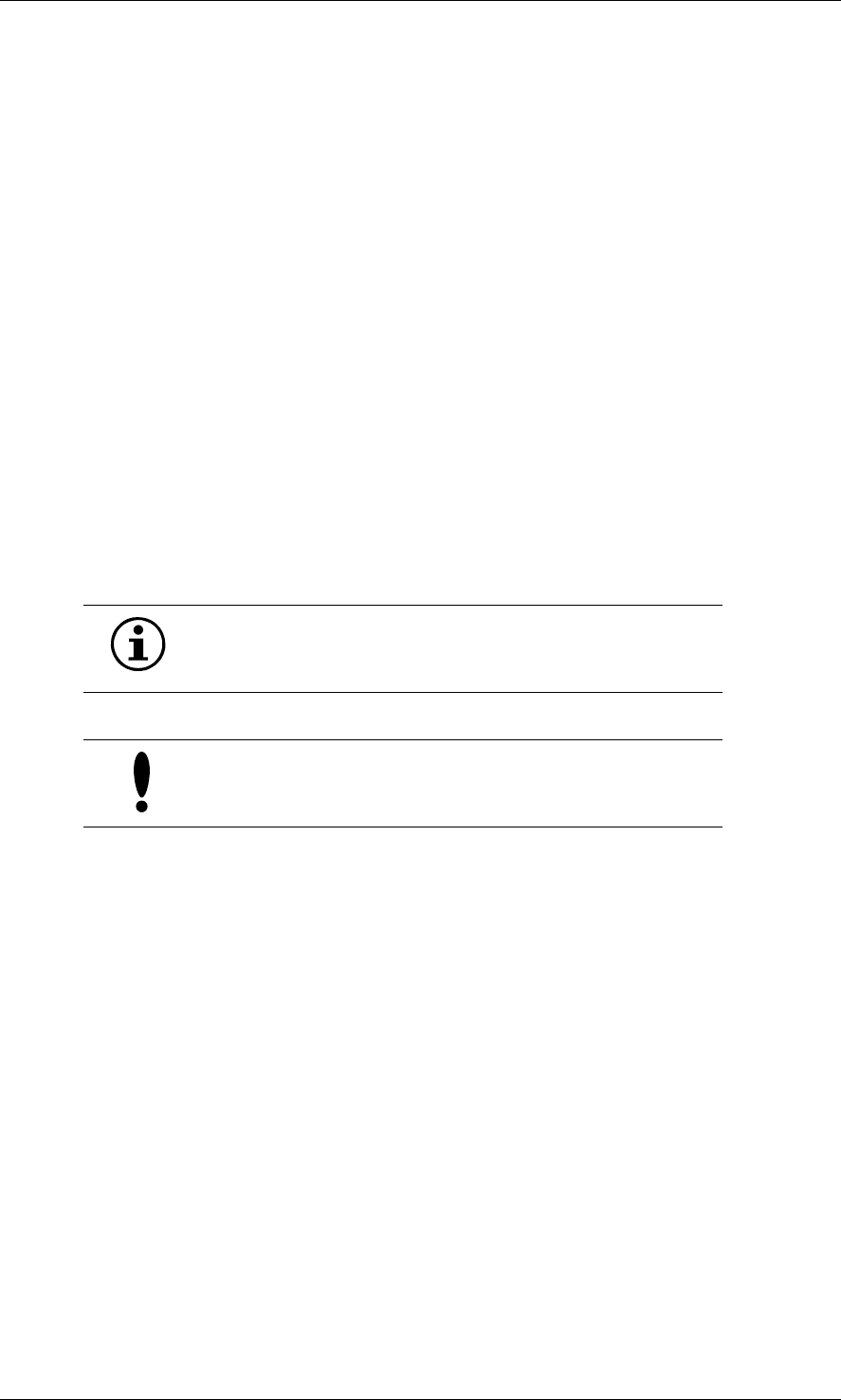
InfoProx Hardware Installation InfoProx Entry
Installation Checklist
1. Refer to Figure 2, Terminal and Power Connections. Remove the shipping
sticker from the sounder opening.
2. Connect the power source to verify the InfoProx Entry door control unit is
working properly.
3. Recheck the wiring connections; ensure that all terminal screws are securely
tightened.
4. Secure the adapter plate to the containment box (if required for a U.S.
installation).
5. Position the reader over the containment box and tighten the two security
screws, taking care not to over tighten.
6. To prevent light from triggering the tamper sensor, verify that there are no
gaps around the unit.
7. Fit the cover buttons firmly in place over the screws.
To remove the cover buttons, use a screwdriver on the
outer edges to lift the covers.
Once the tamper sensor on the back of the unit is activated,
the reader will sound an alarm when exposed to light.
22 Software House
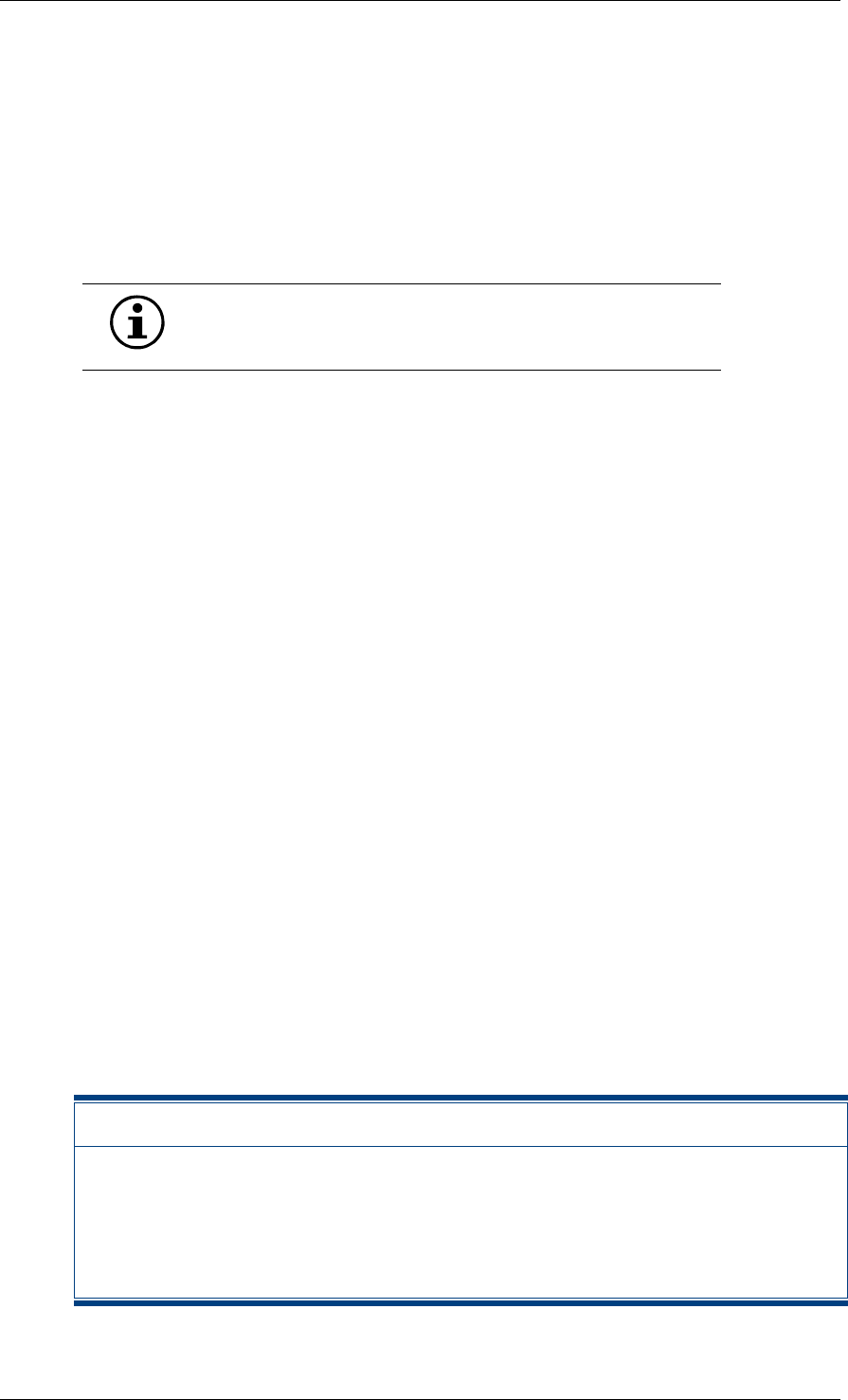
InfoProx Entry Configuring the Door Control Unit
5. Configuring the Door Control Unit
When connecting power to the InfoProx Entry door control unit for the first time, the unit
initializes a default configuration. Once the unit is powered, the LCD screen displays the
idle prompt:
InfoENTRY 16:30
Present Card
16:30 is the time presented in military format. Section 3
describes how to configure your local time.
Access to all menus is through the Administration menu. The administration menu
provides the operational features of InfoProx Entry and control of the following:
· Administrator password insertion (only at installation)
· Addition or deletion of access cards
· Searches for access cards
· Operational configuration of the reader (time zones and door modes
inputs)
· Diagnostic testing of the reader
· Administrator password change
· Backing-up the reader database to a PC
· Displaying transaction information (card/alarm information)
Details about configuring the unit and how to use the menu options are explained below.
First Time Access to the Administration Menu
When the reader is in stand-by mode (powered-up, waiting for a transaction), the
screen displays the idle prompt:
InfoENTRY 16:30
Present Card
Accessing the Administration menu
Press # 0 Ù at the keypad. The menu of options displays on two screens.
0-Del, 1-Add
2-Find, 3-Config
4-Diag, 5-Pword
6-Backup
Software House 23
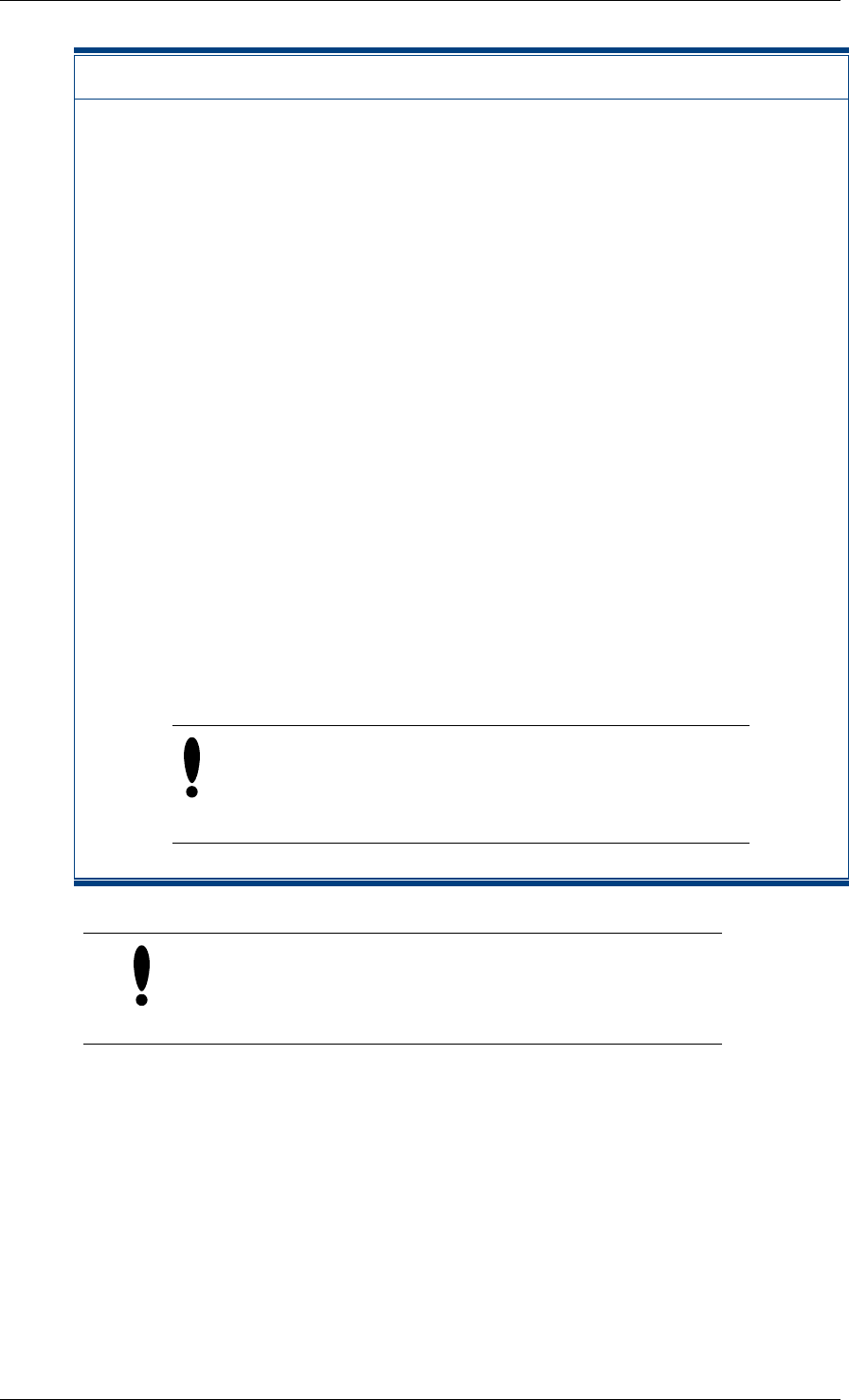
Configuring the Door Control Unit InfoProx Entry
Accessing the Administration menu for the first time
1. At the keypad, press # 0 Ù.
The following prompt appears:
Set Password
2. Enter a password.
The door control unit should emit a beep with each key press. An
asterisk (Ù) will appear on the bottom line of the display, indicating that
each key press is recognized.
The following prompt appears:
Verify Password
3. Re-enter the password for confirmation.
The following prompt appers:
Password OK
The display then returns to the stand-by screen:
InfoENTRY 16:30
Present Card
If the administrator of the door control unit has not set
up a password, a prompt appears asking you to set a
four-digit password.
You must record the password and keep it in a safe
location. If you forget the password, there is no way to gain
access to alter any part of the reader setup. You must return
the reader to the dealer or manufacturer for reprogramming.
24 Software House

InfoProx Entry Configuring the Door Control Unit
Accessing the Administration Menu after Password Setup
After the password has been setup, you can enter the password when the reader
is in standby mode.
Accessing the Administration menu after password setup
1. At the standby screen, enter # 0 Ù then the password.
The first Administration menu appears.
0-Del, 1-Add
2-Find, 3-Config
2. To go to the second menu screen, press Ù.
The second Administration menu appears.
4-Diag, 5-Pword
6-Backup
Software House 25

Configuring the Door Control Unit InfoProx Entry
Getting to know the configuration setup
Becoming familiar with the terms used in the setup procedure will assist you in the
configuration setup of the door control unit. Here are the terms and the preparation
requirements you need to know.
Terms to Know Before Configuration Set Up
· Config Time: This is your current time in 24-hour format, represented
by current hour and minutes. T=HH:MM DD/MM/YY.
· Config TZ: Configure Time Zone. A single time zone can be assigned
to a door control unit in order to facilitate cardholder access. Time zone
allows you to split the day into two sections, Normal mode (i.e., Card
plus Pin) and Time Zone mode. Time Zone mode can be either Free
(Door unlocked), Swipe (Card Only), or Pin (such as GIN).
Note The Pin mode does not refer to the Pin associated with a card, but rather the
Global Identification Number (GIN) that can be used by all personnel once
the Time Zone mode is set to Pin.
The three Time Zone modes are less restrictive than the Normal mode.
The Time Zone is usually set for the day shift and the non-Time Zone is
the rest of the 24 hours.
· Config TZ Start: Configure Time Zone Start Time or the time at which
the Time Zone will change from Normal to one of the other three
choices.
· Config TZ End: Configure Time Zone End Time or the time at which
the mode will change back to Normal.
· Config TZ Type: There are four types of access control associated
with time zones: Normal Mode (card and PIN); PIN-Only Mode; Free
Mode (door open or unrestricted-access mode; Card-Only Mode. These
modes are explained in section 3.
· Config I/Ps: Configure the unit’s inputs. There are four inputs: 0 to
monitor door position; 1 to monitor lock status; 2 to monitor request to
exit (RTE/RTX) switch status; and 3 is a spare input. These inputs are
set at the factory. If users want to re-configure these inputs, they
should contact your Dealer or Technical Support (see page 58).
· Set Drsk: Set the Door Strike Time. This setting determines the span
of time a door lock will remain open after a card has been swiped or a
PIN entered. The default time is five seconds. The door strike relay will
automatically reset when the door is opened.
· Set Drclose: Set the Door Close Time. This setting determines the
span of time a door can remain open (door held) before an alarm is
triggered. The default time is 15 seconds.
· Set GIN: Set Global Identification Number. GIN is access without
cards during a Time Zone. For instance, if a Time Zone is setup from
26 Software House

InfoProx Entry Configuring the Door Control Unit
08:00 to 17:00, personnel who know the GIN are allowed access during
these hours, but after the Time Zone expires, entrance is allowed only
to cardholders. The default GIN is 1234.
· Set Scode: Set Site Code. If the site code is entered into the InfoProx
door control unit, then all cards read by the unit must have this site
code to be valid and to enable access.
If no site code is configured during setup, the unit will allow any card,
regardless of the site code, to be added and used to enable access.
However, this condition may not provide the degree of security desired.
By default, the site code is set to –1. If the site code is set to
0 by the user, it will revert to the default or –1. This default
allows any added card to be used as valid.
If the site code is enabled after cards are entered, the unit
will check the validity of all cards in the unit’s database and
match to the site code. If the previously entered cards have
no site code or have site codes that do not match, then the
cards will be invalid and will not work to enable access.
To preview the modes, users should view the Configuration screens by pressing
#. After previewing the Set Scode screen, pressing # will return users to the
Administration menu, where they can again enter 3-Config to start the
configuration process.
Before you begin configuring
The following list prepares you for the material you will need for the setup
process.
· Current time, including day, month, and year
· If the optional time zone setup is desired, decide on a time zone time
parameter and who will be given access. You can have only one time
zone per door control unit. If no time zone is setup, then access will be
on a 24-hour clock and accessible with a valid card and PIN associated
with the card. If there is no PIN associated with the card, then access
will be allowed by presenting just the card, assuming that it is a valid
card in the database.
· Determine if the factory defaults are adequate for door strike time and
door close time. If not, determine an appropriate time for the setup.
· If you are going to use a Global Identification Number (GIN) with a
number other than the default of 1234, use a 4-digit GIN.
· Optional site code
Software House 27

Configuring the Door Control Unit InfoProx Entry
Configuring the reader
Now you are ready to configure your reader. Before you start, you need to be
aware that the Configuration mode screens are set to automatically change to the
next screen after five seconds. If this happens and your data has not been
entered, either return to the screen at the end of the automatic sequence or press
# to scroll through the rest of the screens and return to the Administration menu.
Press 3 to restart the configuration mode sequence.
Accessing the configuration setup
1. To access configuration setup, enter the key sequence (# 0 Ù).
2. Enter the password when prompted.
The Administration menu prompt appears.
0-Del,1-Add
2-Find,3-Config
3. Press 3 to access the Configuration Setup mode to access the
operational settings of the reader to be configured.
The Configuration Setup prompt appears
Config Time ?
0-Yes, Other-No
as the first screen in the configuration mode setup screens: Config Time;
Config TZ Start; Conf TZ End; Config TZ Type; Config I/Ps; Set Drsk;
Set Drclose; Set GIN; Set Scode
After you enter data on the configuration mode screen, the next screen in the
sequence usually appears automatically. However, confirmation by entering an Ù
will be required on some screens.
To skip or page through setup screens, press #. This will return you to the
Administration screen, where you can complete another task, reenter the
Configuration Setup modes, or exit.
28 Software House

InfoProx Entry Configuring the Door Control Unit
Configure Current Time
Current time is the user’s local time zone and not Greenwich Mean Time (GMT).
Configuring the current time and date
1. On the Config Time screen, press 0 to configure Current Time.
Config Time ?
0-Yes, Other-No
The following prompt appears:
T=HH:MM DD/MM/YY
T=hh:mm dd/mm/yy
2. Enter time in 24-hour format and enter the date as day/month/year.
T=HH:MM DD/MM/YR
T=08:30 15/01/02
Ù to accept
3. Press Ù to accept the displayed time and date.
If Ù is not pressed within approximately five seconds, the unit defaults
back to its default time and date.
Software House 29

Configuring the Door Control Unit InfoProx Entry
Configure Time Zone
The time zone configuration screen appears automatically after the Config Time
screen.
Configuring the time zone
Config Tz Start
0-Yes, Other-No
1. Press 0 to setup Start Time.
The following prompt appears:
TZone Off HH:MM
New TZone 00:00
2. Enter a four-digit value equivalent to the hour and minute to start
Timezone (i.e. 08:30). The span of the time zone is defined by first
entering the start time (Config TZone Start) and the end time (Config
TZone End) of the time zone.
As you enter the last digit, the following prompt appears
TZone=08:30
Ù to accept
3. Press Ù to accept the entered Timezone.
The prompt changes to:
Config TZone End
0-Yes, Other-No
4. Press 0 to setup an End Time.
The prompt changes to:
TZone End HH:MM
New TZone 00:00
5. Enter a four-digit value equivalent to the hour and minute when
Timezone is to end (i.e. 17:00).
After you enter the last digit, the display changes to:
TZ=17:00
Ù to accept
6. Press Ù to accept the displayed Timezone.
Note As each value is entered, the reader verifies that the value is
valid.
After pressing Ù, accepting the TZ End Time, the prompt appears
Confi
g
TZ T
yp
e
30 Software House
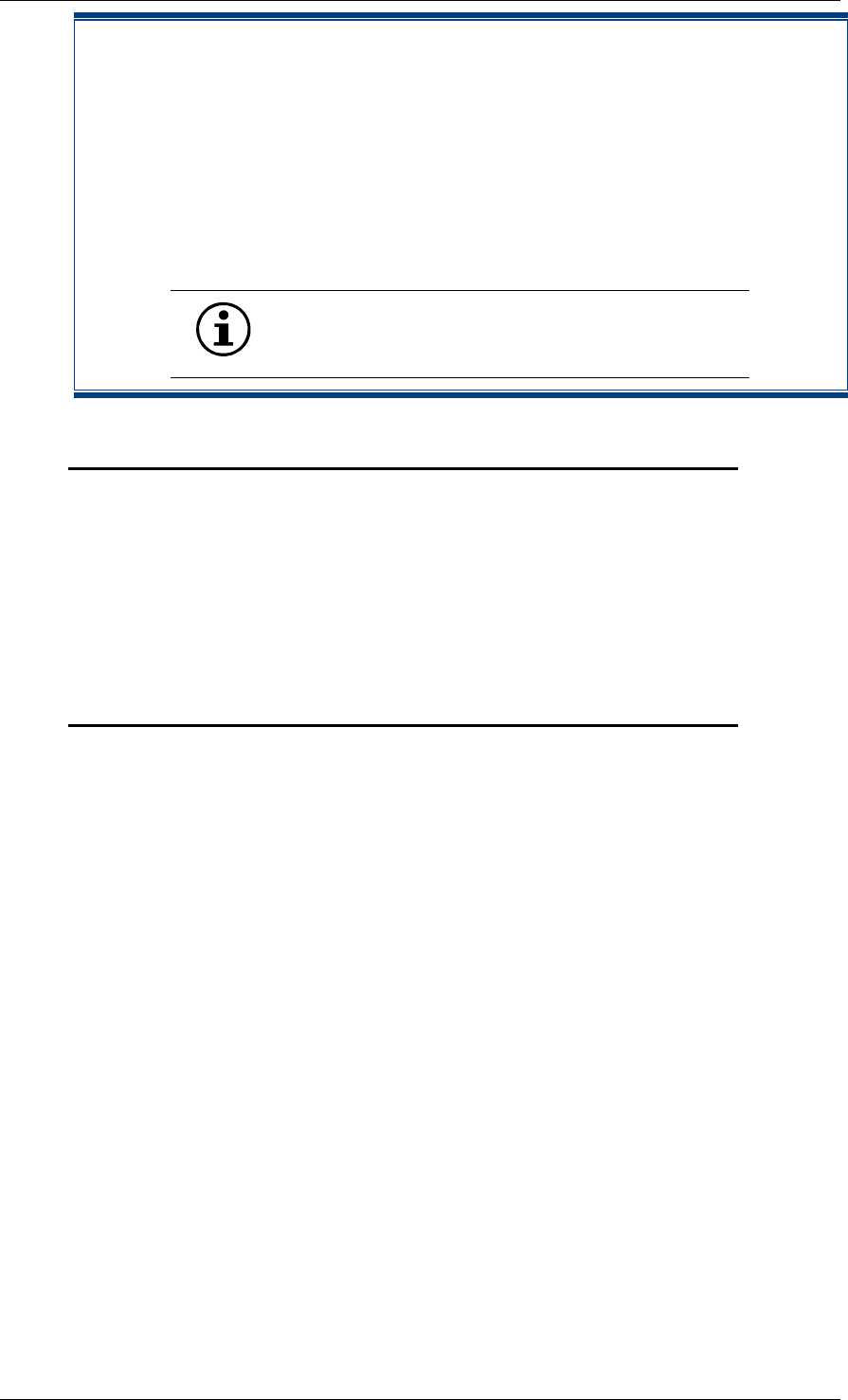
InfoProx Entry Configuring the Door Control Unit
0-Yes Other-No
7. Press 0 to setup time zone types, as in Section 3.7. Press any other
key or # to bypass this mode.
Once a time zone is configured and the time zone period starts, the
amber LED flashes until the time zone period ends. For example, if the
time zone that is setup starts at 08:30 and ends at 17:00, then at 17:01,
the amber LED stops flashing.
To disable a Time zone, reconfigure and set both
times to 00:00.
Example: Time zone allows you to split the day into two sections,
Normal mode (Card plus Pin) and Time Zone mode. Time Zone
mode can be either Free (Door unlocked), Swipe (Card Only),
or Pin (GIN).
Note that the Pin mode does not refer to the Pin associated
with a card, but rather the Global Identification Number (GIN)
that can be used by all personnel once the Time Zone mode is
set to Pin. The three Time Zone modes are less restrictive than
the Normal mode, so the Time Zone is usually set for the day
shift and the non-Time Zone is set for the rest of the 24 hours.
Software House 31
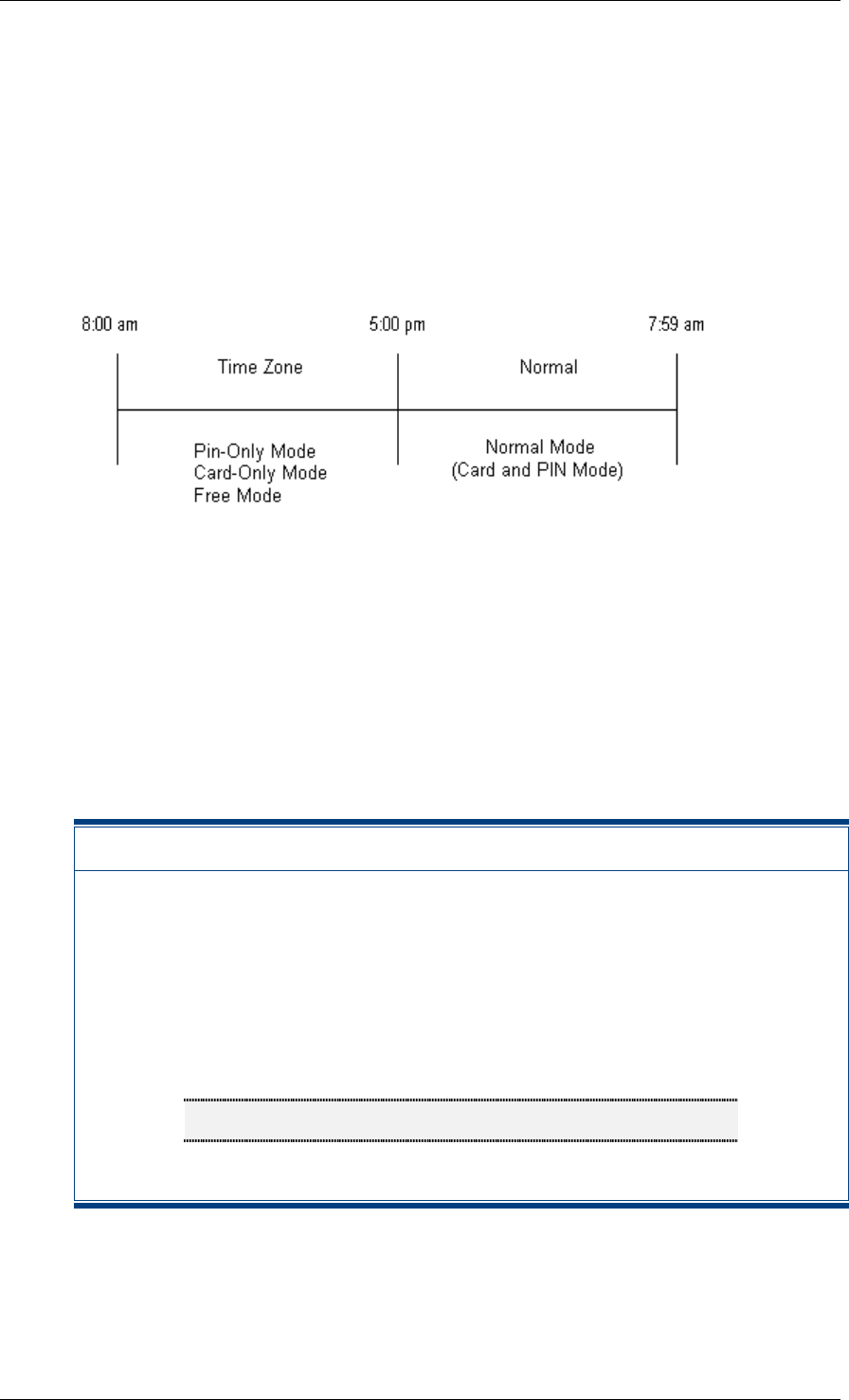
Configuring the Door Control Unit InfoProx Entry
Time zone types
Once Timezone start and end have been set, you can define an operating mode
by choosing a time zone type. If you don’t want to use time zone types, press # at
any time to bypass individual Timezone Types configuration.
Figure 8 illustrates the most common time zones between a start and end time of
8:00 am (08:00) and 5 pm (17:00).
Figure 8: Common time zone configuration
Because Normal Mode (Card and PIN) is the default mode for the reader, which
is in effect 24 hours, setting up a time zone for Normal mode is only useful for
weekends, holidays, or special situations. For instance, a time zone might be set
to Free or PIN from 08:00 to 17:00 Monday through Friday, but on weekends, the
administrator might set the time zone type to Normal, allowing access only with a
card. You could then set the time zone to Free or PIN on Monday, which allows
the time zone times to stay intact. Then the administrator only has to change time
zone types each week.
Configuring time zone types
1. At the Config TZ Type menu, press 0-Yes.
The following prompt appears.
1 Normal, 2-PIN
3-Free, 4-Swipe
Select one of the four menu choices. These menu items are described
on pages 24 ad 25.
Note This screen will display only if Config Time has been set.
32 Software House

InfoProx Entry Configuring the Door Control Unit
Configuring Normal time zone mode
This is the default mode, where access requires both a Card and a PIN.
1. Press 1.
The following prompt appears
TZ=Normal Access
Ù to accept
2. Press Ù to accept.
Configuring PIN time zone mode
In this mode, access is granted by using a GIN at the keypad without a card.
1. On the Config TZ Type menu, press 2.
The following prompt appears
TZ PIN ONLY
Ù to accept
This sets a PIN-Only Timezone, as in this example, a GIN.
2. Press Ù to accept.
Note When associated with a Time Zone, PIN refers to the Global
Identification Number (GIN) and not the PIN associated with
a particular card.
Software House 33
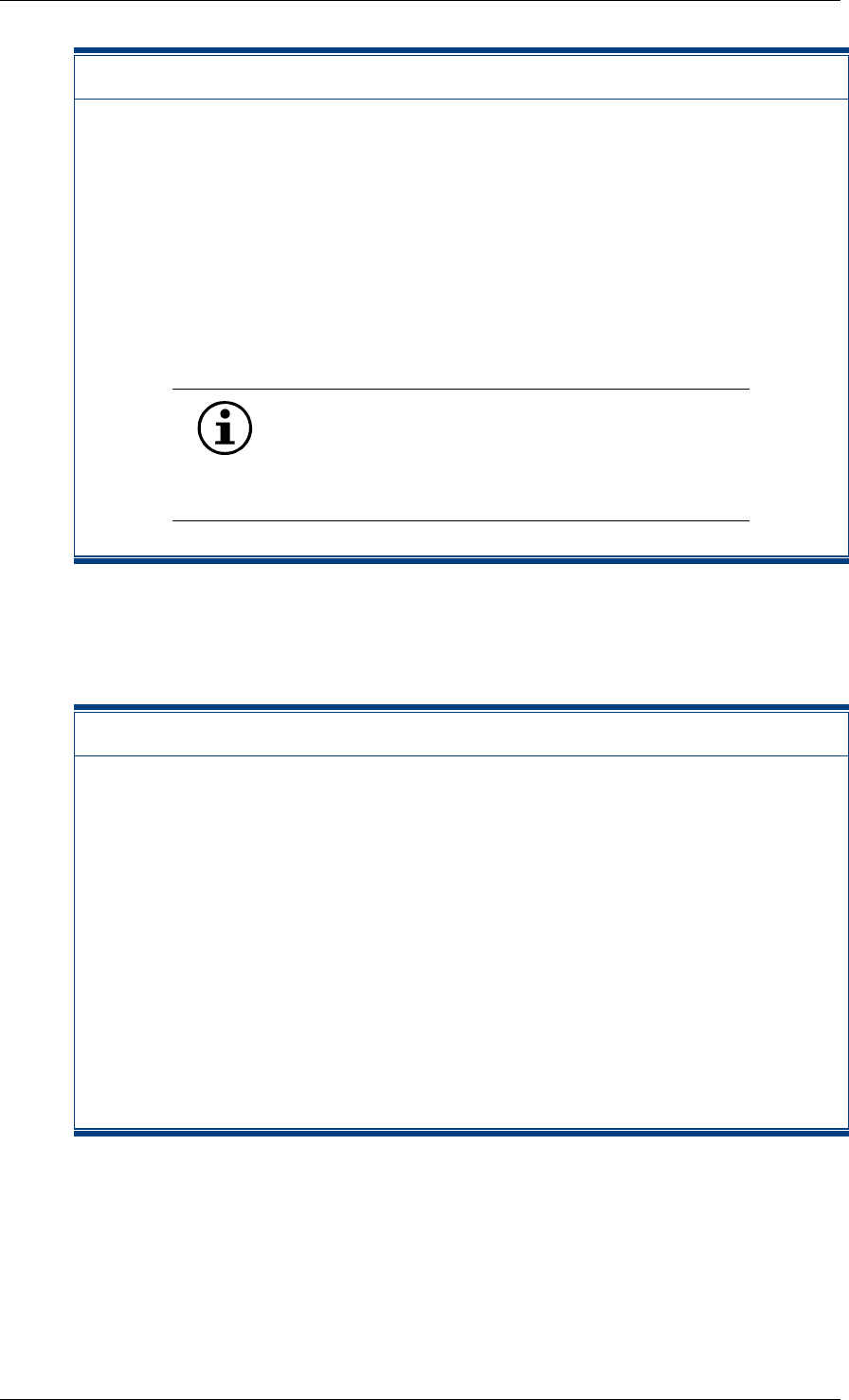
Configuring the Door Control Unit InfoProx Entry
Configuring Free time zone mode
Free mode allows access during the time zone without a card or PIN.
1. On the Config TZ Type menu, press 3.
The following prompt appears
TZ FREE ACCESS
Ù to accept
Free means No Card and No PIN Timezone.
2. Press Ù to accept.
This time zone would be useful in situations where
restricted access to a facility is not necessary during
normal operating hours. After the time zone ends;
however, Normal access with a Card and PIN will be
required.
Configuring Card-only time zone mode
You can gain access during the time zone only with a valid card. “Swipe” in
this context has the same meaning as “present card”. The door control unit
does not have a swipe read head.
1. On the Config TZ Type menu, press 4.
The following prompt appears
TZ=SWIPE ONLY
Ù to accept
This sets the time zone for Card-only access.
2. Press Ù to accept.
After selecting a time zone type and pressing Ù to accept, the Config I/Ps
screen will display.
34 Software House
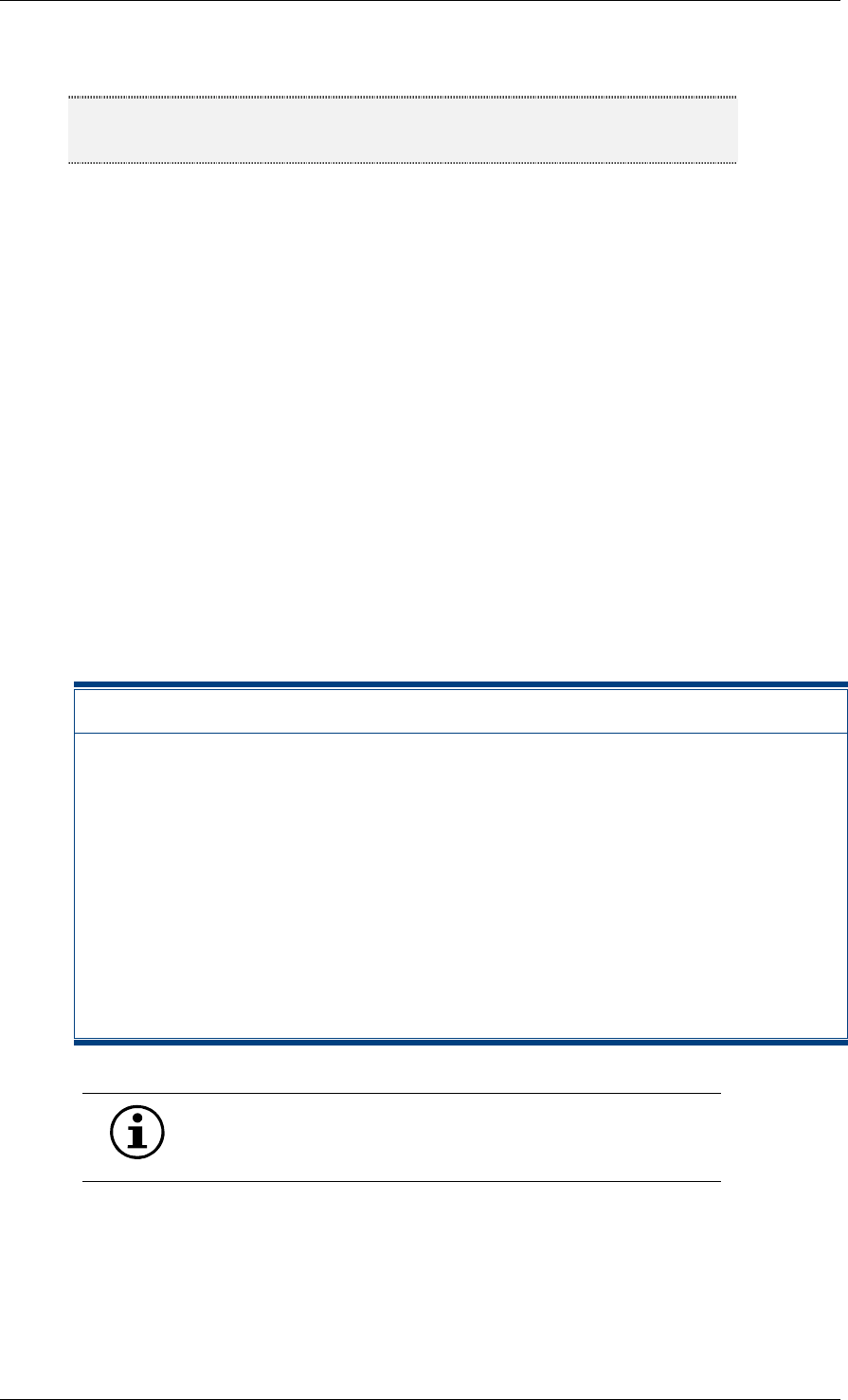
InfoProx Entry Configuring the Door Control Unit
Configure Inputs
Note DO NOT CHANGE FACTORY INPUTS WITHOUT CONSULTING WITH
TECHNICAL SUPPORT.
This screen appears after Config TZ Type.
Config I/Ps
0-Yes, Other-No
There are four inputs for the unit: 0 monitors door position; 1 monitors lock status;
2 monitors RTE/RTX switch status and 3 is a spare input. Input configurations are
set at the factory. Generally, these inputs should not be reconfigured and setup
mode should be bypassed by pressing #.
Doorstrike Time
Door strike is the time a door lock remains open.
After a card has been validated at the reader, the relay controlling the door lock is
activated for the time set in Door Strike Time mode. During this timeframe, the
door can be opened. If the cardholder does not open the door during this time, the
door lock will relock and will not open. The default setting is five seconds.
Modifying the door strike time
Pressing # at the end of Configure Inputs displays the following Door Strike
Time prompt:
Set Drsk= 05s
New Drsk= s
1. Enter a two-digit number for the seconds desired for Door Strike
Time.
Once the time is set, the next screen in the Configuration menu
sequence, Door Close After Time, automatically displays.
This option can be bypassed by pressing the # key,
accepting the default setting of five seconds. The Ù key can
be used to correct any errors entering the Door strike time.
Software House 35
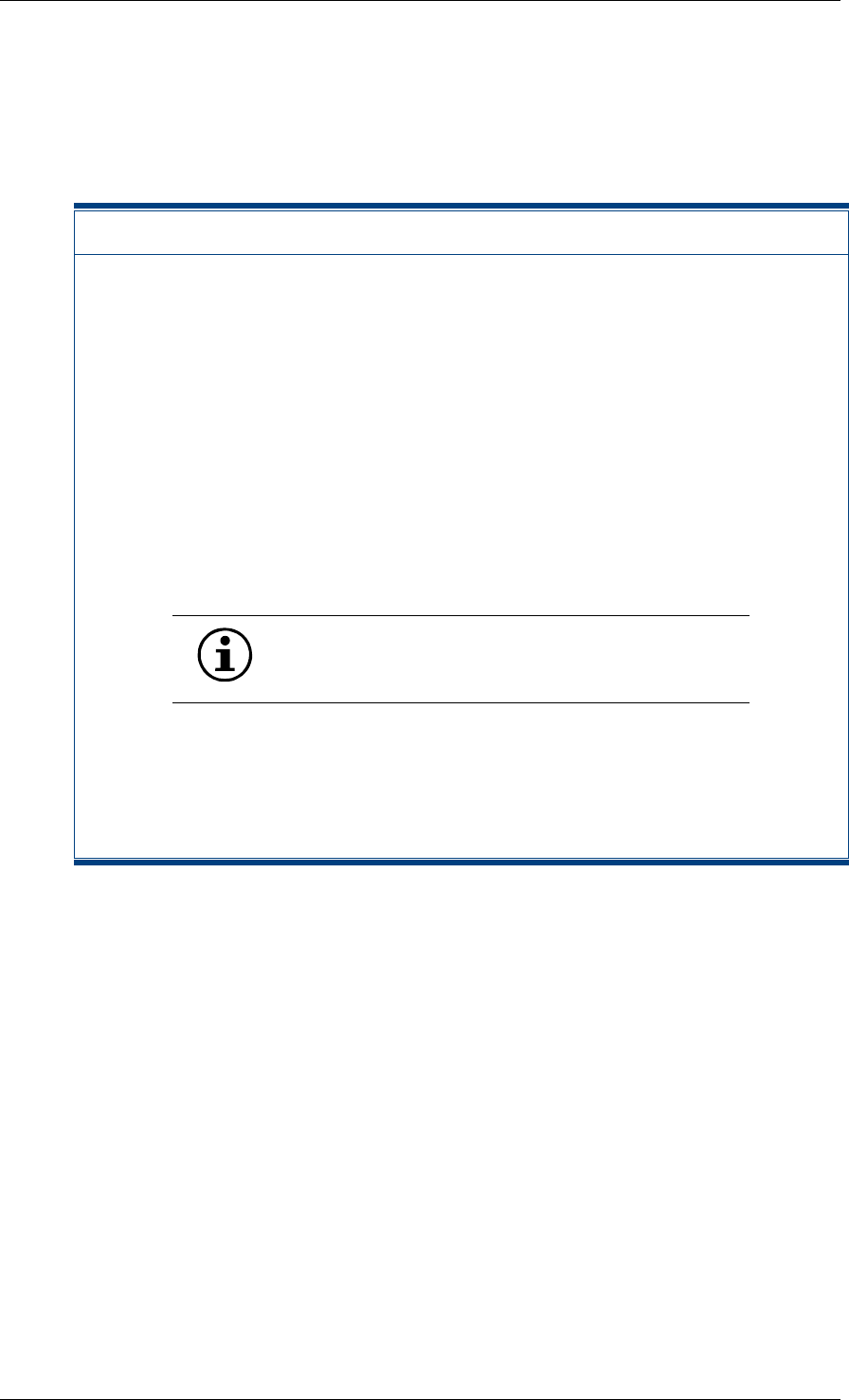
Configuring the Door Control Unit InfoProx Entry
Door Close After Time
Door Close After Time allows you to configure the length of time the door can
remain open before an alarm is activated.
Modifying the door close after time option
After the door strike time is set, the following prompt appears:
Set Drclose=15s
New Drclose= s
To manually access Door Close after Time, press # when in Door Strike
Time mode.
To change from the default setting of 15 seconds:
1. Enter seconds using two digits. This option can be bypassed by
pressing the # key, accepting the default. The Ù key can be used to
correct any errors made while entering the Door close after Time.
Door Close After Time is also known as Door Held
Time or Shunt Time.
Once the time is set, the next screen in the Configuration menu
sequence, GIN Configuration, automatically displays.
36 Software House
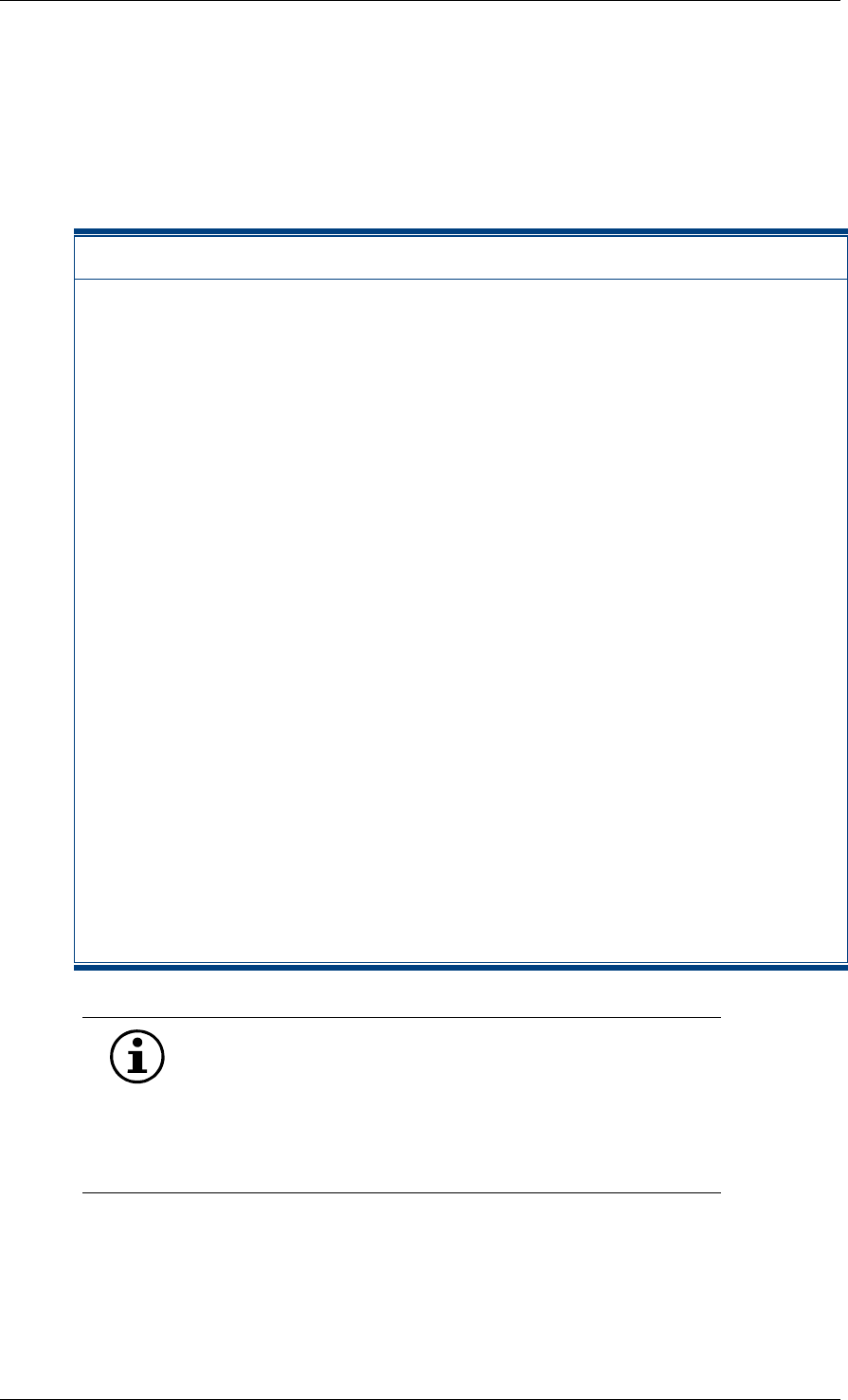
InfoProx Entry Configuring the Door Control Unit
GIN Configuration
A global identification number can be set or this option can be bypassed. GINs can
be associated with Time Zones and are used to allow access with a single number
sequence, such as 5678. The default GIN is 1234.
Modifying the default GIN number
To change the default, enter four new numbers when the prompt appears
after the Door Close After Time screen
Set GIN=1234
New GIN=
1. Enter four numbers.
2. Wait for the confirmation beep.
The screen changes to the next screen, Set Scode.
3. Press # to skip the Set Scode setup for now.
This returns you to the first Administration menu.
4. Press 3 (Config).
5. Press # repeatedly, bypassing setup screens until you return to the GIN
setup screen.
You should then see the new value.
This new four-digit GIN can be associated with a Time Zone, if a PIN-Only
Time Zone is selected. The GIN will operate the unit during the PIN-Only
Time Zone until it is changed. To change the GIN again, repeat the
procedure above.
GINs are convenient in situations where temporary access
to a building by a group of people who have been provided
the GIN is desirable. For instance, GINS are useful in
situations for access to a reunion at a condominium’s
recreational facility that normally has secure access, or
could be used to grant access to employees during an
08:00 to 17:00 Time Zone.
Software House 37
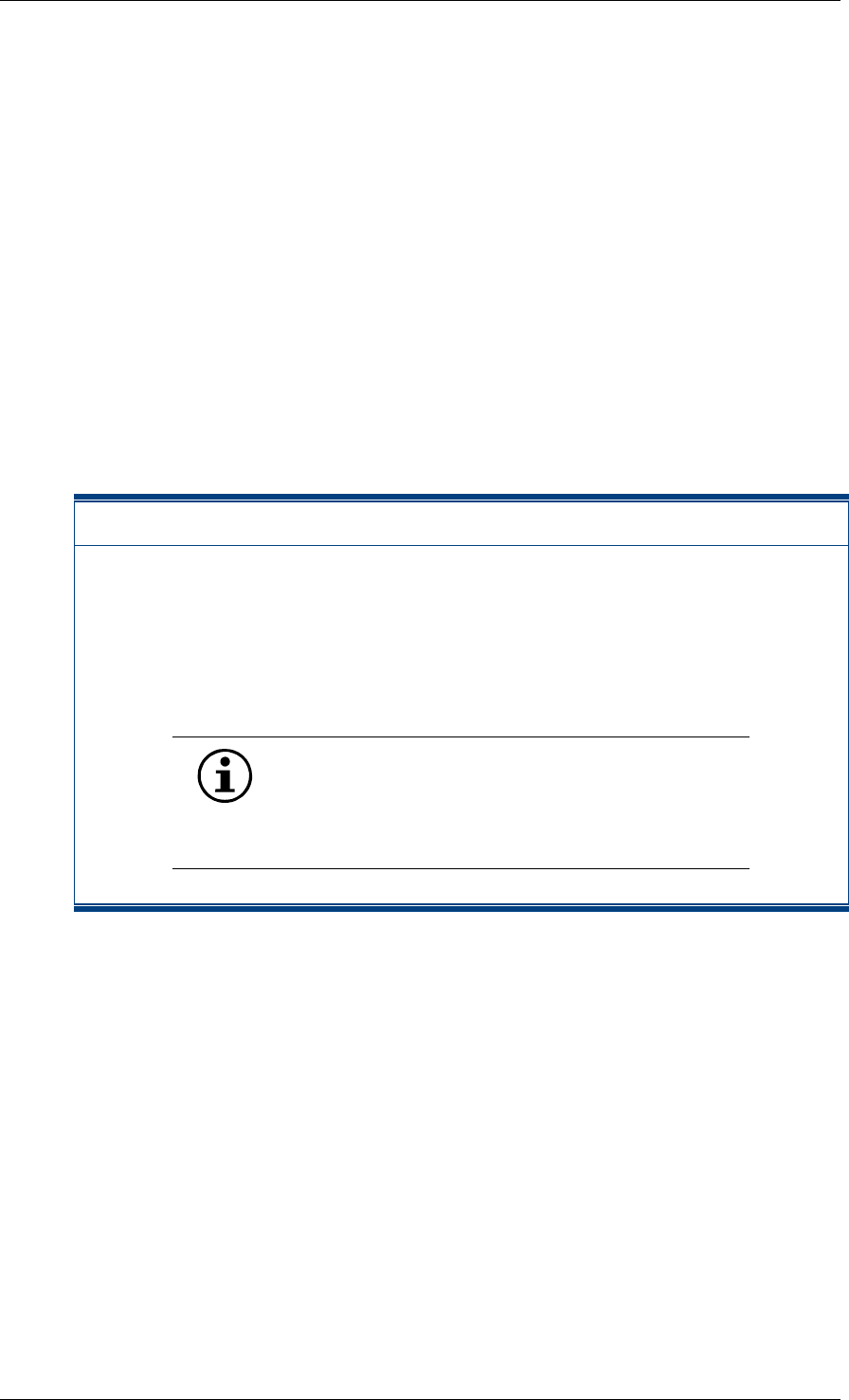
Configuring the Door Control Unit InfoProx Entry
Site Code
The manufacturer for each batch of cards embeds the site code. Usually, the user
requests site codes on a card order form. Batches of cards can also be issued
without site codes. As a rule, the manufacturer will provide this code to
administrators.
The prompt appears after the GIN is entered, viewed, or bypassed on the previous
screen.
Set Scode=XXX
New Scode=XXX
To identify cards used by cardholders, the reader requires a unique site code. If no
site code is entered, any card that is added will be valid and will enable access.
However, if a site code is entered, only those cards with the embedded code will
be valid and will enable access.
Entering a site code
1. Enter the three-digit site code.
A tone confirms that the site code has been accepted.
2. Press # to continue with unit setup or wait for the screen to time out.
You are returned to the first Administration menu.
Any cards entered prior to configuring a site code will
not be valid cards unless they contain the site code.
If no site code is entered or if 0 is entered, the LCD
displays –1, indicating that no site code is being
used.
38 Software House
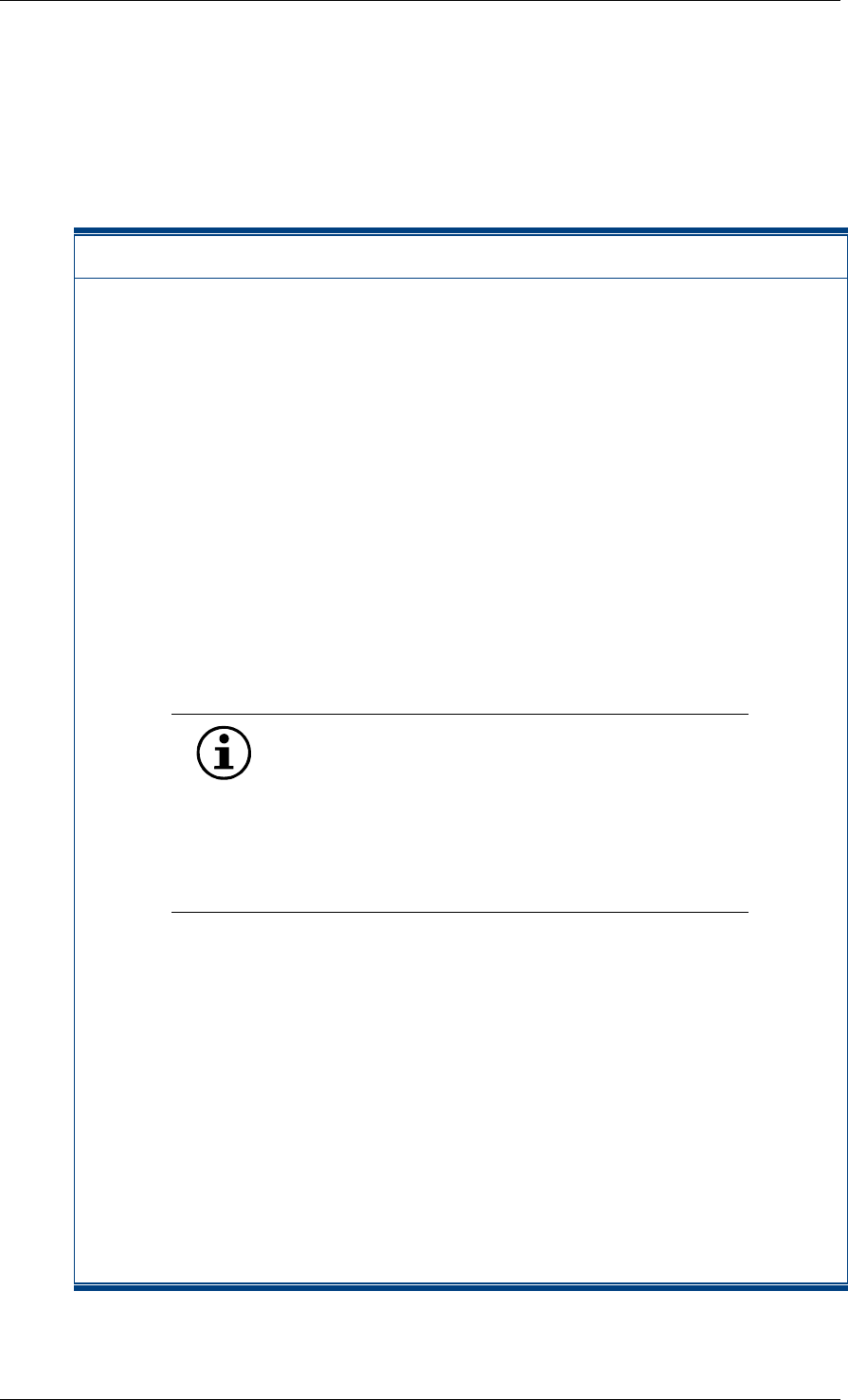
InfoProx Entry Configuring the Door Control Unit
Door Control Unit Diagnostic Screen Set Up
Once the site code is entered, the second stage of the door control unit setup
must be completed so that the unit conforms to a user’s needs. This part of the
setup is accessed through the Diagnostic screen.
Accessing the diagnostic screen setup
1. Press Ù to display the second screen of the Administration menu.
2. Press 4.
The following screen appears.
Diagnostic Tests
[S/N xxxx]
This screen is automatically followed by the Configure Rdr ? screen:
Configure Rdr ?
No Ù Yes #
The Configure Reader screen is the doorway to unit setup, which
requires user interaction. All other screens under the Diagnostic screen
category are read-only and do not require user interaction.
If you do not press Yes-# within five seconds or if
you press Ù, the read-only diagnostic screens
display in sequence. Once this sequence begins, you
can stop it only by unplugging the unit. The
diagnostic sequence will return you to the
Administration menu when completed. Each
diagnostic screen will display for the default time of
five seconds.
3. Press # to enter the unit setup mode.
The following prompt appears:
RDR Setup Option
# to continue
4. Press # to continue with unit setup.
The following series of reader unit setup screens appears: Contrast,
Door Mode, Keypad Enable/Disable, Exit Configuration, and Relay Idle
State.
Software House 39

Configuring the Door Control Unit InfoProx Entry
Contrast
The first screen in the unit setup sequence is Contrast.
To alter the contrast
1. From the Configure Reader screen, press # twice to continue to the
Contrast screen.
The following prompt appears:
Alter Contrast
1 + 2 -# Exit
2. Press 1 to set a darker display.
3. Press 2 to set a lighter display.
4. Press # to move to the next screen: Door Mode.
Door Mode
Two door modes are available:
· Door Reader: the standard door mode for a reader controlling access
at a door. When the reader is configured as a door reader, three of the
four inputs are reserved for door position, lock status and request to
exit, leaving one spare input.
· Control Post Reader: a door mode used to validate cards, normally at
a manned control point having no physical barrier or door.
To configure the door mode
1. From the Configure Reader screen, press the # key three times to
continue to the door mode prompt.
The following prompt appears:
Ù Alter # Exit
Door Reader
2. Press Ù to change between the door modes.
3. Press # to confirm the selection and move to the next screen.
40 Software House

InfoProx Entry Configuring the Door Control Unit
Keypad Enable / Disable
This mode enables or disables the keypad. If the cardholder has been allocated a
PIN and the keypad has been disabled the cardholder will not be asked to enter a
PIN when presenting his/her card to the reader.
To enable/disable keypad
1. From the Configure Reader screen, press the # key four times to
continue to the enable/disable keypad prompt.
The following prompt appears
Ù Alter # Exit
Keypad
2. Press Ù to toggle the keypad on or off: Keypad or No Keypad.
3. Press # to confirm the selection and to go to the next screen: Exit
Configuration.
Software House 41
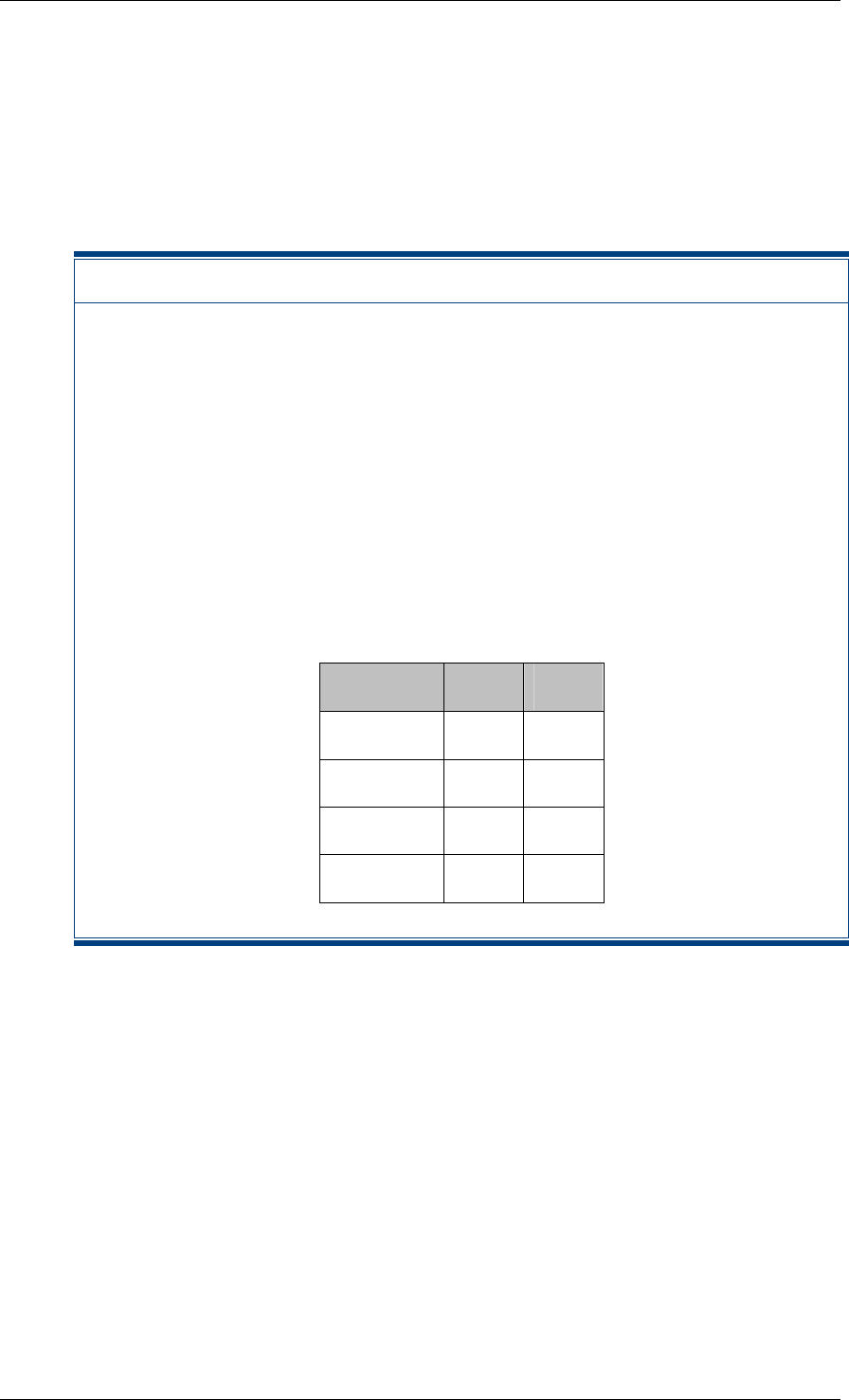
Configuring the Door Control Unit InfoProx Entry
Exit Configuration
The Exit Configuration option is used to configure the door control unit to support
an InfoProx Exit unit and/or DIU (Door Interface Unit Module). You need to setup
this feature only if you are using an exit reader/unit or DIU controlled by the
primary door control unit, an InfoProx Entry.
To setup the exit configuration
1. From the Configure Reader screen, press the # key five times to
continue to the exit configuration prompt.
The following prompt appears:
Ù Alter #Exit
EXIT N DIU N
2. Press Ù to toggle between setup options: NN, NY, YN, YY.
3. Press # to move to the next screen: Relay Idle State.
The following table shows the exit configuration setup sequences.
Display Exit DIU
NN No No
NY No Yes
YN Yes No
YY Yes Yes
42 Software House
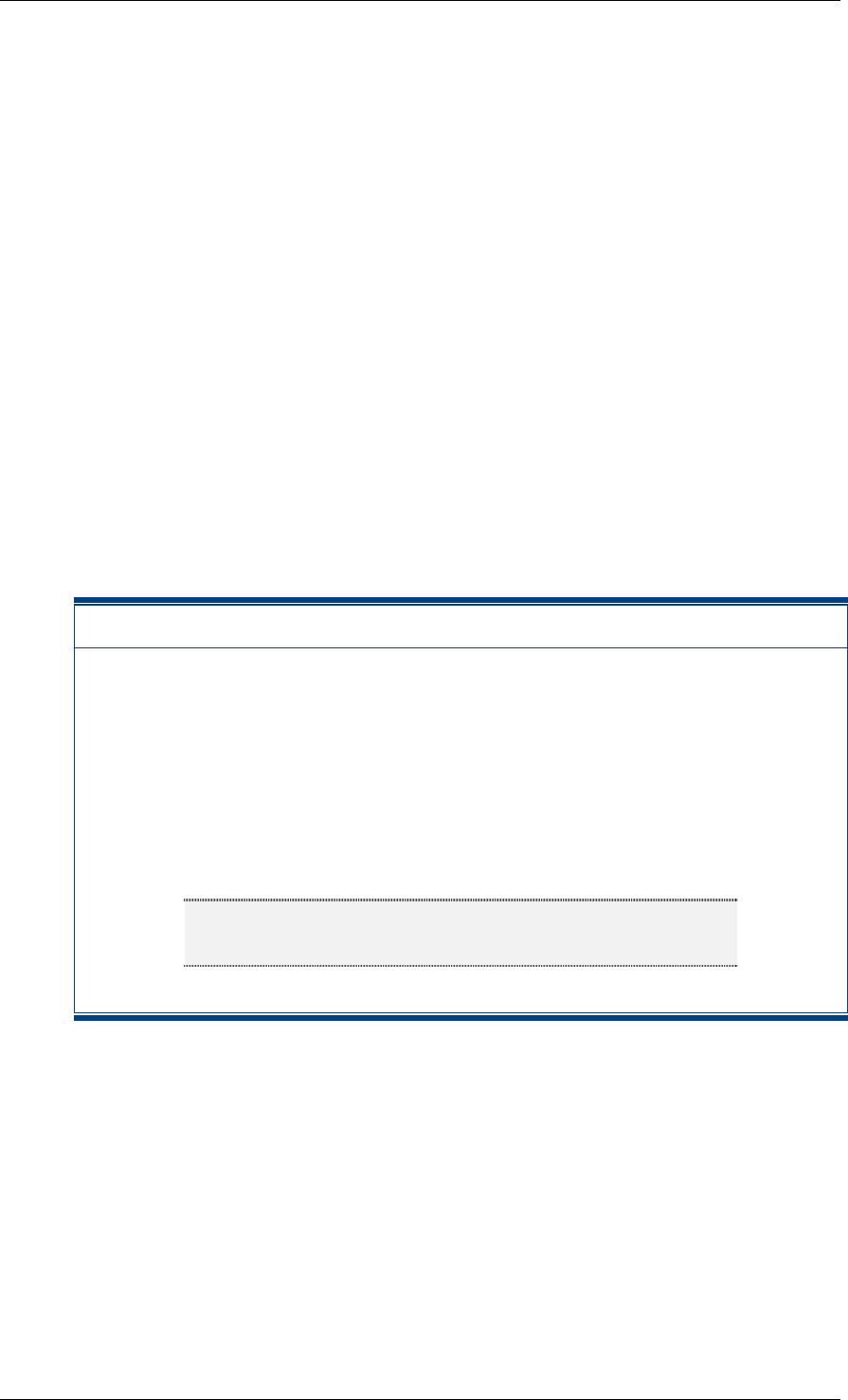
InfoProx Entry Configuring the Door Control Unit
Relay Idle State
This screen indicates the idle/active state of the relay. In the following example,
the RO (Relay 0) is N/C (Normally Closed):
Ù Alter # Exit
RO N/C
If the reader has an exit connected, then the screen displays two relays (RO +
R1):
Ù Alter # Exit
RO N/C R1 N/C
If the relays are set to N/O, the prompt
Ù Alter #Exit
RO N/O R1 N/O
displays. N/O represents Normally Open.
The relay state facility is used to configure the reader for Powered to Secure or
Powered to Unlock operations, depending on the type of lock used.
To set the relays
1. From the Configure Reader screen, press the # key six times or one time
from the Exit Configuration screen to continue to the Relay Idle State
prompt.
2. Press Ù to set the relay as Normally Open.
3. Press Ù to set the relay to Normally Closed.
Note Unit will reboot automatically if these settings are changed,
returning you to the main menu.
Software House 43
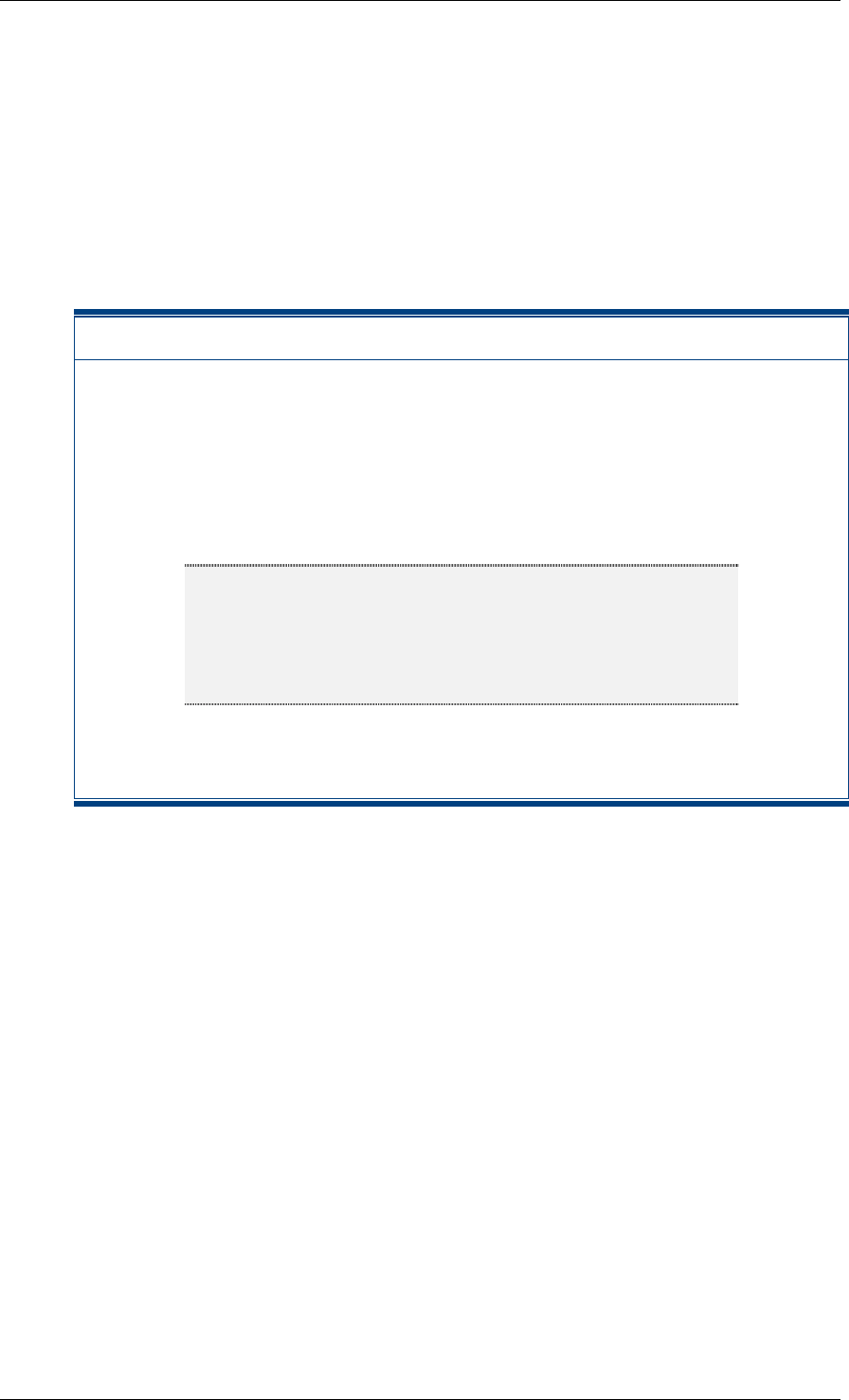
Card Management InfoProx Entry
6. Card Management
Adding Cards (Option 1 - Add)
Card management is accessed through the Administration menu:
0-Del, 1-Add
2-Find, 3-Config.
How to add a card by swiping (Option 0)
1. Press 1 to access the Add Card option.
The following prompt appears:
0-By Swipe
1-By Keypad
This screen allows a card to be added to the database.
Note Each card has a unique encoded number (system
number), which must be added either through the keypad or
by a card being presented to the reader. Unless you know
the embedded system number, presenting the card to the
reader is the best way to enter this number.
2. Press 0 (By Swipe) or 1 (By Keypad).
44 Software House
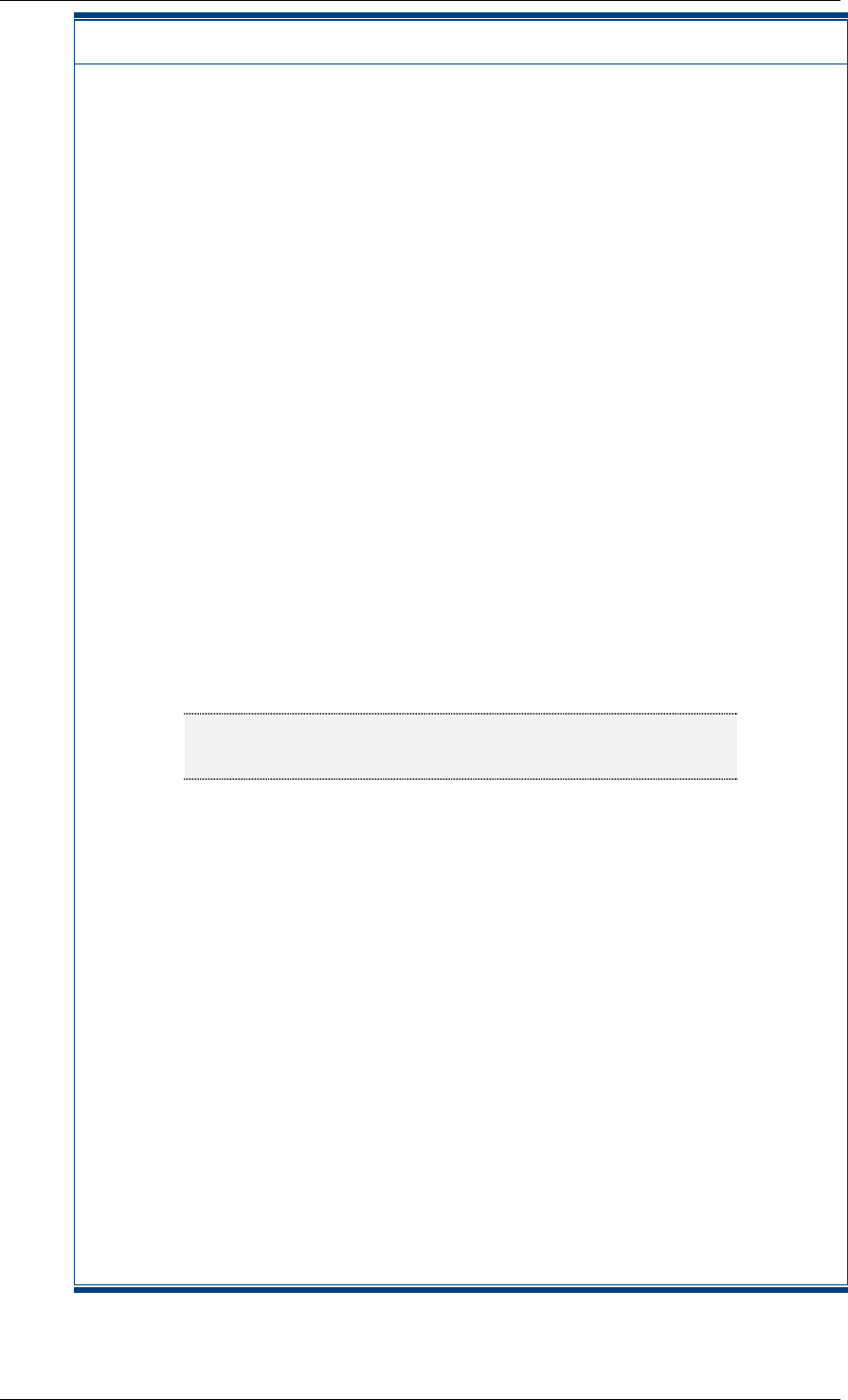
InfoProx Entry Card Management
Add a card by swiping
1. Press 1 from the Administration menu to access the Add Card option.
The following prompt appears:
0-By Swipe
1-By Keypad
This screen allows a card to be added to the database.
2. Press 0 to add a card by presenting it to the reader.
The following prompt appears allowing the card’s hotstamp number to be
added to the database.
I/P NUM XXXXXXXX
HStmp= XXXXXXXX
3. Enter the hotstamp number on the card by using the keypad. The
hotstamp number must be 8 digits. If needed, add zeros (0) to the
beginning of the hotstamp number to make 8 digits.
Once the last digit of the hotstamp number is entered and appears, a
long tone sounds and the following screen appears:
Present Card
4. Present card. This enters the encoded system card number into the
database.
Note To cancel the operation, press # to return to the
Administration menu without adding the card.
When the system card number is successfully added, the following
prompt displays
PIN ?
1-Yes, Other-No
5. Press 1 to assign a PIN to the card.
The following prompt appears:
Set PIN XXXX
6. Enter the four-digit PIN.
7. To add the card without a PIN, press any key other than 1 at the PIN
prompt, as in step 2.
Before returning to the I/P NUM prompt, the display indicates either that
the card system number has been added or that the card system number
already exists in the database.
Software House 45

Card Management InfoProx Entry
The hotstamp number is usually the number stamped on
the card. This number is not always the same as the
embedded system number. For this reason, the hotstamp
number is more or less an arbitrary number, which means
the hotstamp number does not have to be used if the
company has another system of numbering. However, as a
rule, it may be more convenient to use the hotstamp
number on the card for administrative purposes and for
convenience. If the software utility is used, these numbers
are listed in the database in conjunction with the system
number.
If the hotstamp number is fewer than eight-digits, it must
be preceded with zeros. The Ù key can be used to reset
the display and overwrite any errors.
Use Ù to correct errors during the procedure. When a PIN is successfully entered,
prompts indicate either that the card number has been added or that the card
number already exists in the database. If the card is already in the database, re-
enter a PIN. The display then reverts to the I/P NUM prompt.
Use # at any time to return to the I/P NUM prompt. If # is entered; however, the
card will not be added. If fewer than four digits are entered for the PIN, the prompt
returns to the I/P NUM prompt after a timeout period. If this occurs, the card is not
added.
46 Software House
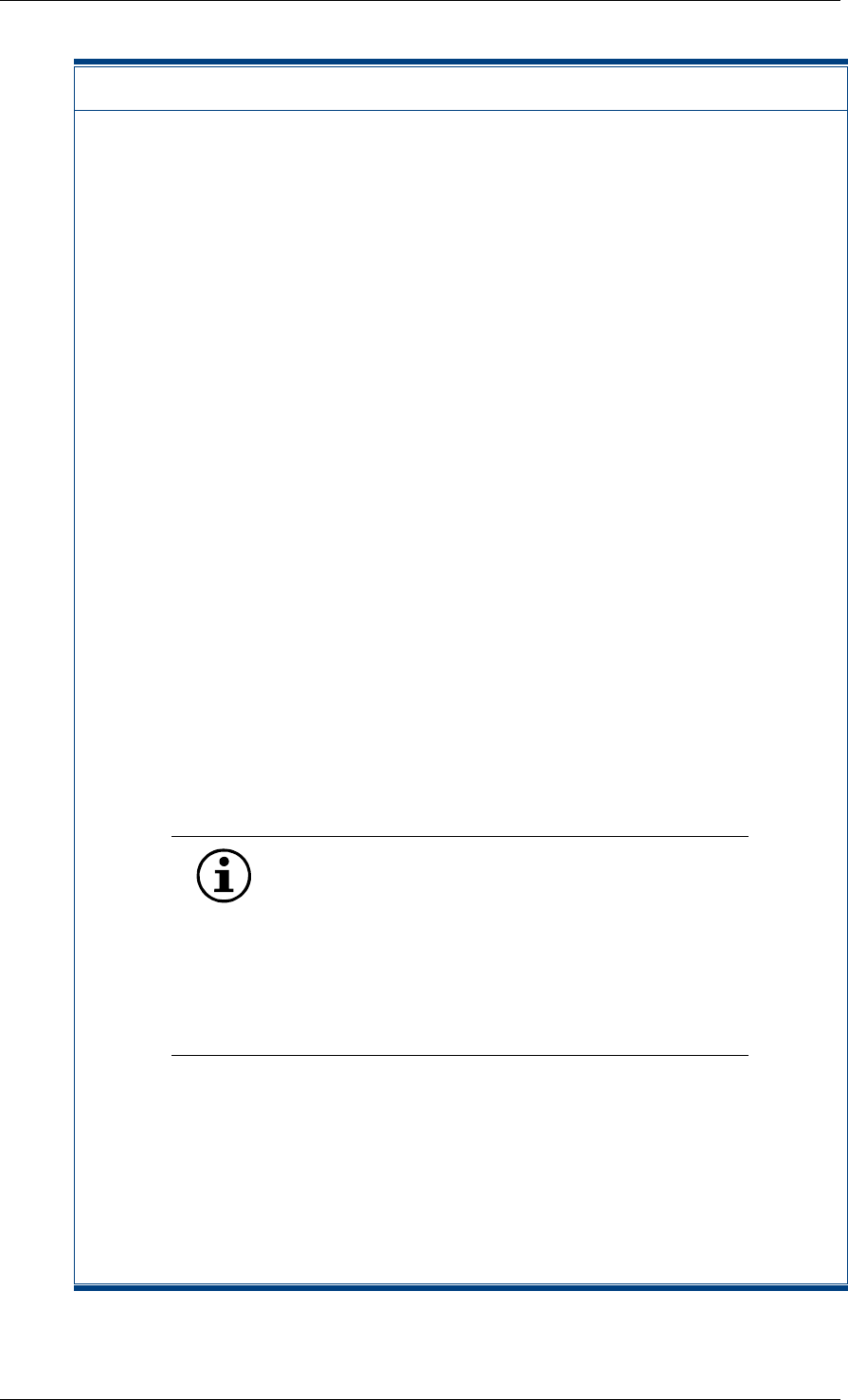
InfoProx Entry Card Management
Add a card from the keypad
1. Press 1 from the Administration menu to access the Add Card option.
The following prompt appears:
0-By Swipe
1-By Keypad
This screen allows a card to be added to the database.
2. Press 1 to access the add a card from the keypad option, as shown in
above.
The following prompt appears:
I/P NUM XXXXXXXX
HStmp=
Using the keypad of a unit, a card can be added to the database by
entering the card system number.
3. Enter a hotstamp number. If the hotstamp number is fewer than eight
digits in length, then the number must be preceded with zeros (0)
Once a hotstamp number is entered, the following prompt appears:
I/P NUM XXXXXXXX
Sys No=
4. Enter the embedded system number. The system card number must
be entered in decimal format. If the system card number contains
fewer than eight digits, the number entered must be preceded with zeros
(0).
Either the embedded system number is the same as
the hotstamp number or the manufacturer provides
the system number. If you do not have a system
number, use the hotstamp number preceded with the
appropriate number of 0s. The system number will
be associated with the hotstamp number entered
when the card is presented to the reader. To find the
system number, once a card is added, go to 2-Find
and follow directions for a search.
When the card system number is successfully added, the following
prompt appears, allowing a PIN to be assigned to the new card.
PIN ?
1-Yes, Other-No
If you do not want to assign a PIN, then press # or any other key to
bypass the next step.
Software House 47

Card Management InfoProx Entry
5. Press 1 to assign a PIN to the card.
The following prompt appears:
Set PIN XXXX
6. Enter a four-digit PIN.
7. To add the card without a PIN, press any key other than 1 at the PIN
prompt, as in step 4.
Before returning to the I/P NUM prompt, the display will indicate whether
the card system number has been added or if the card system number
already exists in the database.
48 Software House
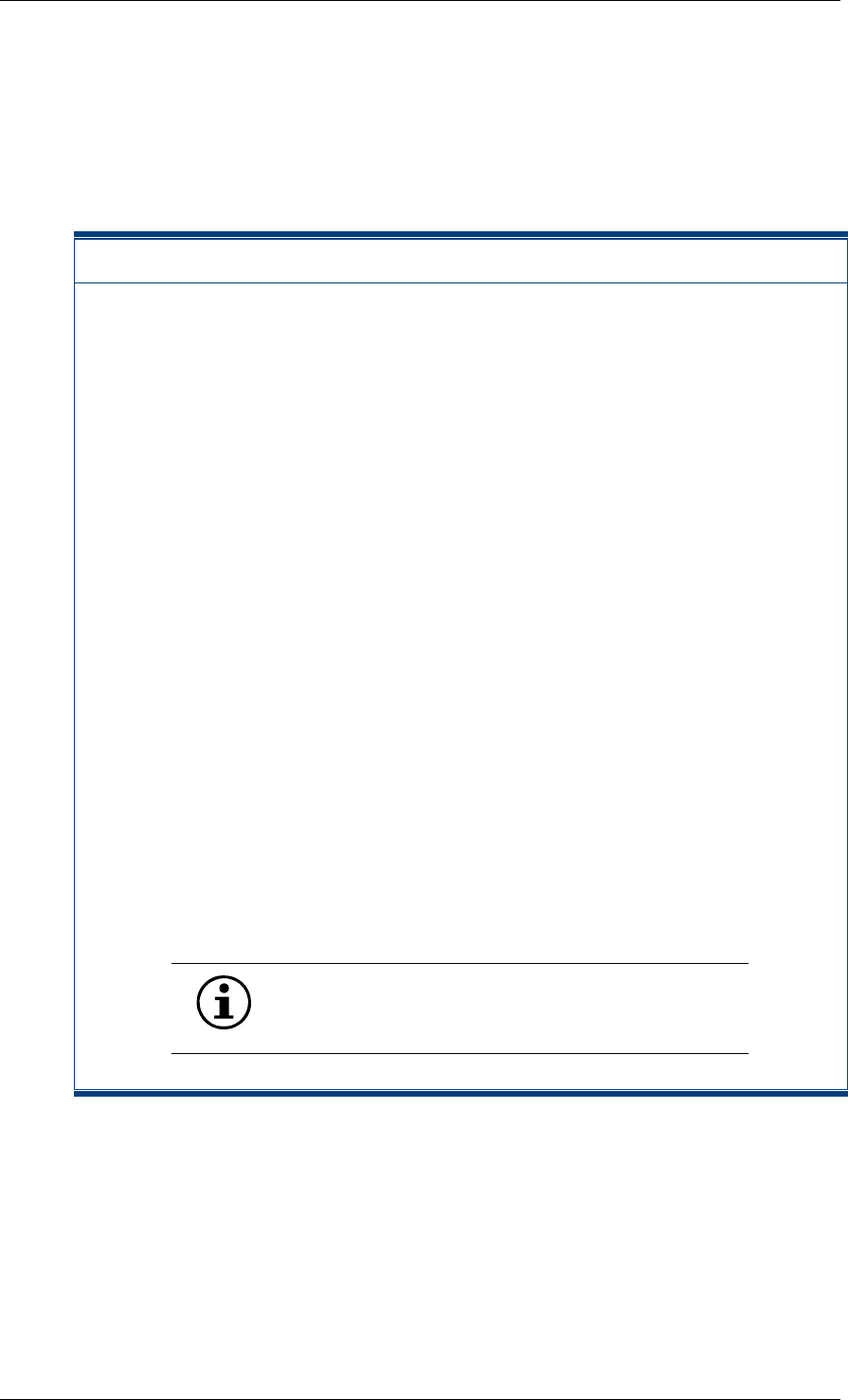
InfoProx Entry Card Management
Delete A Card (Option 0 – Del)
To delete cards, access the Administration menu:
0-Del, 1-Add
2-Find, 3-Config.
To delete a card
1. Press 0.
The following prompt appears:
I/P NUM XXXXXXXXX
HStmp= XXXXXXXXX
This option allows any card in the database to be deleted.
2. Enter the hotstamp number on the unit keypad to select the card for
deletion. If a hotstamp number has fewer than eight digits, precede the
number with zeros (0).
When a card is found, the hotstamp number, together with the
associated PIN, displays, as follows:
DEL? 0-YES
No: XXXXXX XXXX
3. Press 0 to delete the card.
The following screen momentarily displays.
CARD DELETED
4. If any other key is pressed, the following screen displays:
CARD NOT DELETED
Press # to exit the Administration menu without
deleting the card. Press any other key to return to
the I/P NUM prompt.
Software House 49
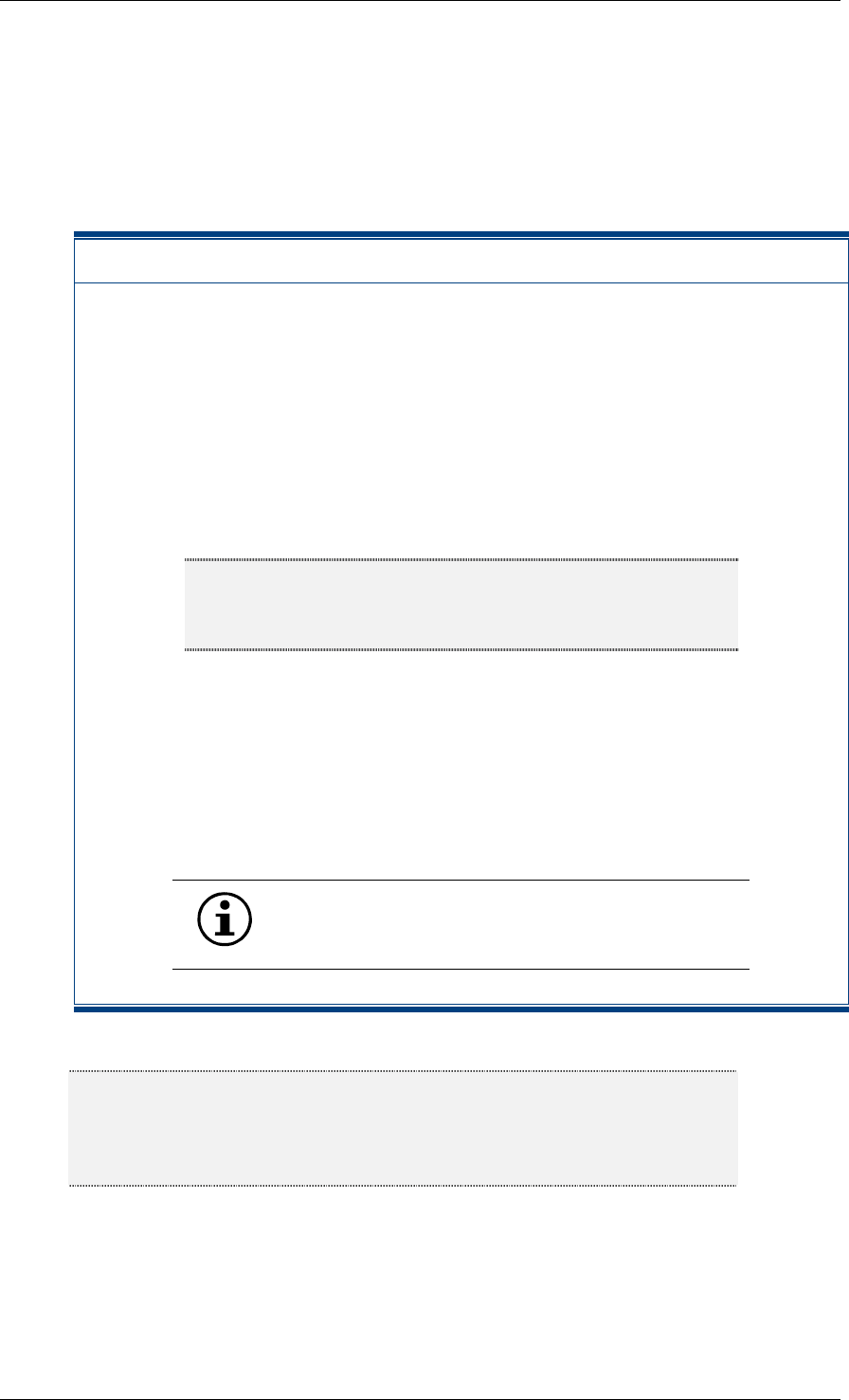
Card Management InfoProx Entry
Card Search (Option 2 - Find)
To find a card, access the Administration menu:
0-Del, 1-Add
2-Find, 3-Config
To find a card by hotstamp number (option 0)
1. Press 2 on the Administration menu to search for a specific card in the
database. Cards are stored in order of the encoded system card number.
The following prompt appears, presenting search options.
0-HSTMP, 1-SWIPE
2-ALL CARDS
2. Press 0 to display the I/P NUM prompt.
3. Enter an eight-digit hotstamp number.
Note If the number printed on the card is less than eight digits in
length, preceded it with zeros. Use Ù to correct errors made
entering the hotstamp number.
An following example of a search result appears when the hotstamp
number has been successfully entered.
SYS No: 00135F
No:00004559 1234
The screen will display the encoded card number in hexadecimal format,
the hotstamp number in decimal format, and an associated PIN. If the
search was not successful, CARD NOT FOUND appears.
The system number is shown in hexadecimal format,
whereas the hotstamp number and PIN are shown in
decimal format.
Note If you added a card by the swipe method and do not know what the system
number is, use the Find command and search by the hotstamp number
associated with the card system number. The system number will be
reported in hexadecimal format.
50 Software House
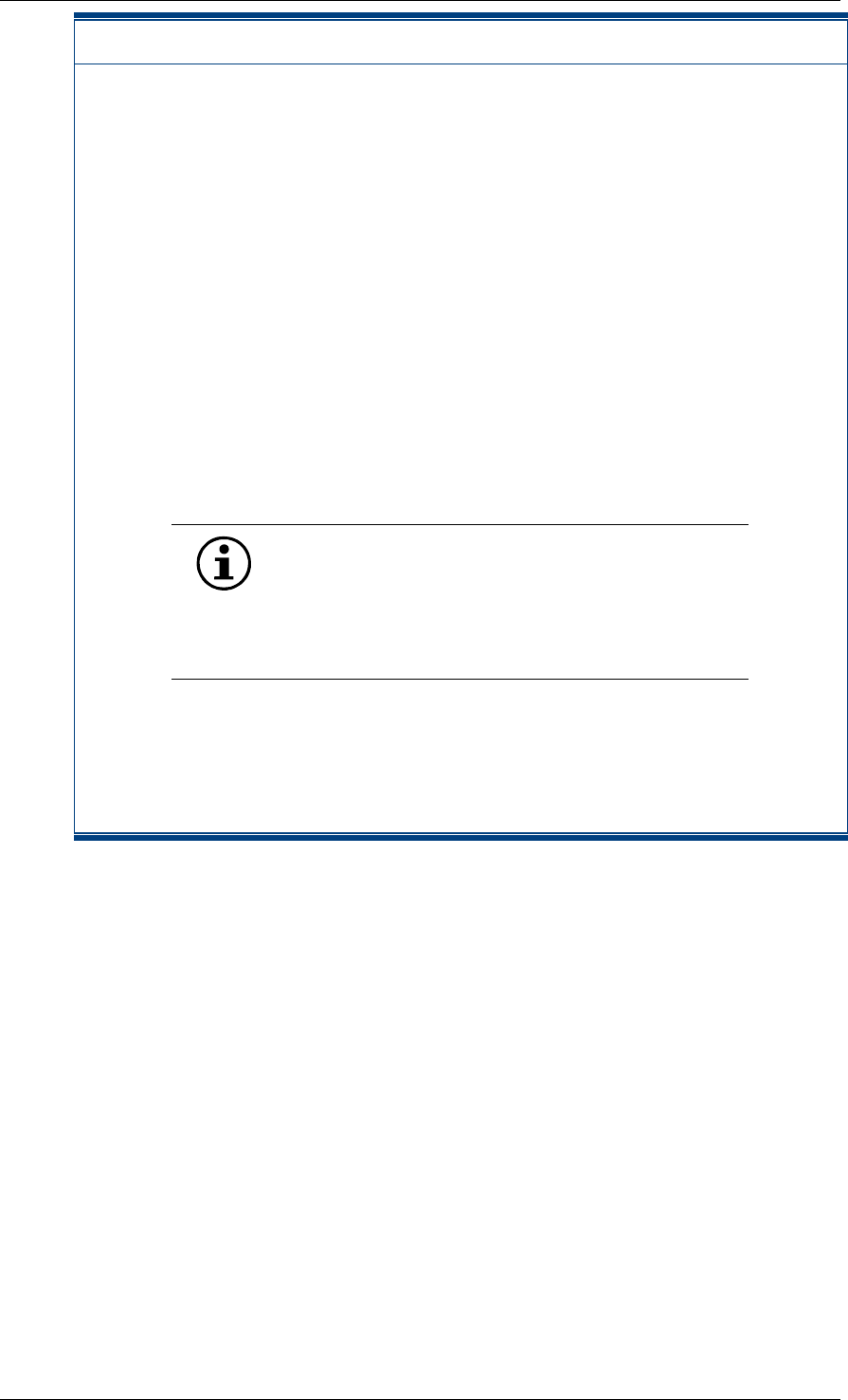
InfoProx Entry Card Management
To find a card by swipe (option 1)
1. Press 2 on the Administration menu to search for a specific card in the
database. Cards are stored in order of the encoded system card number.
The following prompt appears, presenting search options.
0-HSTMP, 1-SWIPE
2-ALL CARDS
2. Press 1.
This action enables the search for the encoded card number and
associated PIN stored in the reader database by presenting the card to
the reader.
3. Present a card to the reader within the appropriate read range for that
card type. When the unit finds the card record, the system number,
hotstamp number and PIN appear, as follows.
SYS No: 00135F
No.:00004559 1234
By using the swipe method, several cards can be
presented in turn. If an incorrectly formatted card is
used in the transaction, BAD CARD is displayed. If a
card transaction does not occur before the timeout
period elapses, the display returns to the
Administration menu prompt.
Pressing # at any time returns the display to the Administration menu
prompt.
Software House 51
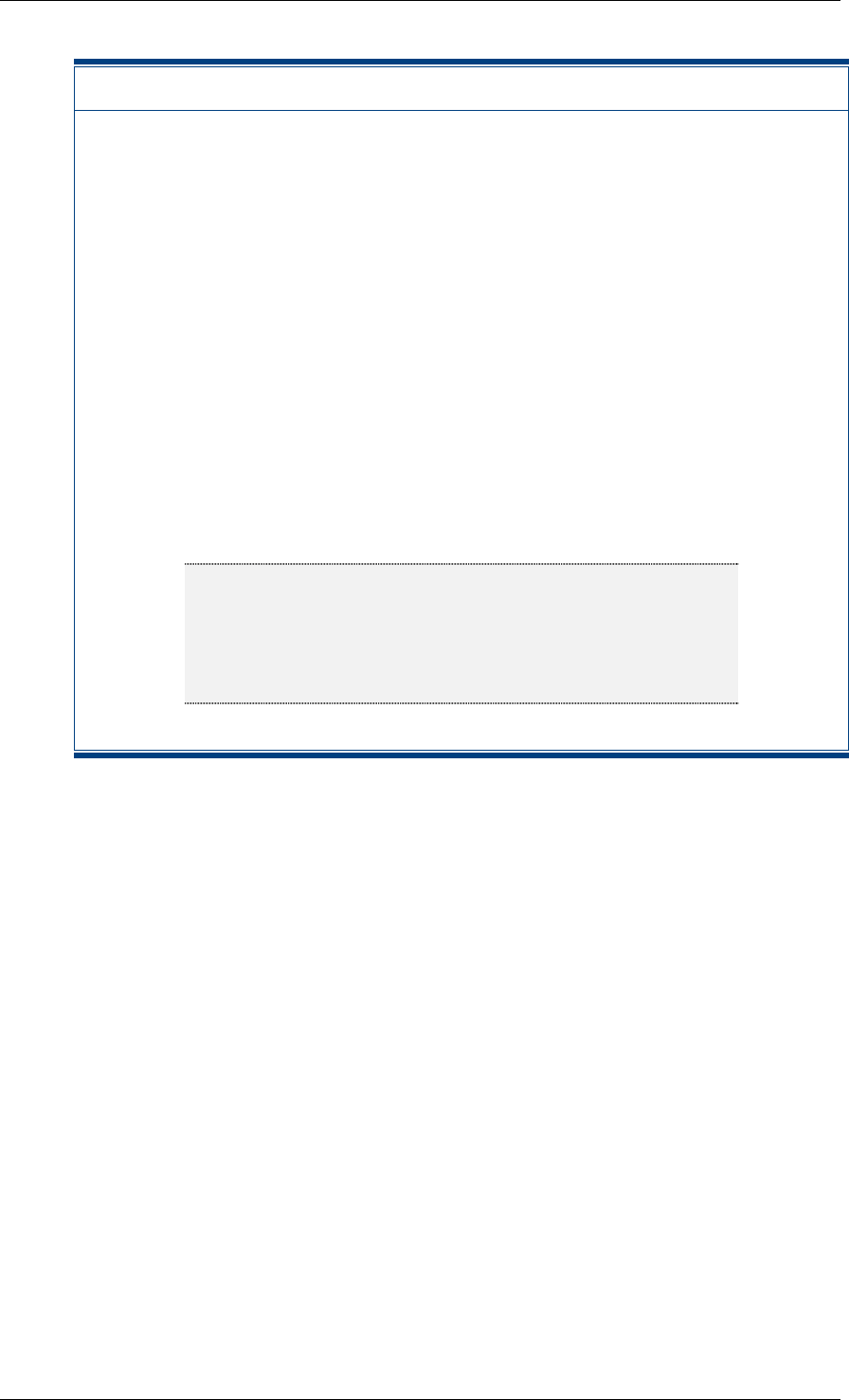
Card Management InfoProx Entry
To search for all card records from the lowest number
1. Press 2 on the Find prompt, as shown below.
0-HSTMP, 1-SWIPE
2-ALL CARDS
This changes the screen to the following:
From 1st-1
Last-9, HstNo-2
2. Press 1 (From 1st) on the Search All Cards screen to display all cards
individually by system number, starting with the card with the lowest
system number, as shown in the following example:
1 Dn 2 Up000001
No:00004959 1234
3. Use keys 1 and 2 to step through the database (down and up,
respectively)--or 1 down, 2 up. The associated PIN and hotstamp
number displays for each card.
Note In the display, as shown in step 2, 000001 is a sequential
number indicating the position of the card in the database,
starting from the card with the lowest system number (being
allocated 000000) up to the total number of cards in the
database.
52 Software House

InfoProx Entry Card Management
To search for all card records from the highest number
1. Press 2 on the Find prompt, as shown below.
0-HSTMP, 1-SWIPE
2-ALL CARDS
This changes the screen to the following:
From 1st-1
Last-9, HstNo-2
2. Press 2 (HstNo) to initiate a search by entering a hotstamp number on
the keypad. If the hotstamp number is less than eight digits, the number
must be preceded with zeros (0). Use Ù at any time to correct errors
when entering the number.
When the card has been successfully found, the hotstamp number, the
PIN, and the card record number display.
3. Use keys 1 and 2 to step through the database (down and up,
respectively).
If the hotstamp number is not found, the display reverts to the I/P NUM
prompt.
Diagnostic Tests
To run a diagnostic test
1. Press Ù when in the Administration menu to display the remaining
available menus.
4-Diag, 5-Pword
6-Backup
2. Press 4 to access the Diagnostic Test option, which allows a range of
functional tests of the reader to be performed. (See section 5 for
details).
Software House 53

Card Management InfoProx Entry
Change Password
To preserve security, change the program password periodically.
To change the password
1. Press Ù when in the Administration menu to display the remaining
available menus.
4-Diag, 5-Pword
6-Backup
2. Press 5 to change the password.
The following prompt appears:
Set Password
3. Enter a four-digit password. As the password is entered, an asterisk
appears on the display and the reader emits a beep at each key press.
After the password is entered, the prompt
Verify Password
requests verification.
4. Re-enter the password.
The password is accepted upon verification and the following prompt
appears:
Password OK
When a reader is first installed, no password is stored. You must follow
steps 1 through 4 to enter a password code.
THE PASSWORD MUST BE RECORDED AND
STORED IN A SAFE LOCATION. IF THE
PASSWORD IS FORGOTTEN, THERE IS NO WAY
TO GAIN ACCESS TO ALTER ANY PART OF THE
READER'S SETUP. IF THIS HAPPENS, THE
READER MUST BE RETURNED TO THE
SUPPLIER FOR REPROGRAMING.
54 Software House
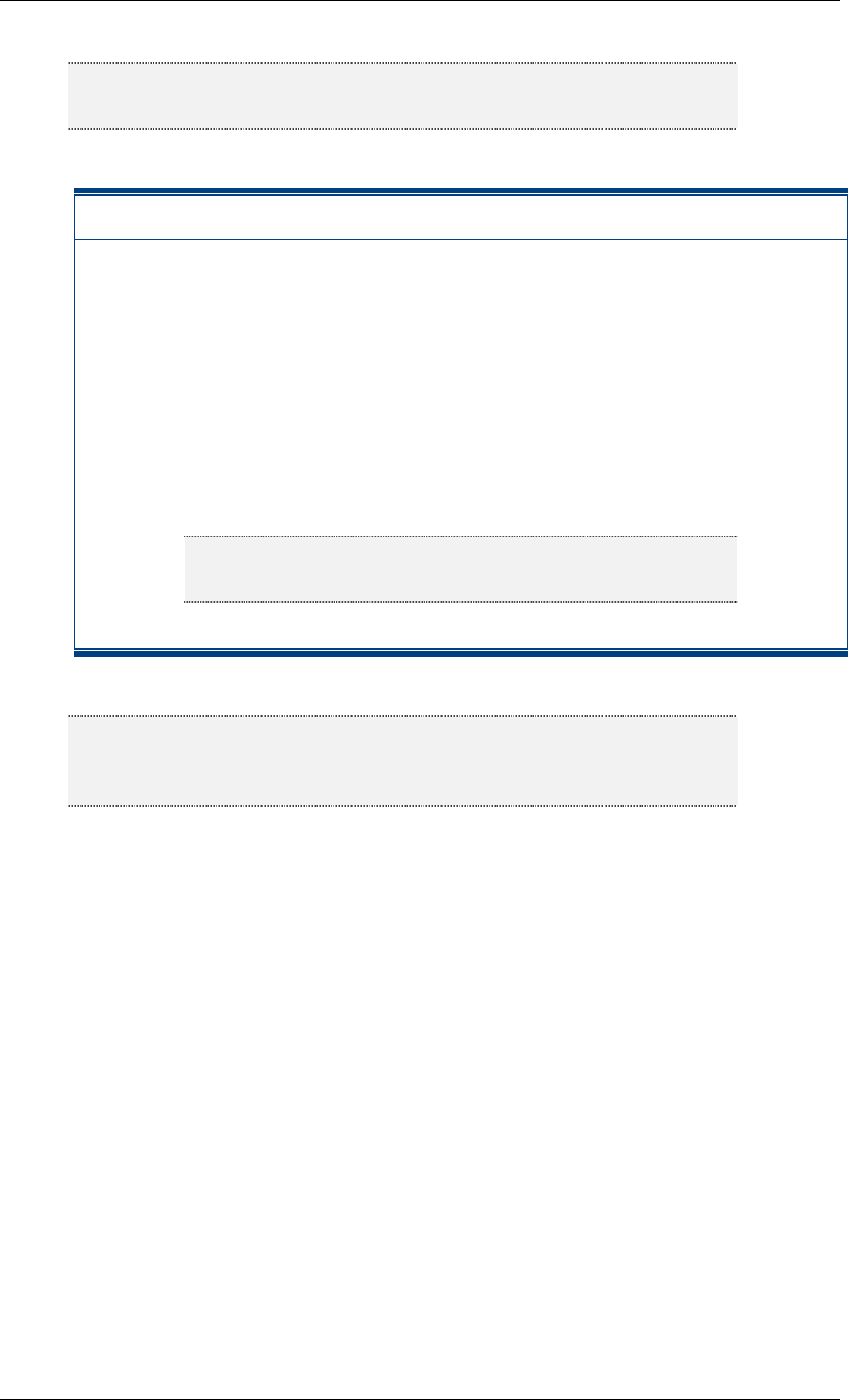
InfoProx Entry Card Management
PC Backup
Note In addition to the following instructions, see the Software Utility Manual for
more information about this application.
To access the software utility backup
1. Press 6 to access the Software Utility Backup tool.
4-Diag, 5-Pword
6-Backup,
The following prompt appears:
CONNECTING TO PC
If the following prompt appears the reader has not connected to the
workstation and the backup utility is not operating.
NO CONNECTION
Note Uploading a new database from a PC overwrites the current
database in the reader
Note To use the Backup option, the unit must be connected through an RS485-
RS232 converter that is connected to the PC, running the PC/software
backup program.
Software House 55
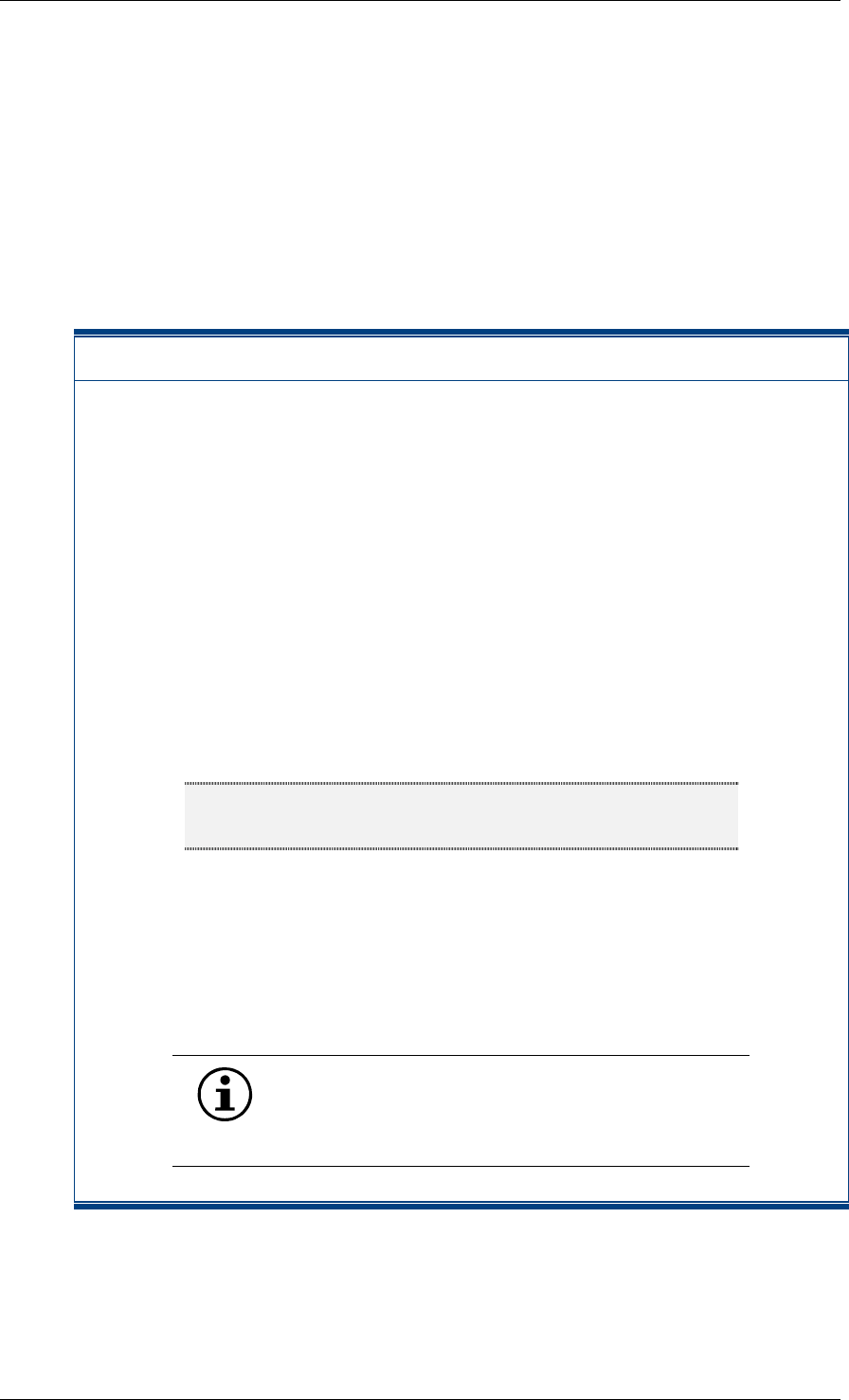
Diagnostic Routine InfoProx Entry
7. DIAGNOSTIC ROUTINE
Once the InfoProx Entry reader has been set up and configured, check the current setup
status and operational functions of the reader by starting the diagnostic routine. The
diagnostic routine menu also allows you to change the reader setup, as was explained in
section 4.
Initiating The Diagnostic Routine
To run the diagnostic routine
1. Enter (# 0 Ù), the administration key sequence.
2. Enter the password.
The following screen appears.
O-Del, 1-Add
2-Find, 3-Config
3. Press Ù to open the second setup screen.
4-Diag, 2-Pword
6-Backup,
4. Press 4 to open the following screen.
InfoProx ENTRY
[Build 0.155]
Note The first part of the diagnostic routine is automatic and will
test the reader's functionality.
There are several screens that will appear and then end with the
following screen.
Configure Rdr ?
No Ù Yes #
5. Press Ù to start the diagnostic routine. The display scrolls through the
various screens.
By pressing #, the user enters the reader setup
mode, as shown in section 5. If setup has already
been done, then bypass this mode by pressing Ù to
enter the read-only diagnostic sequence.
56 Software House
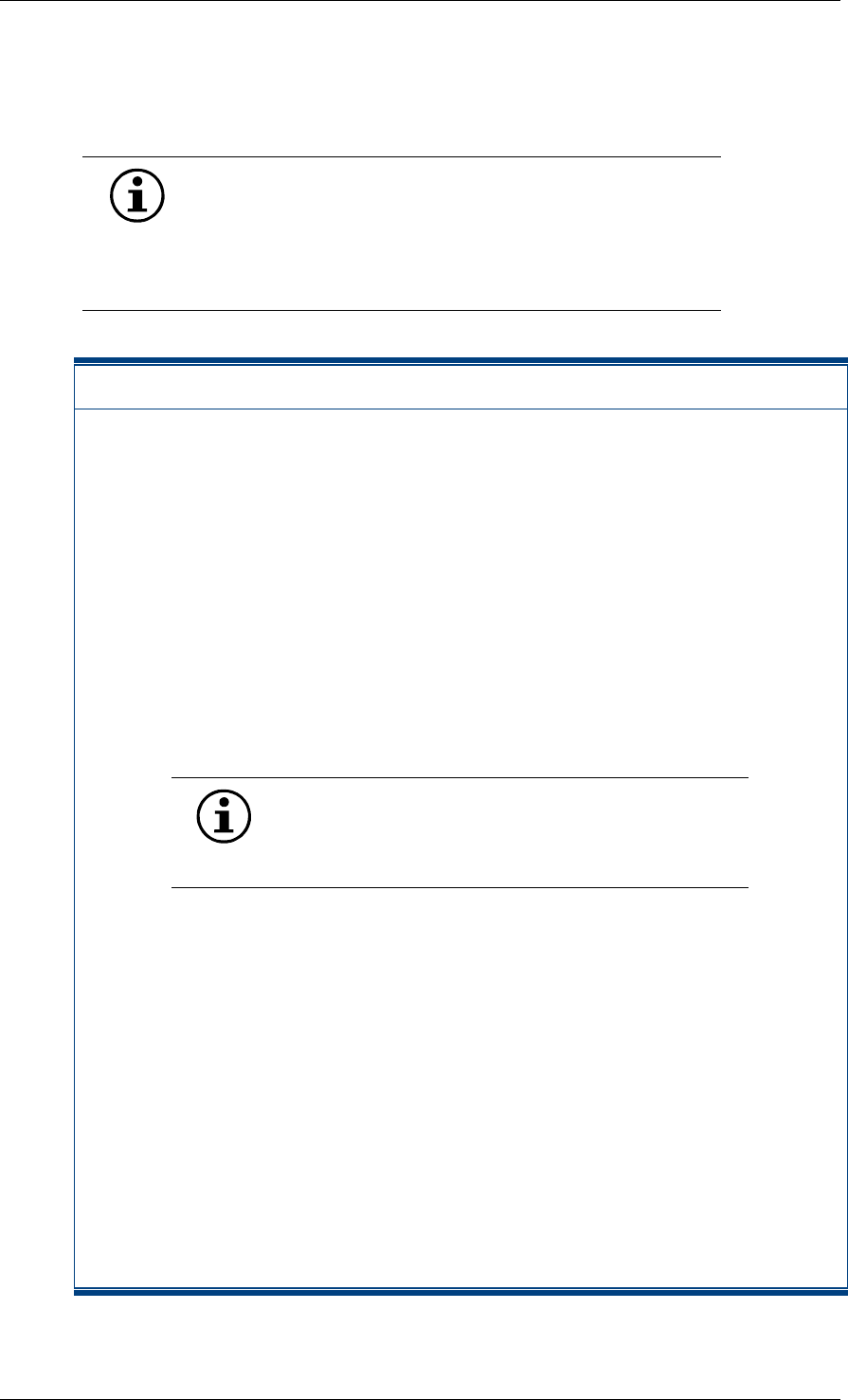
InfoProx Entry Diagnostic Routine
Displaying Diagnostic Screens
The following sequence provides a read-only view of screens that provide
information about the current InfoProx Entry unit setup and configuration.
Enter Ù to start the automatic diagnostic routine, as above,
and to move through the following diagnostic screens. Each
screen in the sequence will be titled Current Setup or
Diagnostic Tests. Once the routine is started, it can only be
stopped by shutting off the unit’s power. When the routine is
finished, it returns the user to the Administration menu.
To display diagnostic screens
n Relay idle state:
Current Setup
RO N/C
On this screen, the relay is configured as N/C (normally closed), opening
when a valid transaction is initiated (i.e., presenting a valid card).
n Keypad is enabled. If keypad entry is setup, this screen will appear:
Current Setup
Keypad.
n Door is controlled:
Current Setup
Door Reader
On this screen, the reader is configured to control a
door. By default for a door reader, input 0 monitors
door position and input 1 monitors lock position. Input
2 is for an egress button, while input 3 is unassigned.
n Indicates whether the reader has a slave device (exit reader unit)
attached and/or is connected to a DIU (Door Interface Unit):
Current Setup
SLAVE N DIU N
n Number of cards currently in the database:
Diagnostic Tests
Cd37 Fr57304
In this example, there are 37 cards in the database and room for 57304
more. The total capacity of the database is 57341 cards. Numbers are
displayed in decimal format.
Software House 57

Diagnostic Routine InfoProx Entry
n Timezone setup:
Diagnostic Tests
PIN Only
In this example, a PIN Only Timezone is configured.
n LED testing sequence:
Diagnostic Tests
Red Led 0
Diagnostic Tests
Green Led 0
Diagnostic Tests
Amber Led 0
n Keypad testing:
Diagnostic Tests
Key Pressed =
Press every key on the reader to test its functionality. If working, the key
displays on the screen.
n Testing the read head:
Badge Exit Head
n Testing the four reader inputs, showing status as open, or closed:
I/P No.0123
ssnn
The example given above indicates that inputs 0 and 1 are Closed (ss)
(s=shorted) for this reader, while input 2 is Open (n) and input 3 is
Normal (n = open circuit mode).
To hold the diagnostic test on the inputs’ check, press #. An H displays
to the right of the input settings. By opening and closing the door, switch
the inputs between OPEN and CLOSED to check that the reader is
monitoring them properly.
1. Press # again to leave the inputs check and continue the diagnostic
routine:
Once the diagnostic checks have been completed, the reader displays
the screen below before returning to the normal idle display:
4-Diag, 5-Pword
6-Backup,
58 Software House
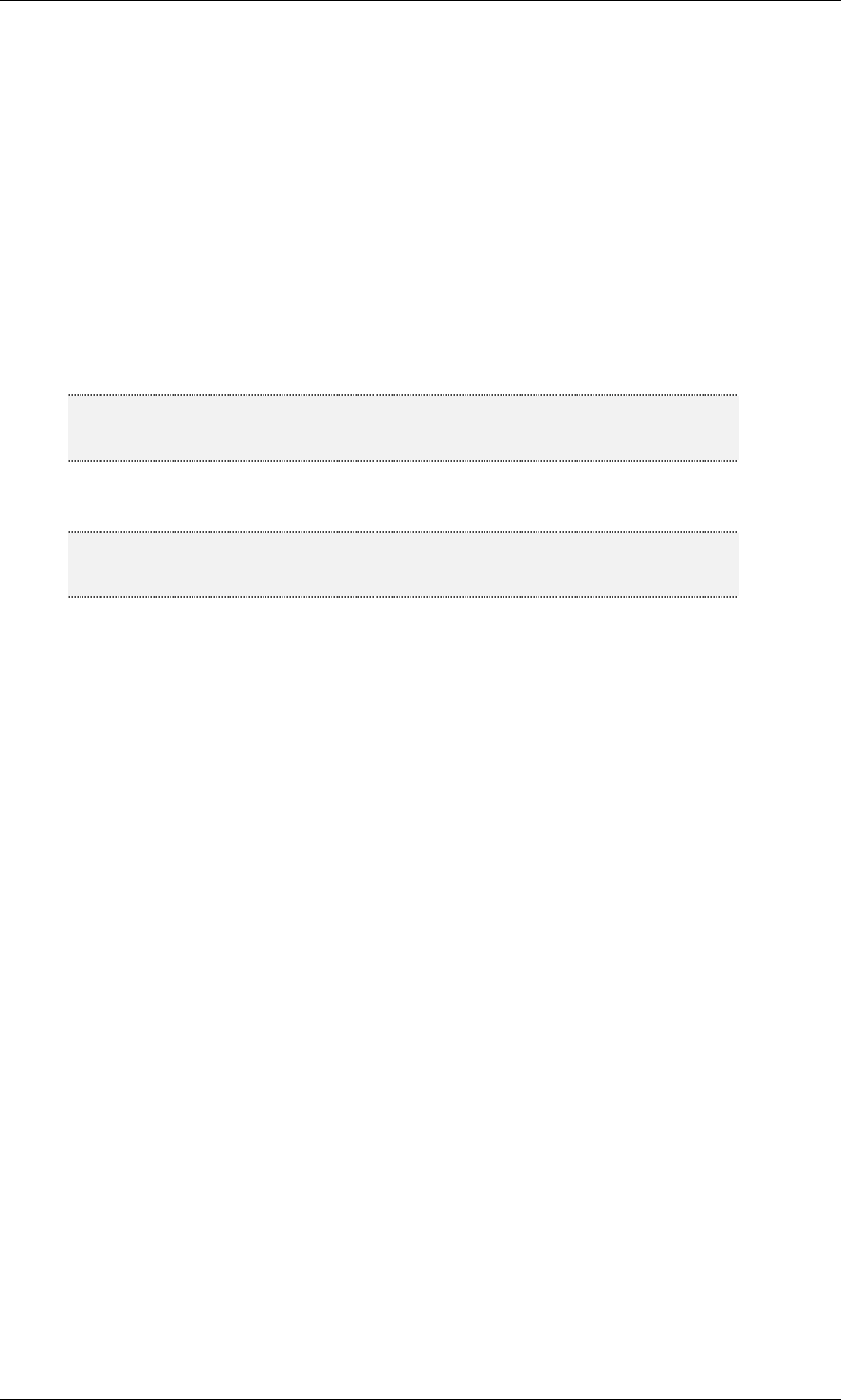
InfoProx Entry Diagnostic Routine
If an exit reader is connected to the entry reader, the diagnostic routine tests the
exit’s LED’s and keypad in the appropriate sequence, as explained in the
Installation Guide. When the entry reader is in diagnostic mode, if there is an exit
reader connected, the routine would be as follows: entry tested, then exit reader
tested, in sequence through the routine – such as entry LED’s, exit LED’s, and so
on.
Final Diagnostic Checklist
1. Use the InfoProx Reader diagnostic routine to check the functionality of the reader.
Present a valid card to ensure that the reader performs as required.
2. Secure the adapter plate to the containment box, position the reader, and tighten the
two pin-hex security screws ensuring that they are not over tightened.
Note To prevent light from triggering the tamper sensor, ensure that there are no
gaps around the unit.
3. Fit the cover buttons firmly in place over the screws.
Note To remove the cover buttons, use a screwdriver on the outer edges to lift the
covers.
Software House 59

Technical Description InfoProx Entry
8. InfoProx Technical Description
The Software House InfoProx Entry Reader is considered to be the industry's smallest
proximity reader to incorporate an LCD and a keypad. Designed to be simple to install and
easy to use, the InfoProx reader can feed information about transaction outcomes directly
back to the cardholder.
The InfoProx Entry reader is intended to control access to restricted areas and is
designed to be as compact and discreet as possible. The reader consists of the following
main units:
· A read-head.
· Twelve character, standard layout, tactile response keypad that allows
Personal Identification Numbers (PINs) to be used.
· Three high-intensity LED indicators: red, green, and amber.
· Two-line by sixteen-character Supertwist LCD with backlight.
· Flame-retardant polycarbonate enclosure containing fully encapsulated
electronics, sealed to IP65, and protected by a tamper sensor.
These parts are housed inside a polycarbonate enclosure with a LCD screen and three
LED indicators. The reader’s electronics are sealed so that it is both weather and vandal
resistant. If a fault occurs, the unit can be replaced and the reader can be made
operational in minimal time; this replacement will not affect other readers.
The reader electronics are totally encapsulated, so the PCB components cannot be
accessed. The only components visible at the back of the reader are connectors, the
tamper sensor and the buzzer. Despite being small enough to mount onto an electrical
containment box, the InfoProx Entry reader has the ability to display up to 32 characters
of useful information for the cardholder and administrator.
The reader may be mounted directly onto a standard UK or European electrical
containment box (USA installations require an adapter plate). Standard conduit and
fittings can be used. Two stainless steel tamper-resistant fixing screws are supplied,
which are concealed behind specially molded covers when installation is complete.
The keypad is used to open a password-protected administration menu. The menu allows
the device to be configured locally, including PIN validation is required, which offers
additional security.
The InfoProx reader controls all local door functions, thereby removing the need for
additional controllers or I/O (Input/Output) units.
Readers run on a nominal 12 volt supply (7V - 15VDC, 250 mA Max). Power can be
supplied either directly from a local source or from associated units. Power supply inputs
are filtered, Transzorb protected, and reverse voltage protected.
60 Software House

InfoProx Entry Technical Description
Exit Readers
Each reader can service an additional exit reader, which can be used on the inner
side of a secure access point. The InfoProx Entry reader can have one full exit
reader with an LCD and a keypad.
The full exit reader is an InfoProx Entry reader, which differs from the entry in that
it does not have internal RAM and therefore cannot hold card IDs and status data.
The information is held in the attached entry unit’s database.
Inputs and Outputs
Each reader monitors up to four inputs: input 0 monitors door position; input 1
monitors lock status; input 2 is for push button; and input 3 is a spare unit.
Each reader has one relay, rated at 30VDC @ 5 Amps. For normal door mode,
this relay is reserved for door strike. For example, the relay automatically fires on a
valid card swipe. Each reader has a single dry contact relay that provides a control
signal to external units.
The relay is energized through a discrete, EEPROM-controlled switching circuit,
which determines the Relay Idle State.
The number of inputs and outputs can be extended. If the reader is connected to a
Door Interface Unit (DIU), conditions are monitored from the DIU directly, thus
freeing up all four inputs and one output on the reader.
The Read-Head
The Software House InfoProx Entry reader is manufactured to use proximity
technology, licensed from HID Corporation. The following read ranges are
supported:
· ProxCard® ll Card: 10cm (4")
· ISOProx® ll Card: 9cm (3.6")
· ProxCard™ Plus Card: 6cm (2.4")
· ProxKey™ ll Fob: 4cm (1.6")
Software House 61

Technical Description InfoProx Entry
Card Technology
The Software House InfoProx Entry reader is manufactured to use proximity
technology, under license from HID Corporation. The following card types are
supported:
· ISOProx® ll Card
· ProxCard™ Plus Card
· ProxCard® ll Card
· ProxKey™ ll Fob
The Keypad
The 12-way keypad on the front of the reader is an integral part of the reader’s
functionality. Cardholders must enter their Personal Identification Number (PIN)
after a valid card swipe, before access is granted in normal mode.
The LEDS
The three high intensity LEDs (red, green, and amber) are displayed at the front of
the reader. LEDs indicate outcomes of card swipes. Possible responses to card
swipes are as follows:
LCD Display LED
Card Valid Green
Invalid Card Red
Not In System Red
Error Reading Card - Retry Red
Close Door Red
Retry PIN Number Amber
Time Zone Set Amber Blinking
Table 2: Card Transaction Displays
62 Software House
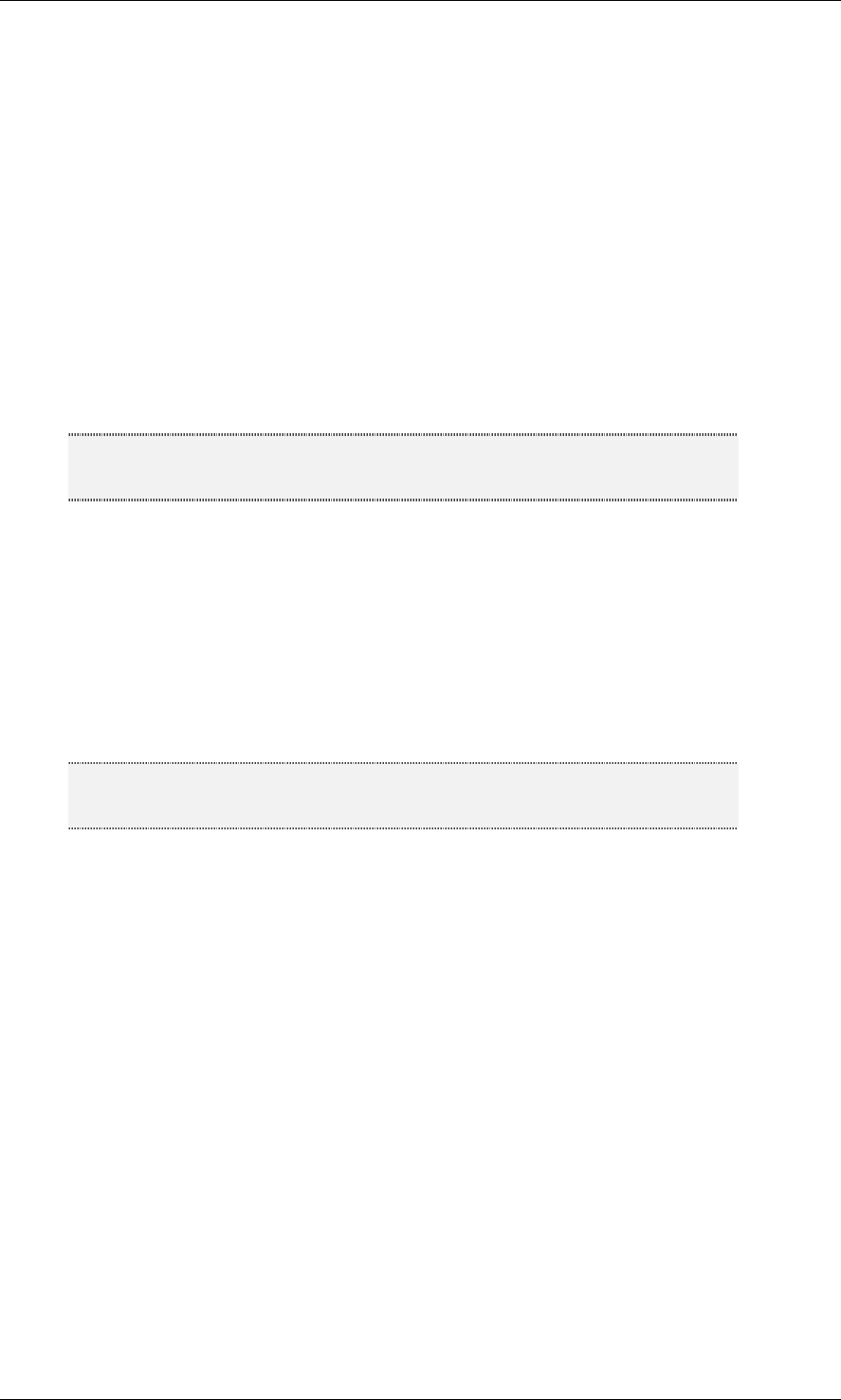
InfoProx Entry Technical Description
The LCD Panel
The two-line by 16-character Liquid Crystal Display (LCD) provides useful card
swipe and diagnostic information, and is vital for configuring the reader. Normally,
the reader will display a message, similar to the following example:
InfoENTRY 16:30
Present card
The address and status of the reader are displayed on the top line, while the result
of the card swipe and the current time are displayed on the bottom line of the LCD.
LCD Contrast Control
The LCD contrast can be adjusted by using the Reader Setup program.
Note See Section 7: Installation; “Setup procedure for the InfoProx Entry
reader.”
Batteries
A PCB-mounted 3.6V rechargeable Lithium battery provides backup power for the
RAM IC. The battery ensures that the database is maintained, even if the reader is
disconnected from the main power supply.
Circuitry is provided to permit trickle charging of this battery from the reader
supply.
Note The charging process for a discharged battery may take approximately five
days.
Software House 63

Technical Description InfoProx Entry
InfoProx Entry PCB
General
Reader electronics are totally encapsulated and therefore, PCB components
cannot be accessed. The only components visible at the back of the reader are
connectors, the tamper sensor, the RS485 terminator loop, and the buzzer. The
following major components of the reader are described in the following sections.
Relays
Each reader has a single dry contact relay that provides a control signal to external
units. The relay is energized through a discrete, EEPROM-controlled switching
circuit, which determines the Relay Idle State.
The Relay Idle State function (when the reader is available for a transaction)
defines whether a relay is:
· Normally Closed - relay energized, opening on a valid card swipe or
power fail, Powered to Secure.
· Normally Open - relay de-energized, closing upon a valid card swipe or
power fail, Powered to Unlock.
The Relay Idle State is configured through the reader setup program.
Note Readers controlling fire exits may be configured Powered to Secure mode,
depending upon local codes.
Tamper Switch
An optical tamper sensor on the board activates when the unit is removed from the
wall, triggering an alarm.
Memory
The reader is supplied with a 512K Static RAM chip (HM628128LP-10 or
equivalent). During normal operation, the IDs of all valid cards are held in RAM.
Details of all transactions that occur at the reader are stored in RAM and can be
downloaded to the workstation when communications are restored.
Interconnections
InfoProx Entry reader is designed for ease of installation and maintenance.
Interface connections between the reader circuit board and external items, such as
the exit reader or door locks, are made by means of connectors mounted on the
back of the unit. The function of each of these connectors is detailed below.
64 Software House

InfoProx Entry Technical Description
Power Connector
Power is supplied to the board via connector J3. Figure 9 shows the layout of the
connections:
1
2
3
4
J3
+
-
Power in
7 - 15V DC
Figure 9: Power Connector with Nominal 12V DC Power Supply
Power for the reader can be supplied locally, using a Door Interface Unit or a 12V
DC power supply.
Reader Inputs & Outputs
For standard door mode the following applies: input 0 monitors door position; input
1 monitors lock status; input 2 is for push button; and input 3 is a spare unit.
However, these defaults can be overwritten.
The reader has one relay, rated at 30VDC @ 5 Amps. In normal door mode, this
relay is reserved for door strike, such as relay automatically fires on a valid card
swipe. The four inputs and the relay output for the reader are connected in the ten-
way Phoenix Contact J2.
Exit Reader Connections
The full exit reader connects to the entry reader through an RS485 port. The
connection is made from connector J3 on the master reader to connector J3 on
the exit reader.
A
B
+
-
J3
Power in
7 - 15V DC
RS485 Data
to/from exit
A
B
+
-
J3
Figure 10: Exit Reader Connections
Software House 65

Technical Description InfoProx Entry
Reader Types
There are two types of readers: Door Readers and Control Post Readers.
Door Reader
1 Master reader (plus an optional full exit).
Application for the Reader
The Door Reader is designed to control and monitor a door/barrier. Input 0 to the
reader monitors the door position (open or closed); input 1 monitors the lock
status; input 2 is used for a request to exit; and the relay is used for the door
strike.
When a valid card is swiped through the read head, the door lock is released for a
time (lockopentime - configurable at the reader). Input 0 is masked or shunted for
a time (doorcloseafter), configurable at the reader to enable entry or exit through
the door.
If the door is still open after this time period has elapsed, the LCD displays a Door
Held Open alarm. If the door is not opened within lockopentime, the reader returns
to an idle state and the card has to be re-presented. A momentary contact switch
can be connected to input 2, allowing the door to be opened from the secure side
without activating an alarm. This is called request to exit (RTE or RTX).
66 Software House
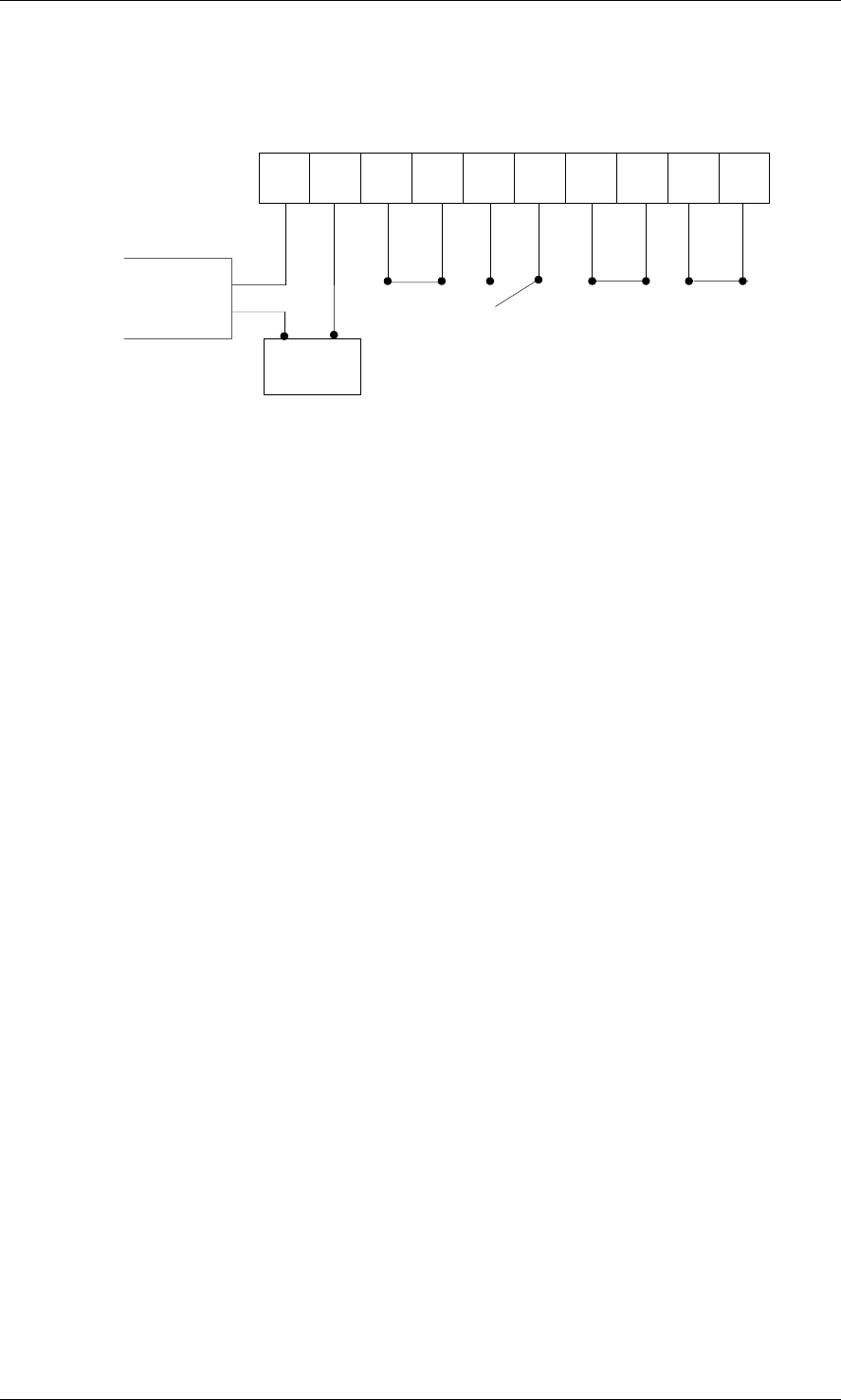
InfoProx Entry Technical Description
The following illustrates the door reader wiring requirements.
J2
+
-
Lock
1098765432 1
PSU
Input_0
Door
Position
(N/C)
Input_1
Lock
Status
(N/C)
Input_2
Push
Button
(N/O)
Input_3
Spare
(N/C)
Figure 11: Door reader wiring
Functional Checks
Use the diagnostic routine to check the inputs to the reader. Input 0 (door position)
and input 1 (lock status) should be ON when the door and lock are closed; these
inputs should be OFF when the door and lock are open. Input 2 should not be ON
unless the push button is pressed.
Control Post Reader
1 Master reader
Application for the Reader
The Control Post reader is designed for use at a manned location, where there is
no physical barrier. None of the inputs are reserved and a valid card swipe does
not fire a relay. The purpose of this mode is to record whether or not a person has
passed this point, providing data for a transaction report.
Functional Checks
Use the diagnostic routine to test the inputs to the reader. When in Control Post
mode, the reader’s four inputs are non-assigned and can be configured as
"normally on" or "normally off," depending on what the input is monitoring. A
diagnostic swipe will show the current state of these inputs.
Technical Support
If you have post-sale technical problems operating the InfoProx Entry Reader or
Software Utility program, contact your dealer. Software House provides a
Customer Support Center, Monday through Friday from 8:00 am to 8:00 pm,
Eastern Standard Time: 1-781-890-2287 or 1-800-392-2873.
Before calling, please check your manual and make sure that the unit is setup and
powered properly. If you still need to call, have the following information available:
Software House 67

Technical Description InfoProx Entry
· Product name and number
· Version
· SPASS number
· Clear description of the problem
68 Software House

InfoProx Entry Glossary
9. Glossary
Adapter Plate: A metal plate used to convert the reader from a European to a U.S.
electrical containment box standard.
Alarm event: Activities such as door held or door forced. Transaction reports contain
alarm events.
Alarm sound device duration: The length of time the sounder will be active if a door held
or forced occurs.
Browser: A computer application, such as Microsoft Internet Explorer or Netscape,
enabling Internet access and the viewing of web pages.
Card event: Cardholder door access and rejects. Transaction reports contain card
events.
Cardholder: A person to which a card number has been assigned.
Cat 5: An Ethernet cable supporting 100mbps, using either unshielded twisted pairs
(UTP) or shield twisted pairs (STP).
Containment Box: A metal box used to contain wires and connectors for light switches,
sockets, or various other devices.
Crossover Cable: A cable with Transmit pin(s) on one end wired to Receive pin(s) on
the other. Sometimes referred to as a “null modem cable”.
Decimal Format: The representation of a numerical quantity using digits 0-9 (base 10).
Door Control Unit (DCU): The InfoProx Reader is a door control unit, providing access
control.
Door Control Unit System: The DCU system encompasses the entry door control unit,
the exit reader, and any peripheral devices, such as the DIU.
Door forced: A forced entry through a door. The door control unit detects a door-forced
condition when the Door Sense Monitor (DSM) activates without a valid card access or
REX.
Door held: A door held alarm sounds after a valid card access if the cardholder holds the
door open after the door open time expires.
Door Interface Unit (DIU): A device designed to connect to a door control unit, providing
additional inputs, outputs, and alarms.
Door open time: The length of time that the door can be open after a valid card access.
The door open time is sometimes referred to as the shunt time.
Door Override: A mode where the door is unlocked.
Door sensing input: An input that monitors the Door State Monitor (DSM) switch.
Software House 69

Glossary InfoProx Entry
Door strike time: The length of time that the lock will be open after a valid card read.
Door State Monitor (DSM): A switch that indicates whether a door is open or closed.
Download: The InfoProx door control unit is the central or controlling device from which
users download data to a backup program on a computer.
Entry Reader: The InfoProx Entry Reader is a door control unit with memory, enabling it
to work as a standalone access control device.
EtherProx System: A system defined by all the components that make EtherProx
function as an integrated door control unit.
Ethernet: The most widely used local area network (LAN), sending its communications
through radio frequency signals carried by coaxial cable to computers in the network.
TCP/IP is the most common software protocol for communication using the Ethernet.
Exit Reader: An InfoProx Exit reader connects to an Entry Reader (either EtherProx or
InfoProx) and serves as a remote access device or as a device on the secure side of a
door used to exit that door.
Extended door open time: Additional time that a door will be shunted. For example, you
can use extended door open time for disabled cardholders or for doors that are meant to
be held open longer such as airport loading gates.
File Transfer Protocol (FTP): A TCP/IP software protocol used to transfer files between
computers.
Gin: Global Identification number.
Global PIN: Global Personal Identification number.
Hardware address: See MAC address.
Hexadecimal Format: Hexadecimal is a convenient way to illustrate binary code values
with a numeric quantity using 0-15 digits and combining 0-9 + ABCDEF as values.
Example: 0025BA .
Hotstamp Number: A number stamped by the manufacturer on the outside of a card. It is
not always equivalent to the card number, which is the encoded system number.
IP Address: Internet Protocol address is the unique 32-bit number that serves as an
address for a node in a TCP/IP network, for example, 172.31.10.20.
Liquid Crystal Display (LCD): A common display technology used by the reader.
Light Emitting Diode (LED):. A display technology that emits light when conducting
current.
Local Area Network (LAN): A communications network that serves users within a
confined geographical area. It is made up of servers, client workstations, and network
operating systems, such as Windows NT or Unix that allow various nodes to communicate
and share data within the LAN. Data transfer is managed by a transport protocol such as
TCP.
70 Software House

InfoProx Entry Glossary
Lock sensing input: An input that monitors a lock sensor that is available on some locks.
Lock sensor: Indicates whether a lock is engaged.
MAC Address: The unique 48-bit address burned into Ethernet and Token Ring adapters,
identifying a specific network card from all others. The address is normally shown as 12
hexadecimal nibbles, for example, 00-50-F9-3A-64-BC.
NO/NC: Normally Open or Normally Closed contacts.
PIN: Personal Identification Number used with cards to allow access.
PIR: Passive infrared switch. Typically used for a REX.
Power to secure: Indicates that a door is locked (secured) when the door strike relay is
powered (engaged).
Power to unlock: Indicates that the door is unlocked when the door strike relay is
powered.
Proximity: A type of reader (read head) that operates without a card actually touching the
reader. The proximity reader uses wireless RF technology.
Reader: The InfoProx Entry Reader is the door control unit; however, reading cards to
allow access is only one function of the unit.
Relock delay time: The amount of time, in seconds, to delay relocking the door after a
valid card access. Sometimes referred to as relock time.
Relock time: see Relock delay time.
Request to exit input: The input that monitors the Request to exit (REX or RTE) switch.
The REX switch might be a pushbutton or PIR. This input is frequently placed on the
secure side of a door to allow egress without a card read.
REX: See request to exit.
Site Code: The site code is an encoded three-digit number that differentiates one set of
cards from another. The site code is embedded by the manufacturer of the cards, usually
at the request of the user.
Sounder: The piezoelectric device at the back of the InfoProx Reader from which sounds
emit, such as alarms or confirmation beeps. This is also called the Sound Device.
Standard door open time: See Door open time.
Supervised input: An input that detects four states: normal, alarm, open circuit, and
short circuit.
Swipe: To swipe a card is to present a card to the reader within the read range.
System Number: The system number is an embedded card number that appears in
hexadecimal format in the door control unit's LCD screen.
Software House 71

Glossary InfoProx Entry
Tamper Sensor: A light-sensing device on the back of the reader that sounds an alarm
when the unit has been tampered with.
Time zone end: Specifies the end time for the time zone type.
Time zone start: Specifies the start time for the time zone type.
Time zone type: Specifies the access type. For example, GIN, Door override, or Card
only.
Transaction: Record of an event logged into a report file. Examples of events are alarms
or actions, such as door access, door forced, or door held.
Unlock time: See Door strike time.
Unsupervised input: An input that detects two states: normal and alarm.
Upload: From the software backup utility on a computer, the user can upload data to the
reader. The reader is the primary and controlling device from which you can download
data to a computer.
72 Software House

InfoProx Entry Glossary
Table of Figures
Figure 1: PC and Exit Reader Connections ........................................................................... 4
Figure 2:Terminal and Power Connections.......................................................................... 15
Figure 3: Exit Reader Connections ...................................................................................... 16
Figure 4: InfoProx connected to exit reader and PC ............................................................ 17
Figure 5: Inputs and Outputs on J2...................................................................................... 18
Figure 6: Typical Connections to a Door.............................................................................. 19
Figure 7: RJ45 Faceplate – Rear View ................................................................................ 20
Figure 8: Common time zone configuration ......................................................................... 32
Figure 9: Power Connector with Nominal 12V DC Power Supply......................................... 65
Figure 10: Exit Reader Connections .................................................................................... 65
Figure 11: Door reader wiring .............................................................................................. 67
Software House 73